June 20, 2021
Martha O'Kennon
.
The flowers are thinning out. All the early Spring crocuses and the Spring Poppies are gone. We're waiting for
August, when the jungle of Goldenrod and the heavenly expanse of Asters will once more thrill the eyes. But the
lowly Fleabane, where last summer we saw some of the battle of Hover Fly larvae and Aphids, is still with us.
The yellow Hawkweed is still in the front yard, and the Common Day Lilies have just started. There are lots more
of them to come for the next few weeks.
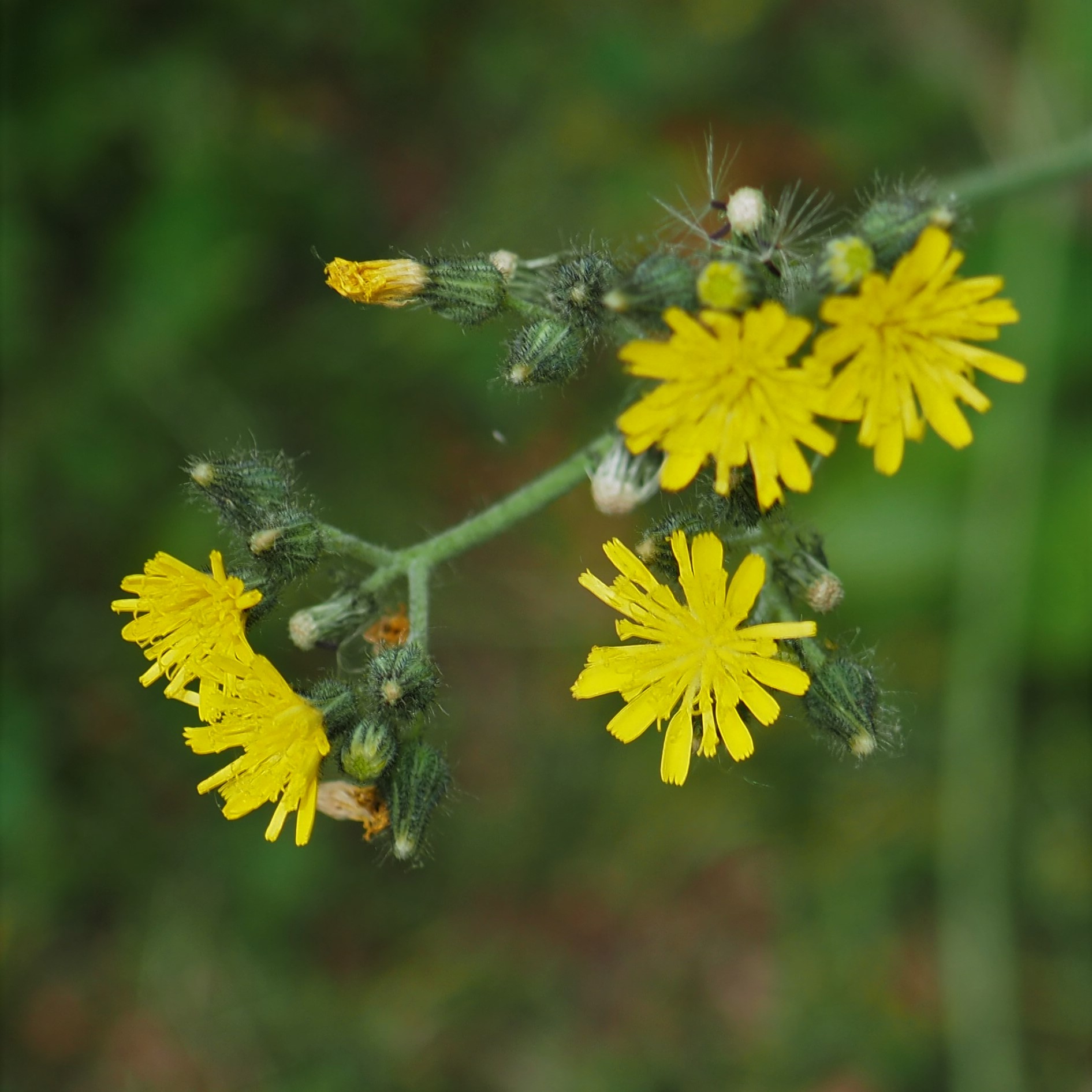
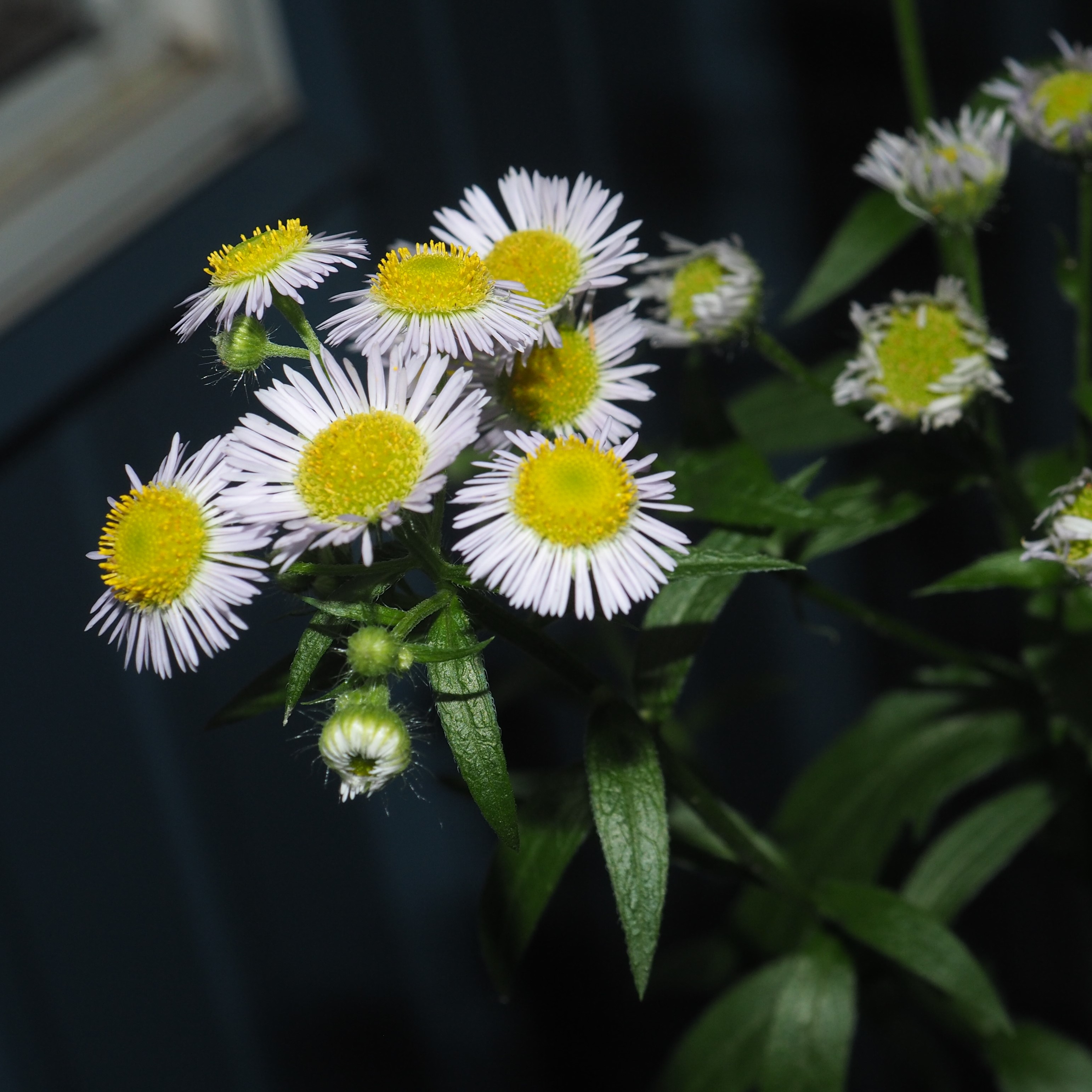
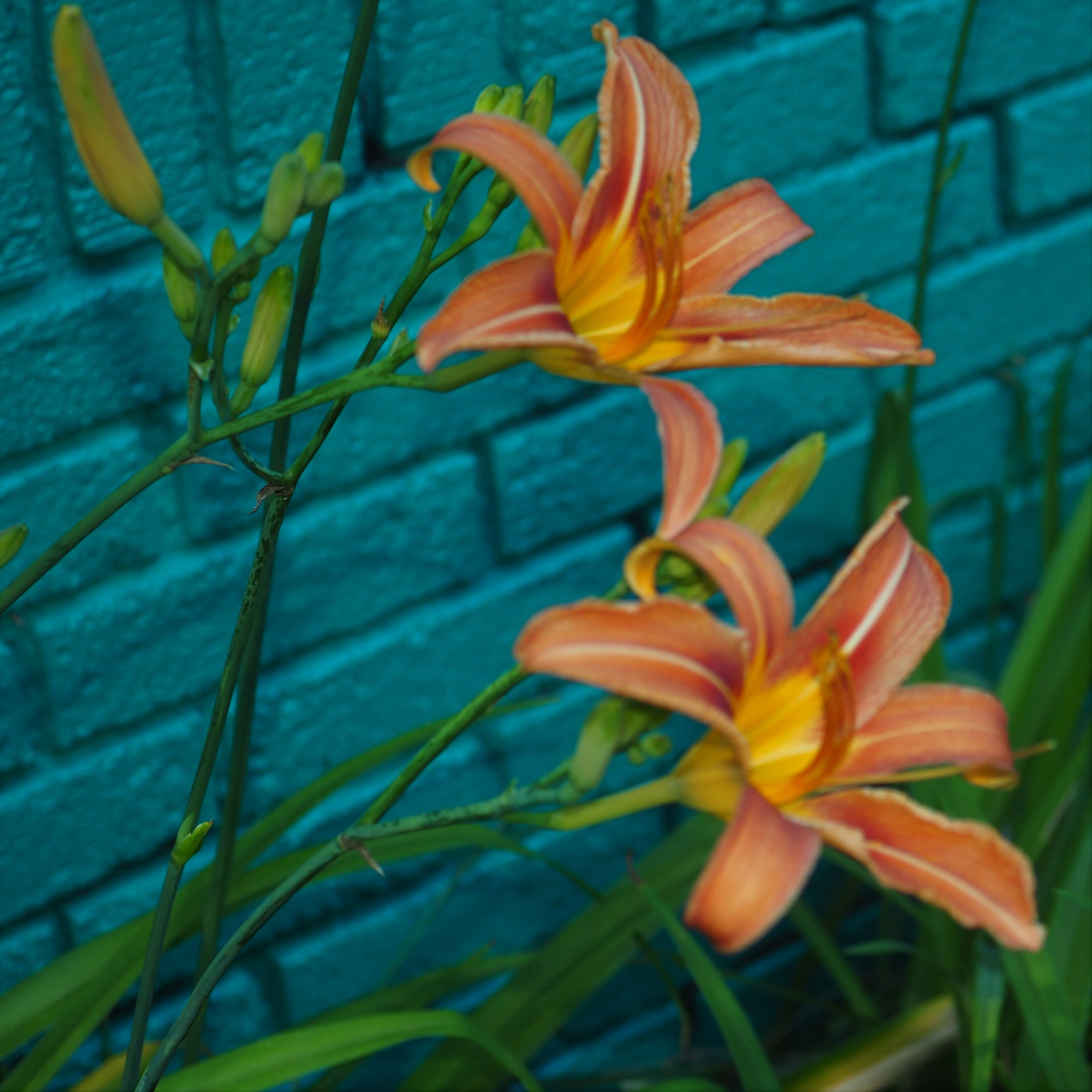
Remember that there is information in the name of the file for each image. You can see it by mousing over the
image - look at the lower left of the screen. Or you can click on the image to get to the (usually) larger image.
Then the info is displayed in the address line above. Sometimes the second click will actually display a
different view of the original image.
The Ants are still hauling delicacies to their nests.. There goes that Smaller Carpenter Ant with another huge
bowl of fruit - on June 13 and on June 17. I'm hot to know where it finds that store of fruit. If anyone
recognizes those berries (or Spider egg balls), please write to me. Meanwhile, a Myrmicine Ant, probably an
Immigrant Pavement Ant, is still pounding the fuzzy pavement of the Goldenrod (or is it Aster?). And a Small Honey Ant is running about on a Redbud leaf.
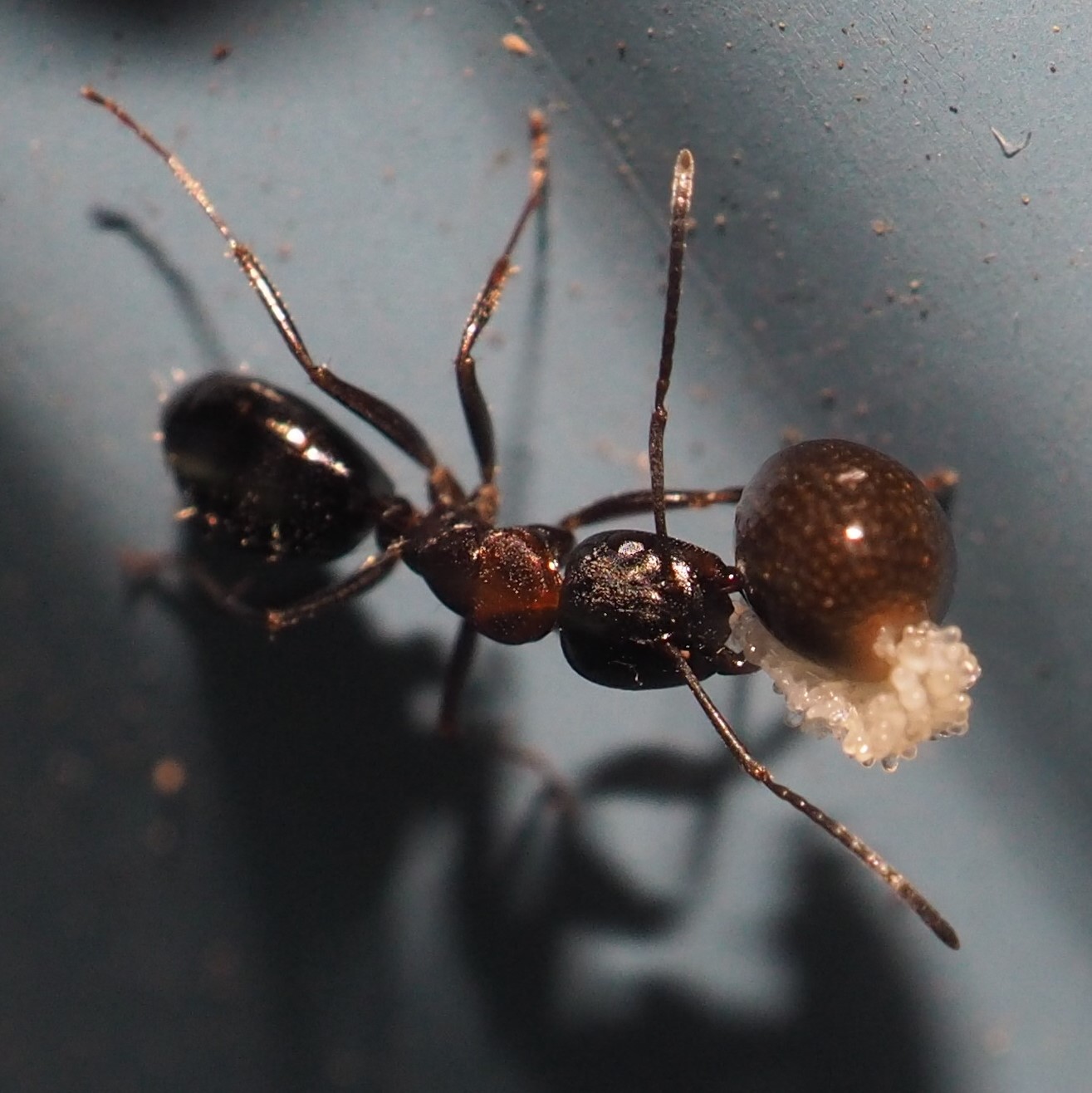
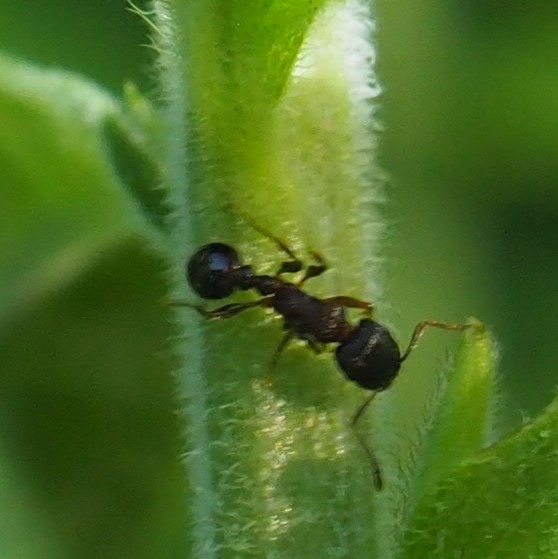
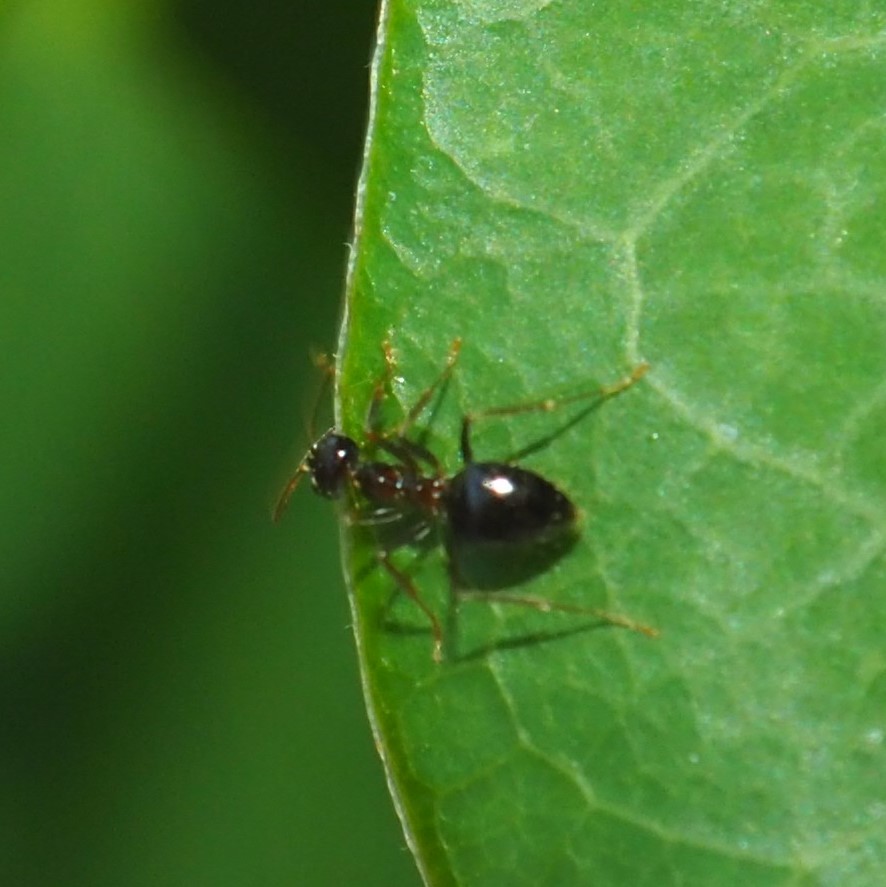
Here is a mystery Ant in the Goldenrod/Aster. The next shows that Aphid that we saw last week. And last is a Wooly Aphid.
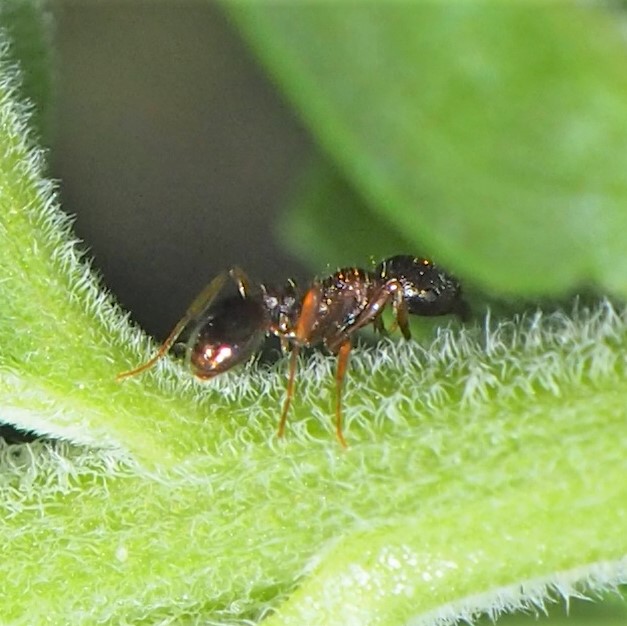
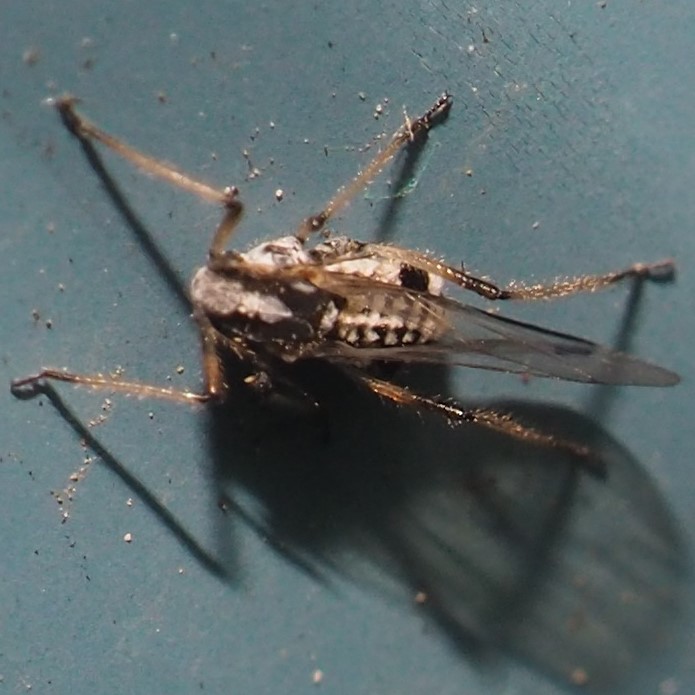

So here we are with the Barklice. You've seen on the Wall the pictures of four or so groupings of eggs that we've been following for weeks, maybe months. Since the ones on panel 9 of the East Wall hatched (except for one, which may no longer be viable) there has been no change in the their appearances, and that's why you are probably happy not to see here today. Instead let's talk a bit about the identification of a few groups. You must remember seeing the newish dozen or so apparently newborn nymphs on the North Wall's panel 10. Over the past couple of weeks, those tiny newborns have grown and spread out as far as Panel 15 to the right. Well, now they have entered a state where they reminded me of a previously known Barklouse, Metylophorus novaescotiae. Now that they have little wings, they are almost identical to some earlier photos of late-instar Nymphs and Adult M. novaescotiae. See, for example, this diary. So we have gone from this first picture to the second, in which the wings are quite advanced and expect soon to reach adulthood, as in this picture from 2019. So I consider this case solved!
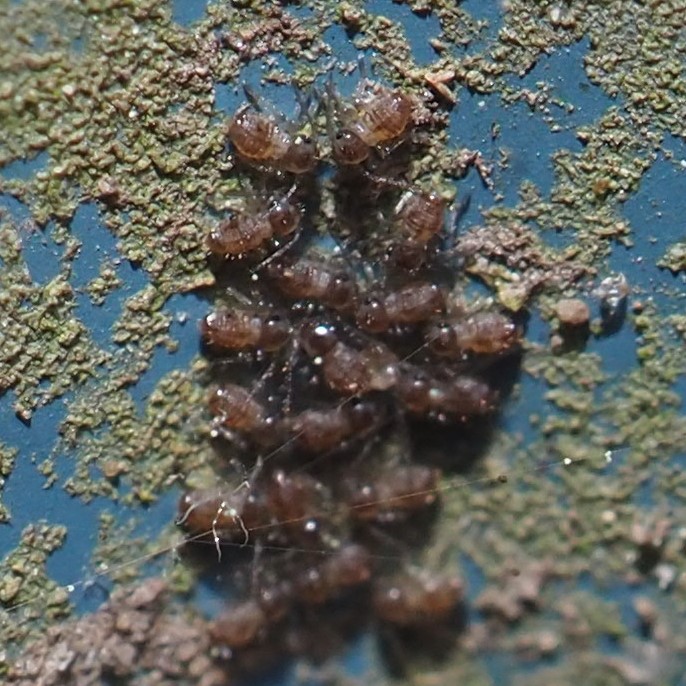
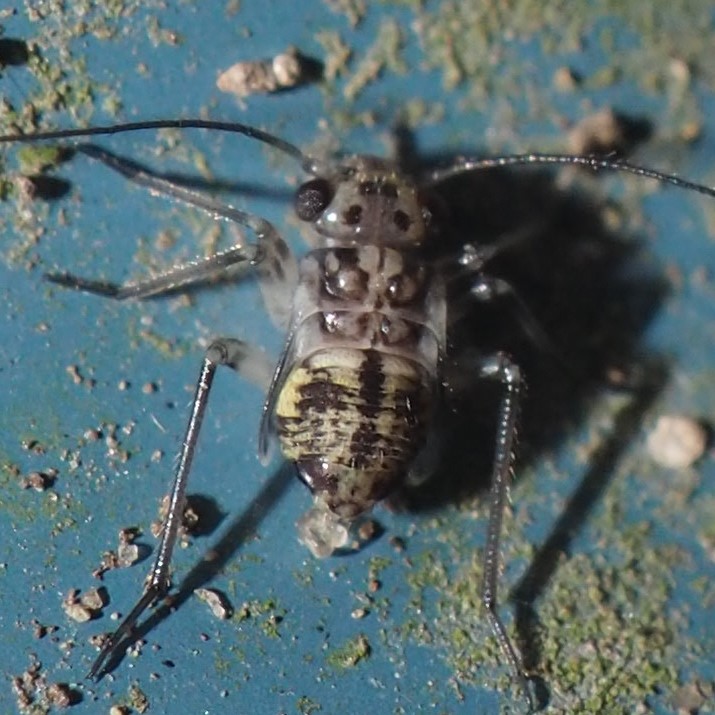
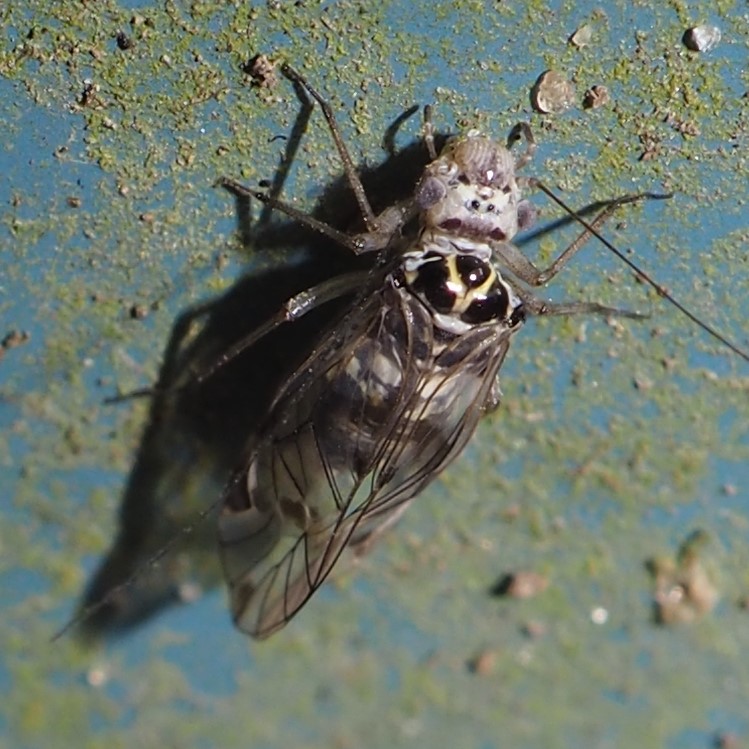
Let's now look at our beloved Ectopsocus meridionalis. They have become very present on the South and East Walls, and have been for some days laying quantities of eggs. Unlike the ones who got me interested last Fall, these seem to lay the eggs and then having done so, they walk away from the egg masses. There are probably a dozen such "nests".
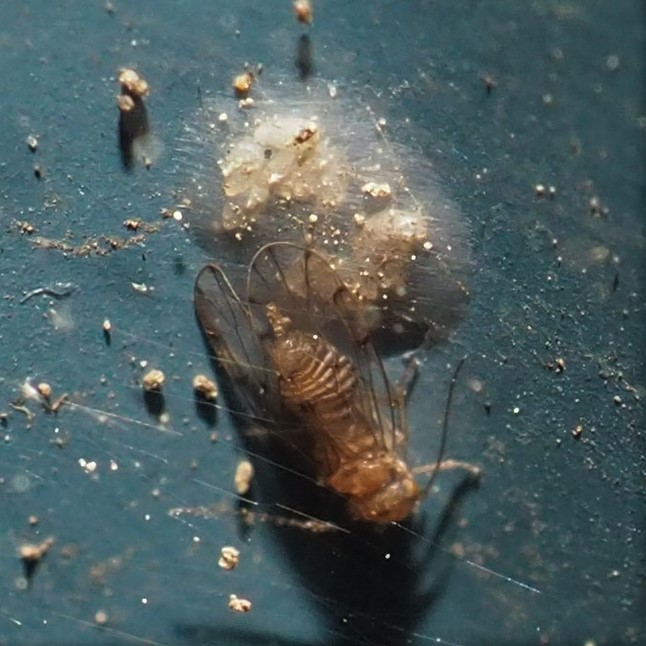

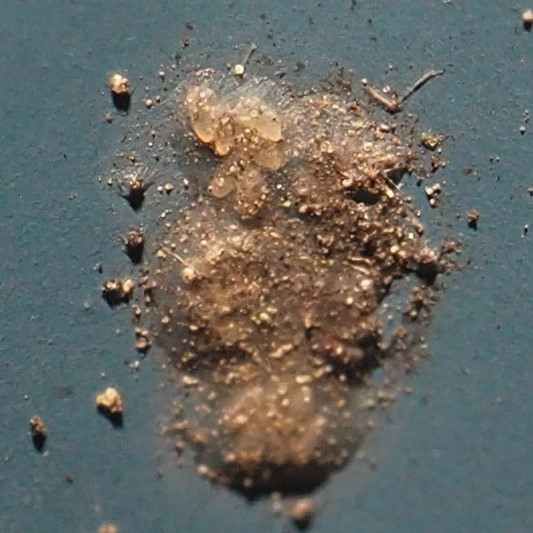
After some eggs have been laid, the mother moves quickly around the batch of eggs, coating them with a thin protective layer. This is what looks like a fluffy layer afterwards.
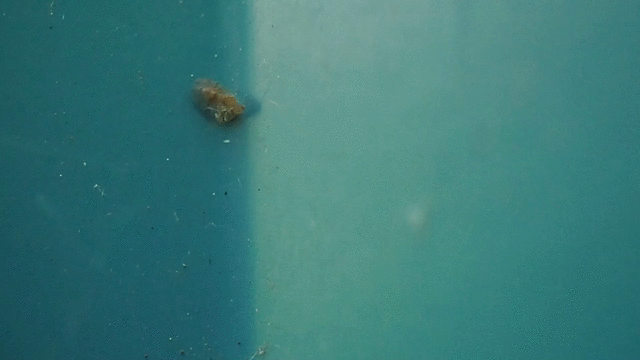 The mothers must now be quite hungry. From June 13 to June 15, this one has discovered and thought tasty enough to nibble on a lovely array of tiny ping-pong ball-shaped eggs, probably of one of the Stink Bugs or relatives. I have been hoping that now that she has eaten a very few and wandered away, that now I could watch for the babies to emerge from the eggs. More later.
The mothers must now be quite hungry. From June 13 to June 15, this one has discovered and thought tasty enough to nibble on a lovely array of tiny ping-pong ball-shaped eggs, probably of one of the Stink Bugs or relatives. I have been hoping that now that she has eaten a very few and wandered away, that now I could watch for the babies to emerge from the eggs. More later.
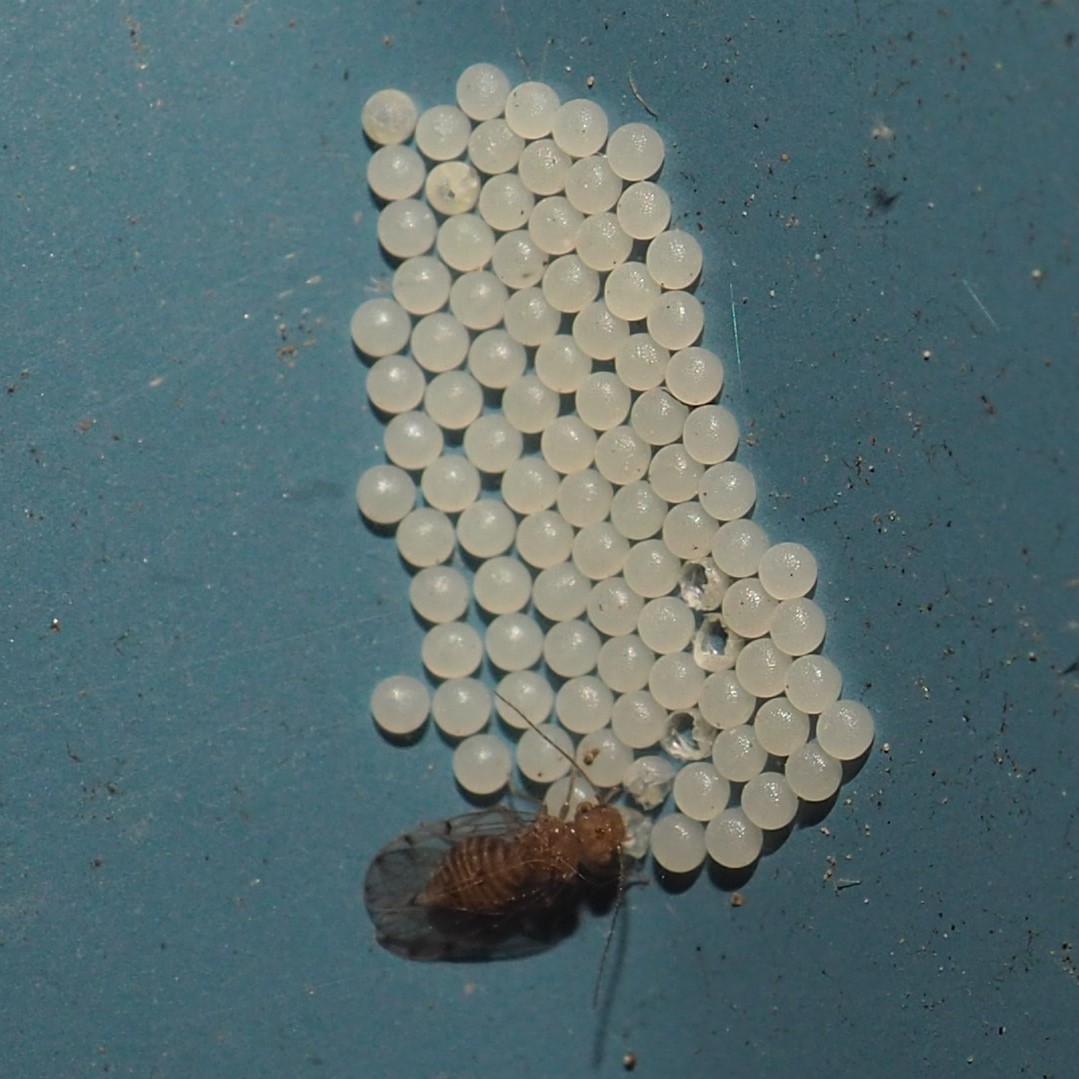
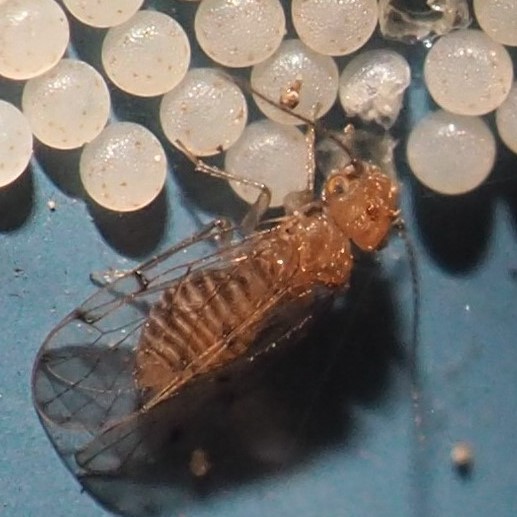
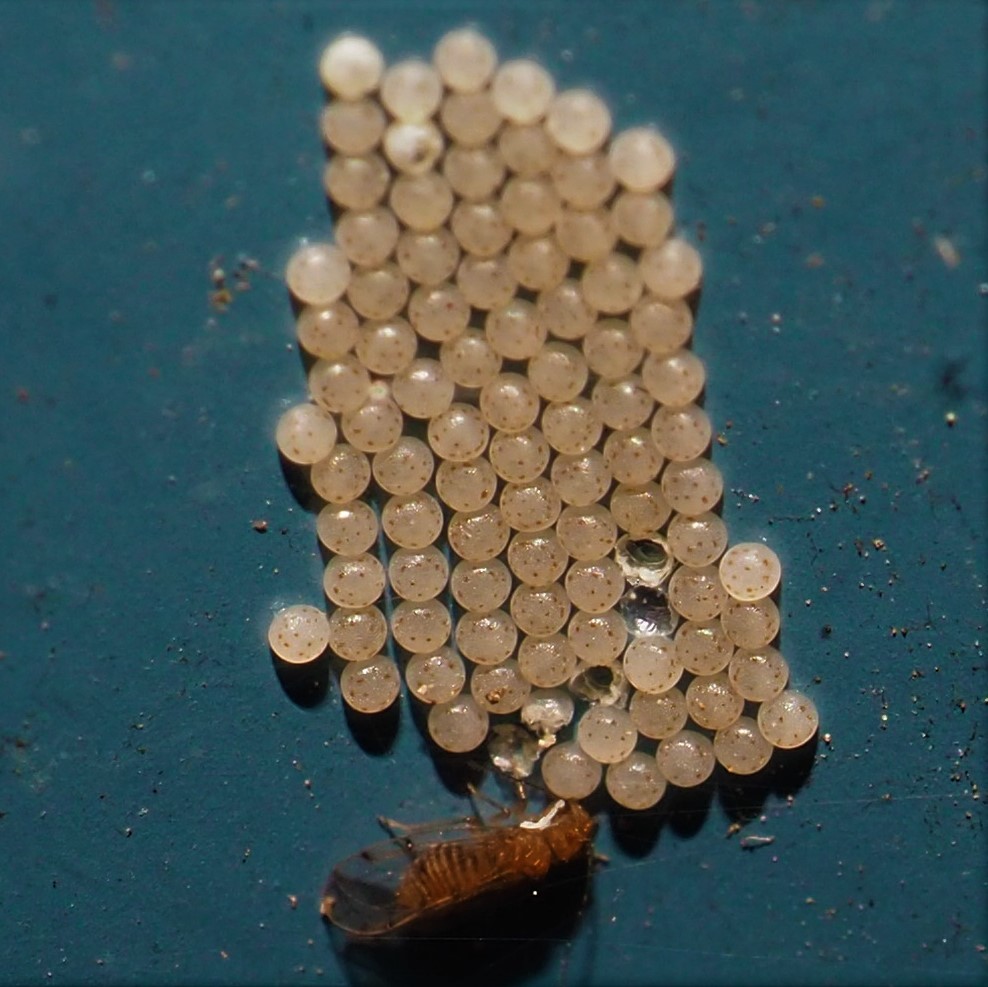
A week or two ago we discovered that the Polypsocus corruptus had emerged without our even seeing any nymphs. Here are a female and a male P. corruptus. Just in case you want refreshing about how we figured out which nymphs were baby P. corruptus, here is a picture of one.
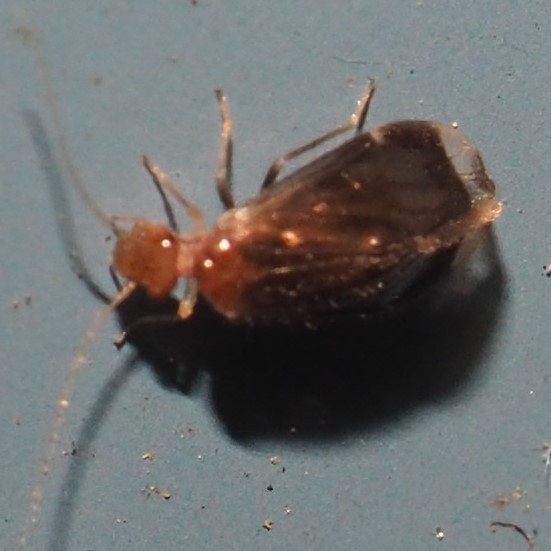
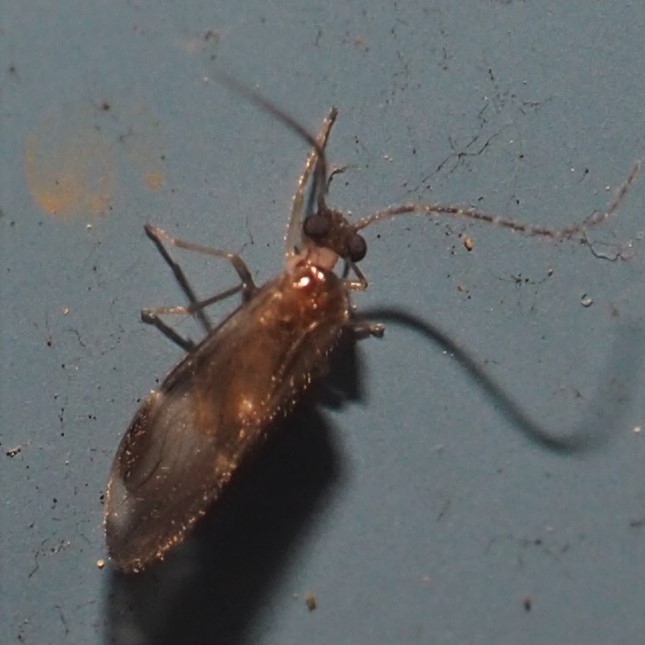
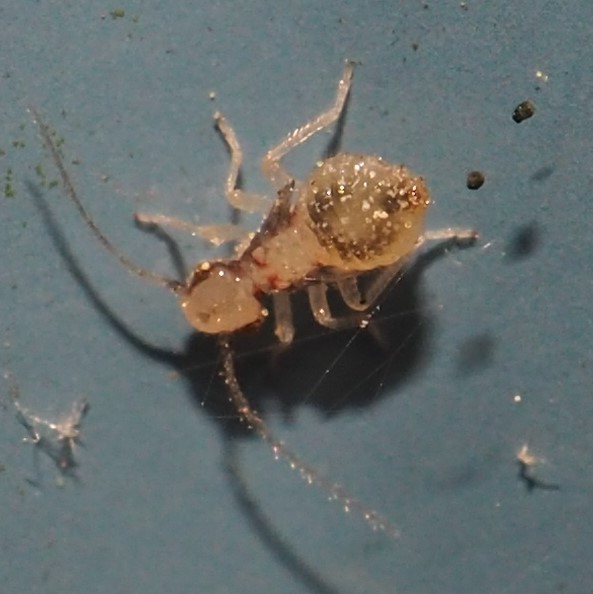
Another Barklouse nymph that is beginning to be visible here is Echmepteryx hageni. Here it is, on June 16 and 17. Here is an adult that we saw in July 16, 2020.

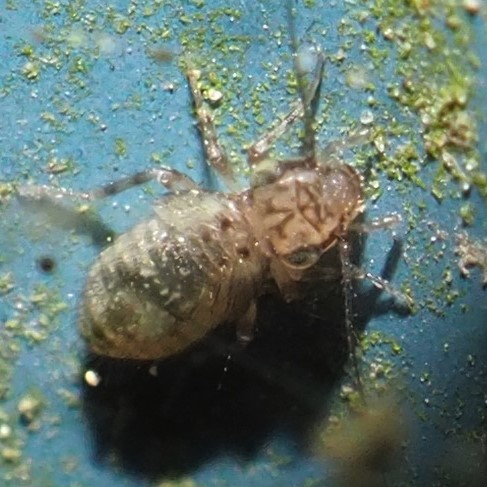

No Bees? How about Beetles? This first one is the Dogwood Twig Borer, Oberea tripunctata. Next is the larva of the Asian Lady Beetle. Third is, surprisingly, also the grub of an Asian Lady Beetle! Fourth, believe it or not, is a variation on the Asian Lady Beetle, which can come in any number of spots, including a couple of very tiny ones.
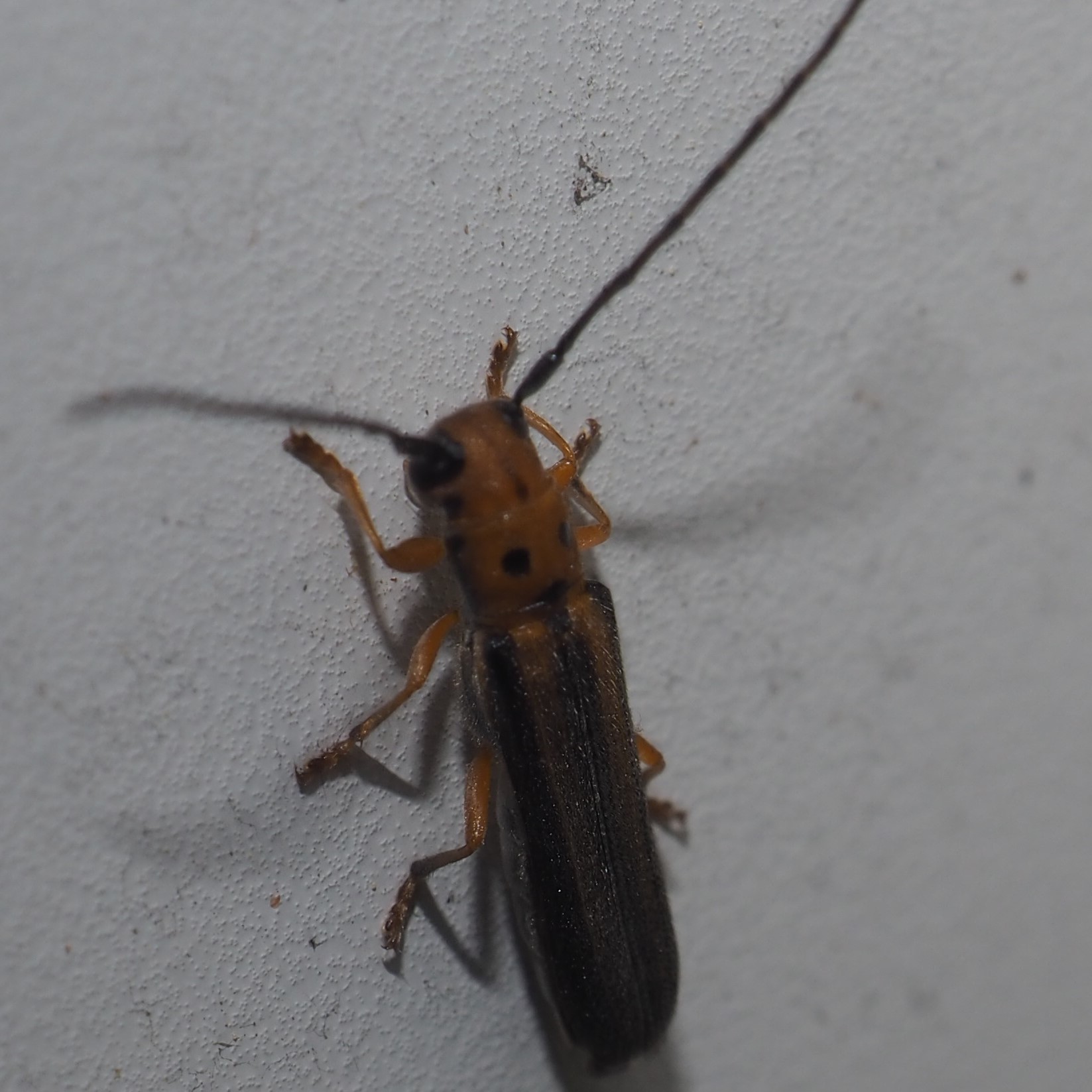
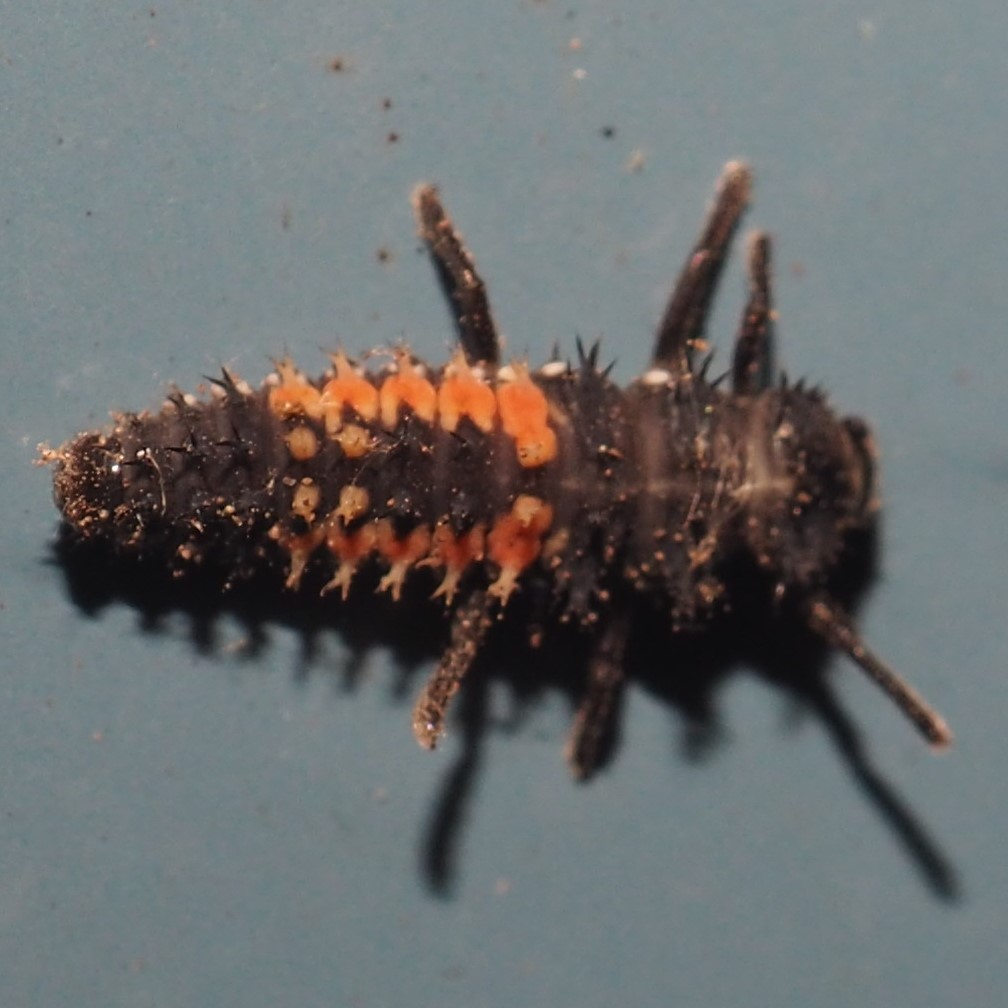
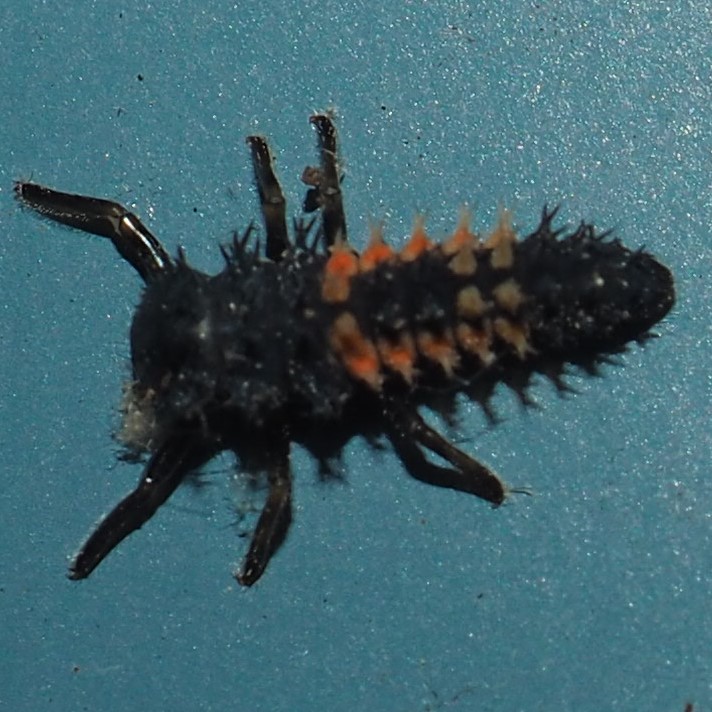
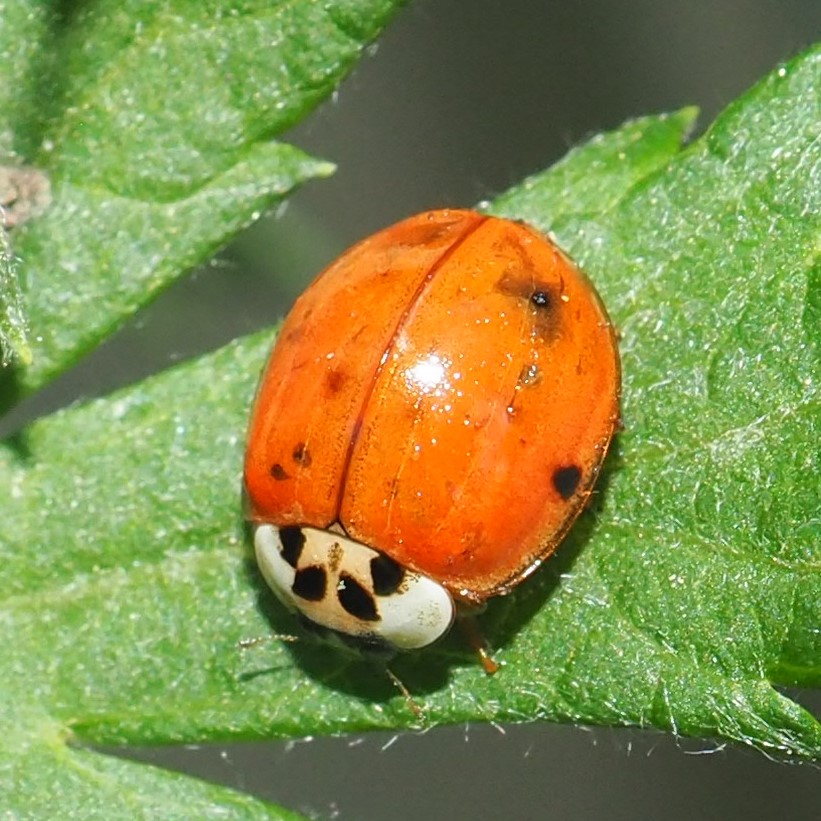
Here are two Click Beetles of the same genus Cardiophorus but probably different species. Third is a pretty little beetle named Ampedus areolatus.
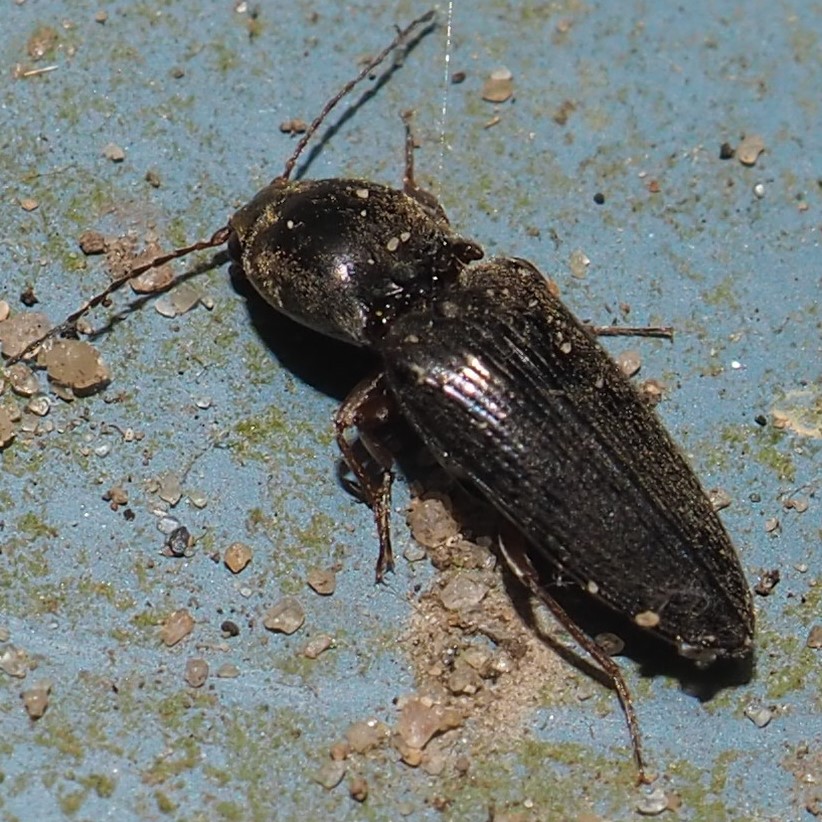


Let's just say hi to some new old friends. First off is that Weevil, Ceutorhynchus inaffectatus, famous for its love of that sweet Dame's Rocket. It has been a faithful customer for almost a month now and so we probably won't see much of it again, though next year its children will reenact the story. I wonder how much longer we will be able to see the lovely Immigrant Green Leaf Weevil? Third is a new friend, a good-sized Beetle covered with large (for mites) mites. Wonder what they are? The Beetle is called Monarthrum mali.

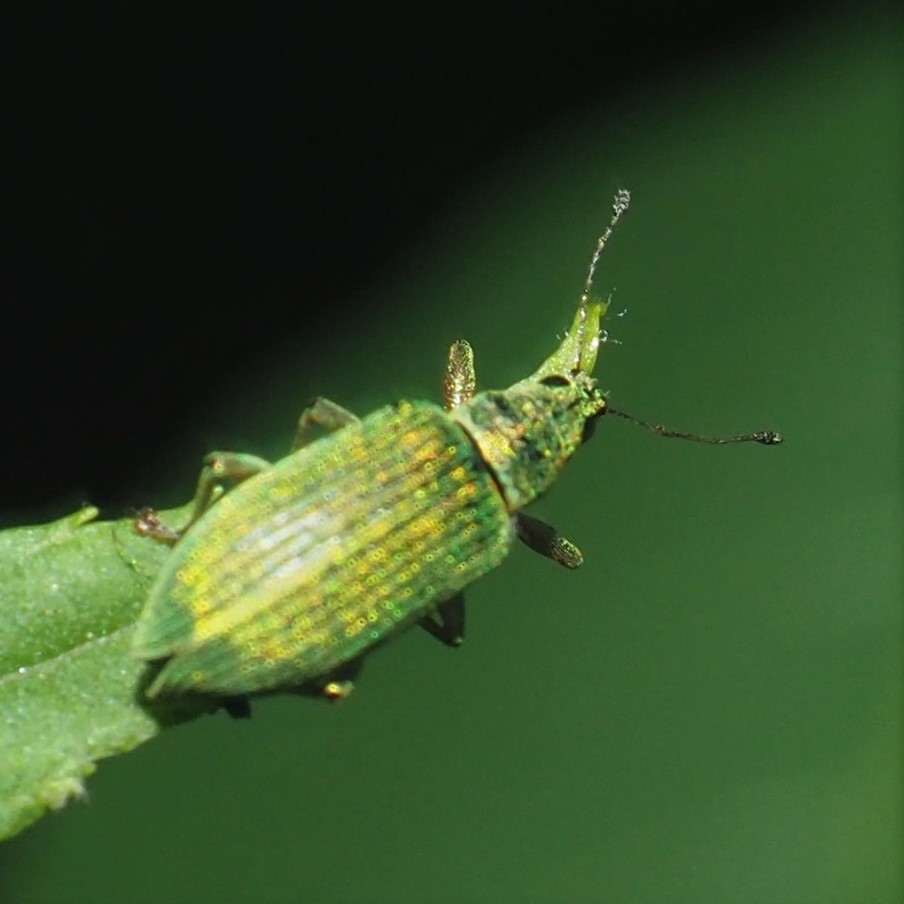

Our Bugs are also being seen more. Of course, we start off with the Assassin Bugs. Only one species was out this week (at least I only saw the one species, Zelus luridus). Usually, I try to bring out the Leafhoppers next. I don't know why, except that they are so bright and colorful, like little jewels on that blue steel shop siding. But nowadays, we're also seeing them on the plants. First is that Agallia genus that has been so plentiful this Spring. This one is either A. quadripunctata (four spots) probably named for the four spots headband on its forehead, or maybe A. constricta, which is very hard to distinguish from the former. Next here is Eratoneura ardens (burning), named for the dark patch on the back of its neck.
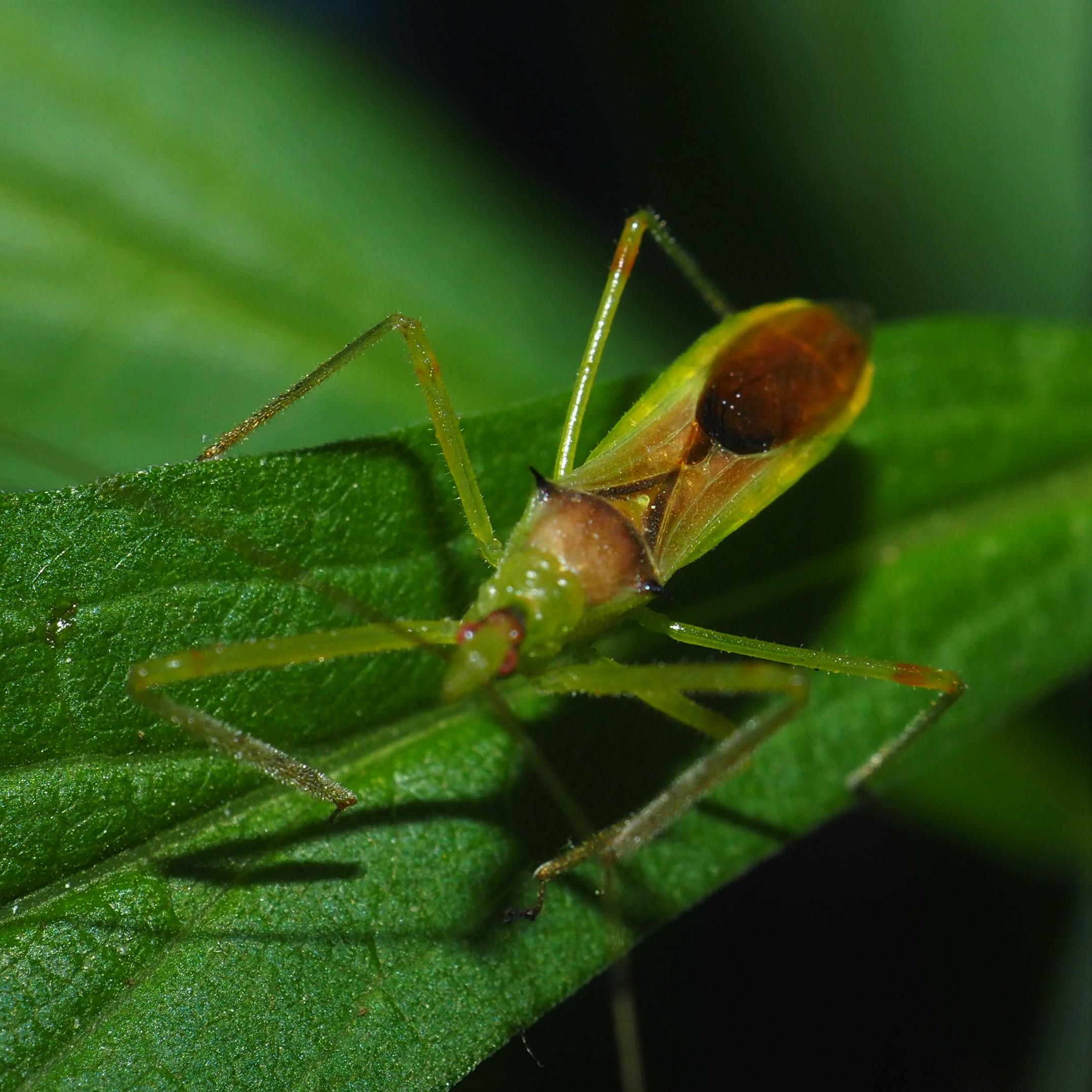
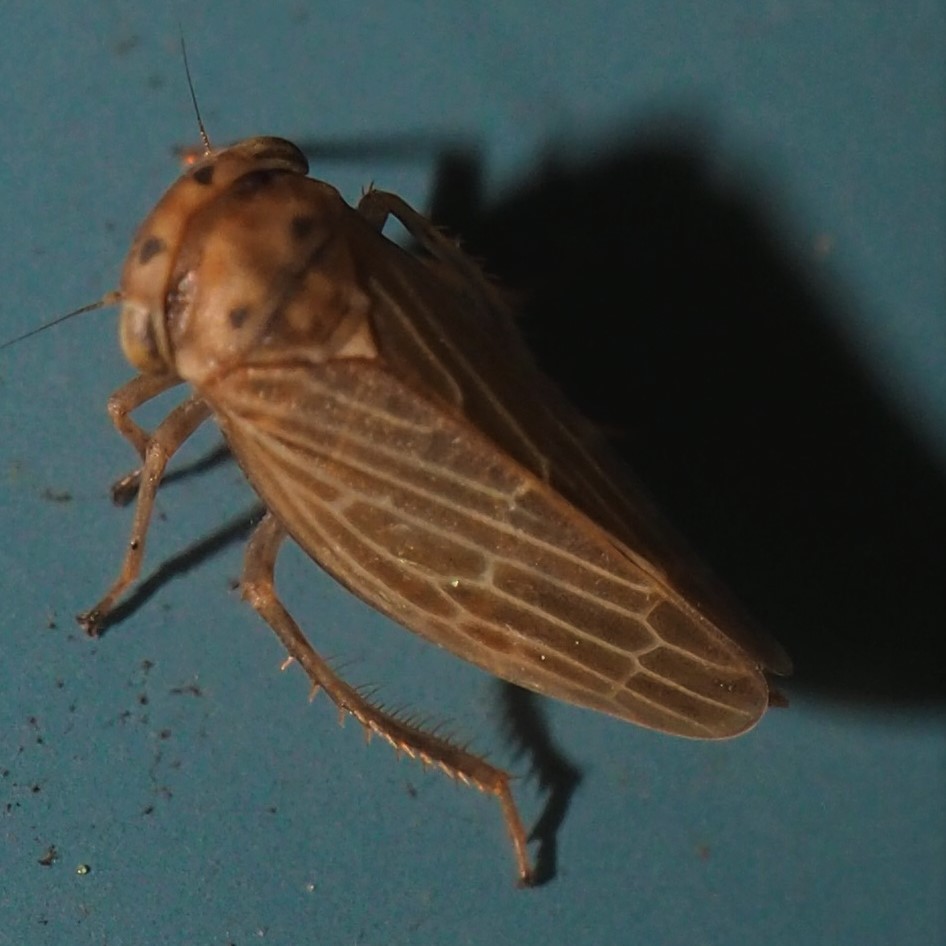

The leafhoppers in the order Graphocephala (written in its brain) are so attractive, and they've begun showing up on the plants, especially on the Goldenrod and Asters (picture 1). The next nymph is probably also a nymph of Graphocephala. Let me fill you in on the mental reasoning there. There is a nymphal instar in which the wing starts out with a streak of red on its otherwise white body (picture 3). I believe there is also an earlier instar (picture 2) which has yellow near where the other has red. I must check this with an expert on iNat.

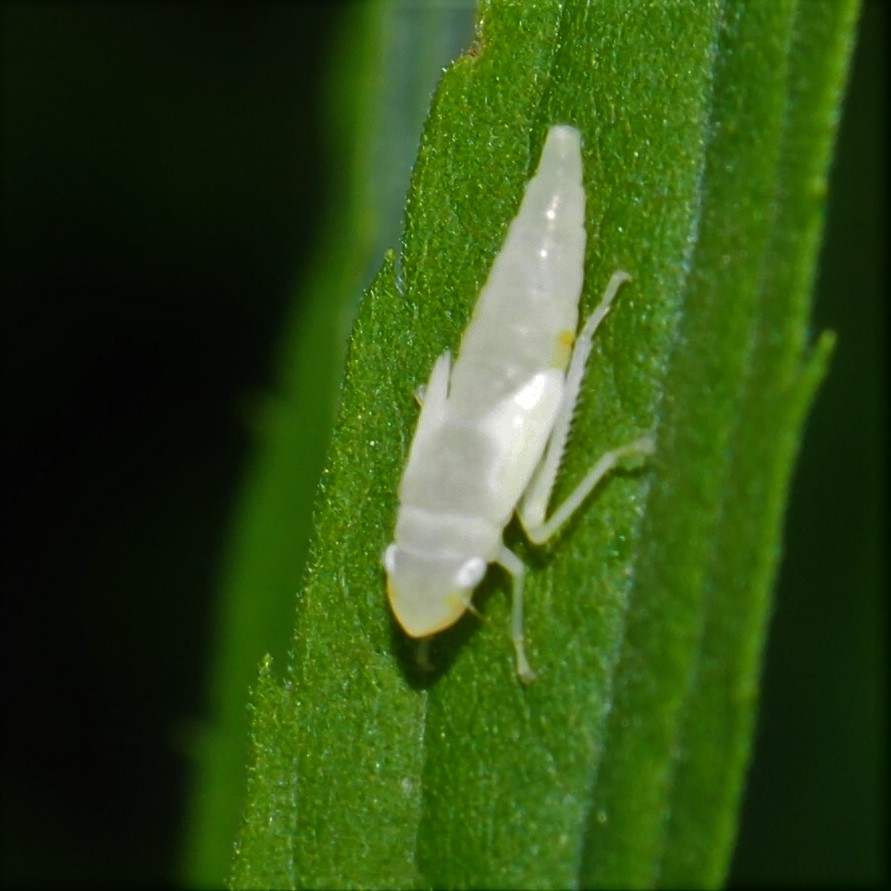

This first leafhopper is the Japanese Leafhopper, with its lovely mosaic in shades of orange and gold. Now there is also a Japanese Maple Leafhopper, which is quite another species. I haven't seen it yet but it will look like picture 2, and is one of the most strikingly beautiful creatures in this world. Meanwhile it is in the nymphal stage, and it may seem impossible that an adult and its nymph (picture 3) could look so different. But there is something that I noticed in the winter when I was preparing this part of my AALL class on Backyard Biodiversity. Look at both their faces, especially the eyes. Don't worry about the blue wings on the adult and the pointy body of the nymph. The faces are almost identical!
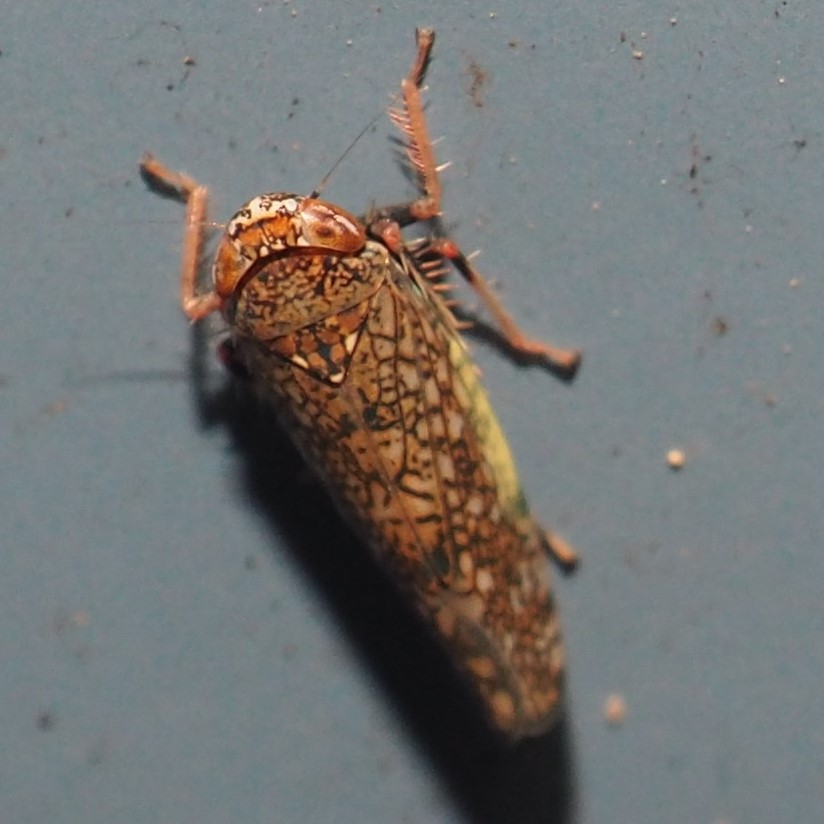
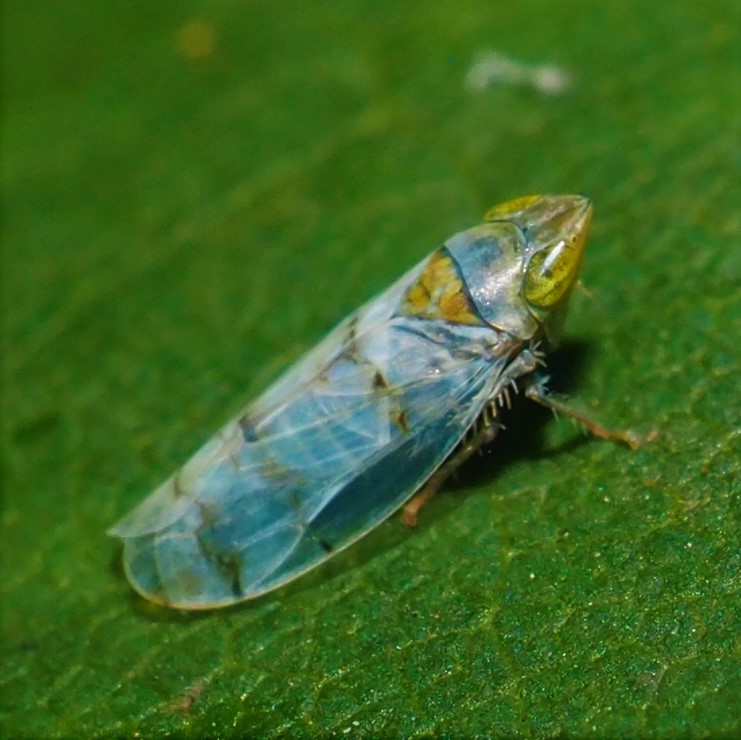
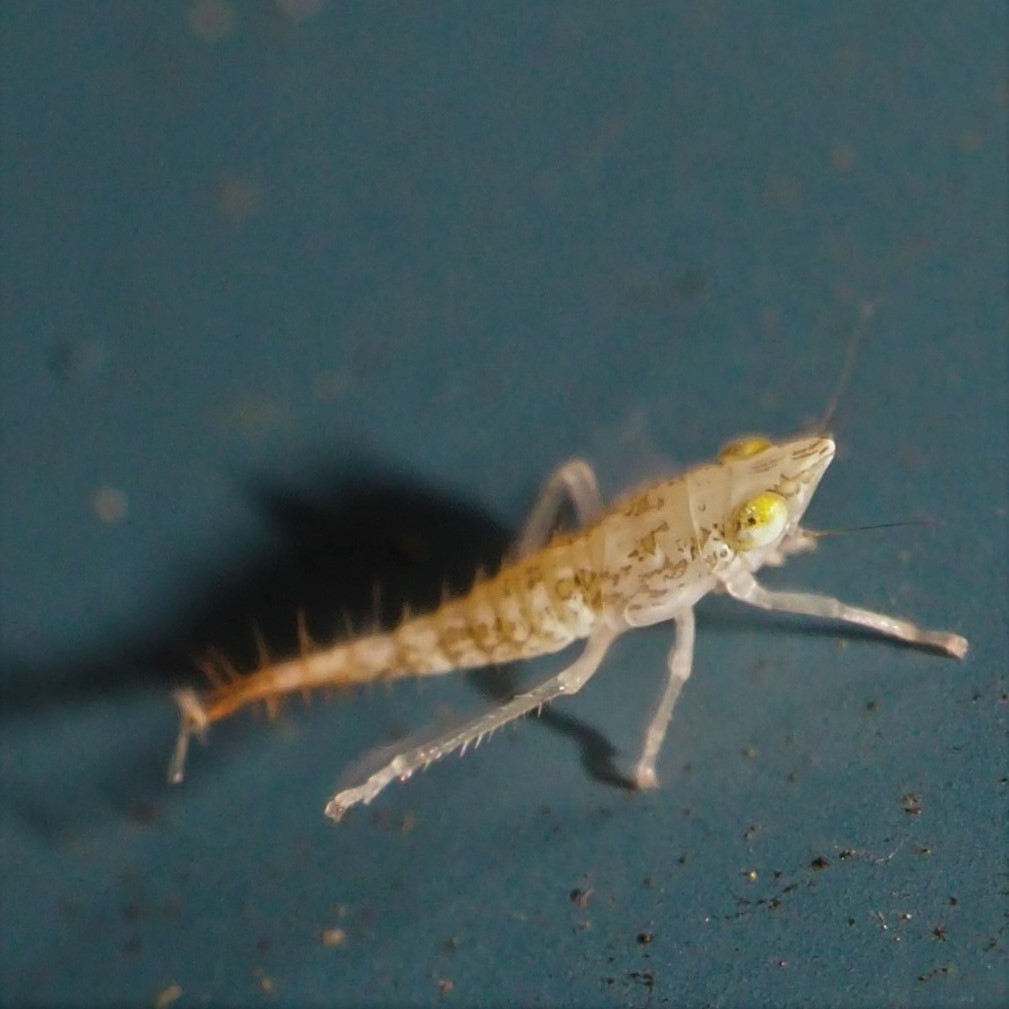
First, one more strange-looking nymph - this time of Jikradia olitoria. It has a retroussee tail. Later we'll see the nymph of the Japanese Leafhopper, and see that it also has that tail feature, but is a different color pattern. Lastly, here are two individuals of the genus Scaphoideus. When I first compared them, I thought I saw a myriad differences between them. Now I'm thinking they are of the same species, whatever it is. Do YOU see any big differences?


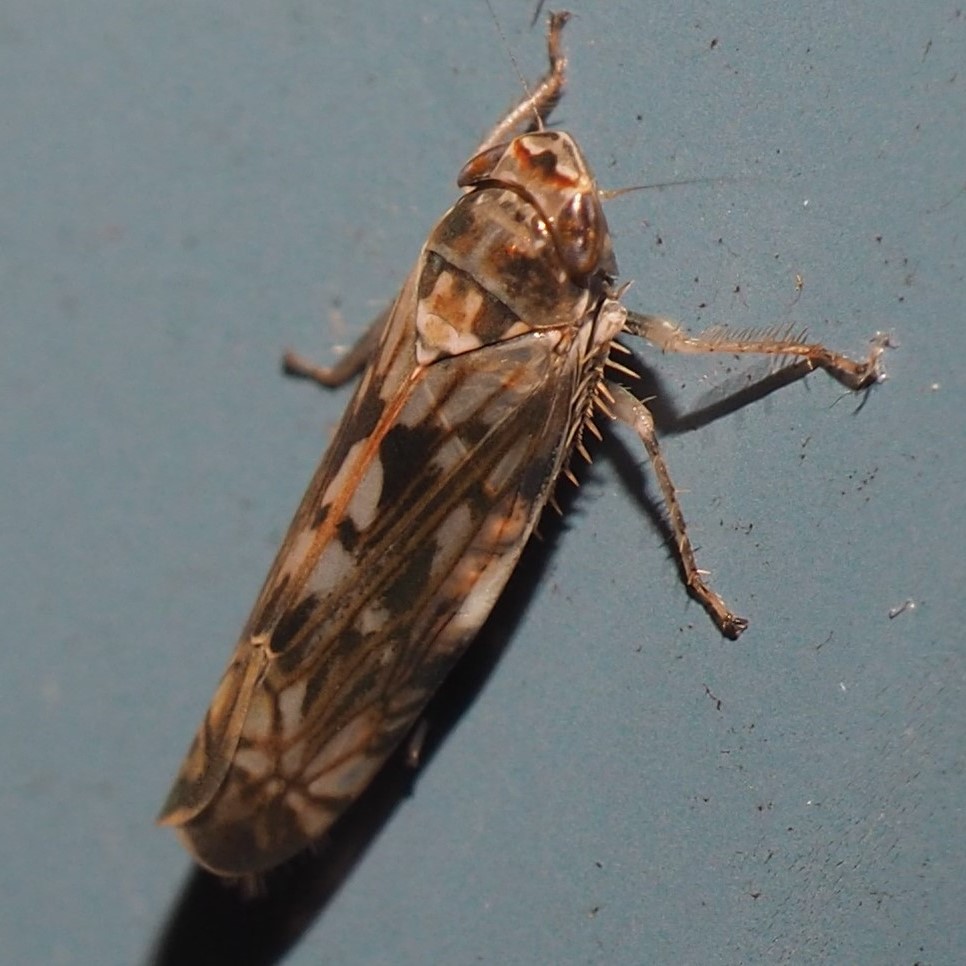
While we are in the Hoppers, let's look at the Treehoppers - the Two Mark Treehoppers in particular. This week I've begun to see adult Two Marks, so we can compare the adult with the older nymphs. Last week we noted that the "thorn" on the head of the nymphs is stretching out with each instar. Picture 1 shows some nice big nymphs; in picture 2, we have moved back so that you can see the nymphs on the same stem as an adult. And finally, a larger picture of the adult, who is still slightly purplish after its moult into adulthood. Except for the two yellow marks, the rest of its exterior will be solidly black. Check out the bright red eyes on both.
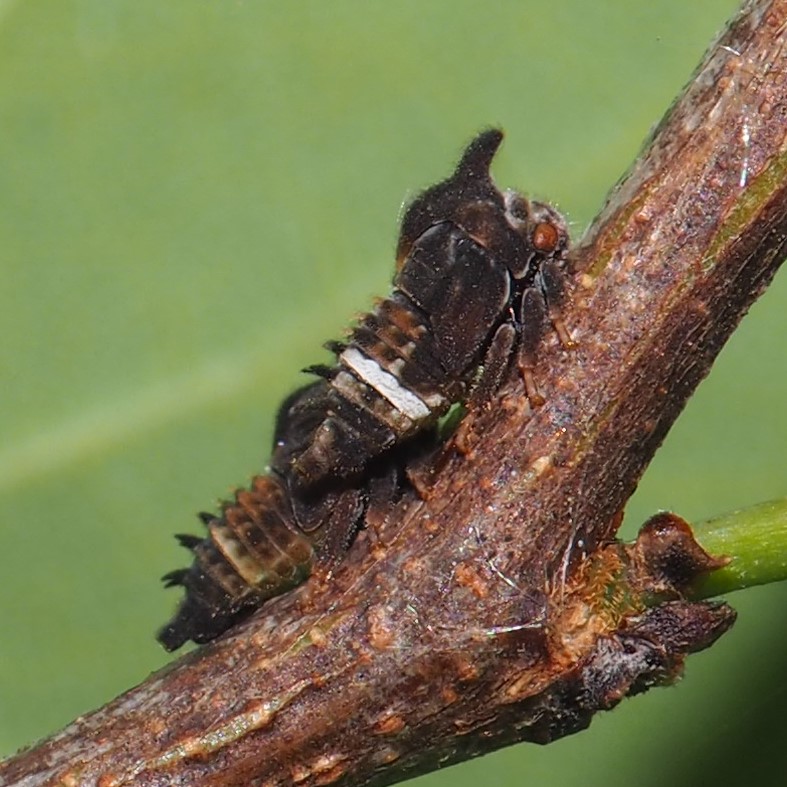
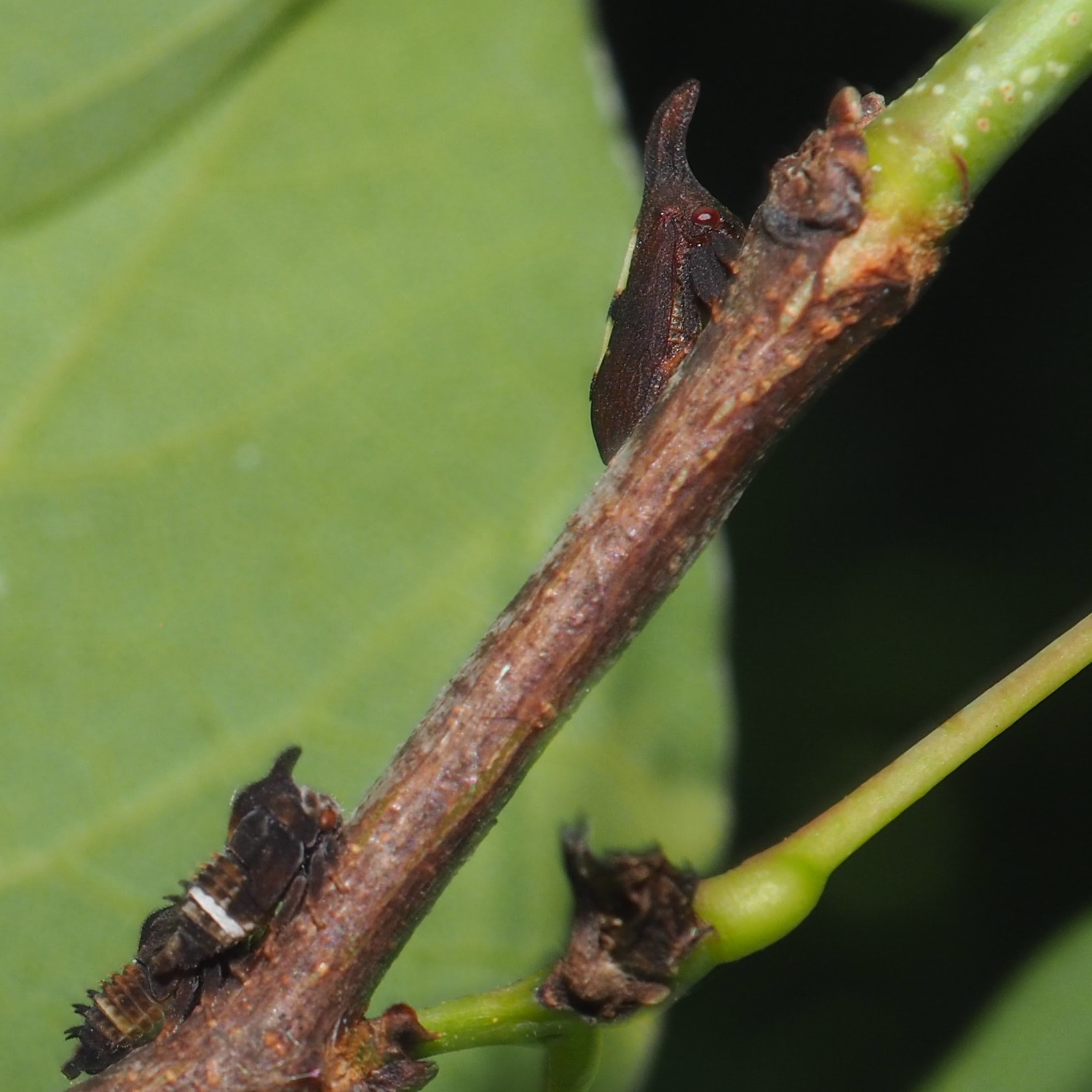
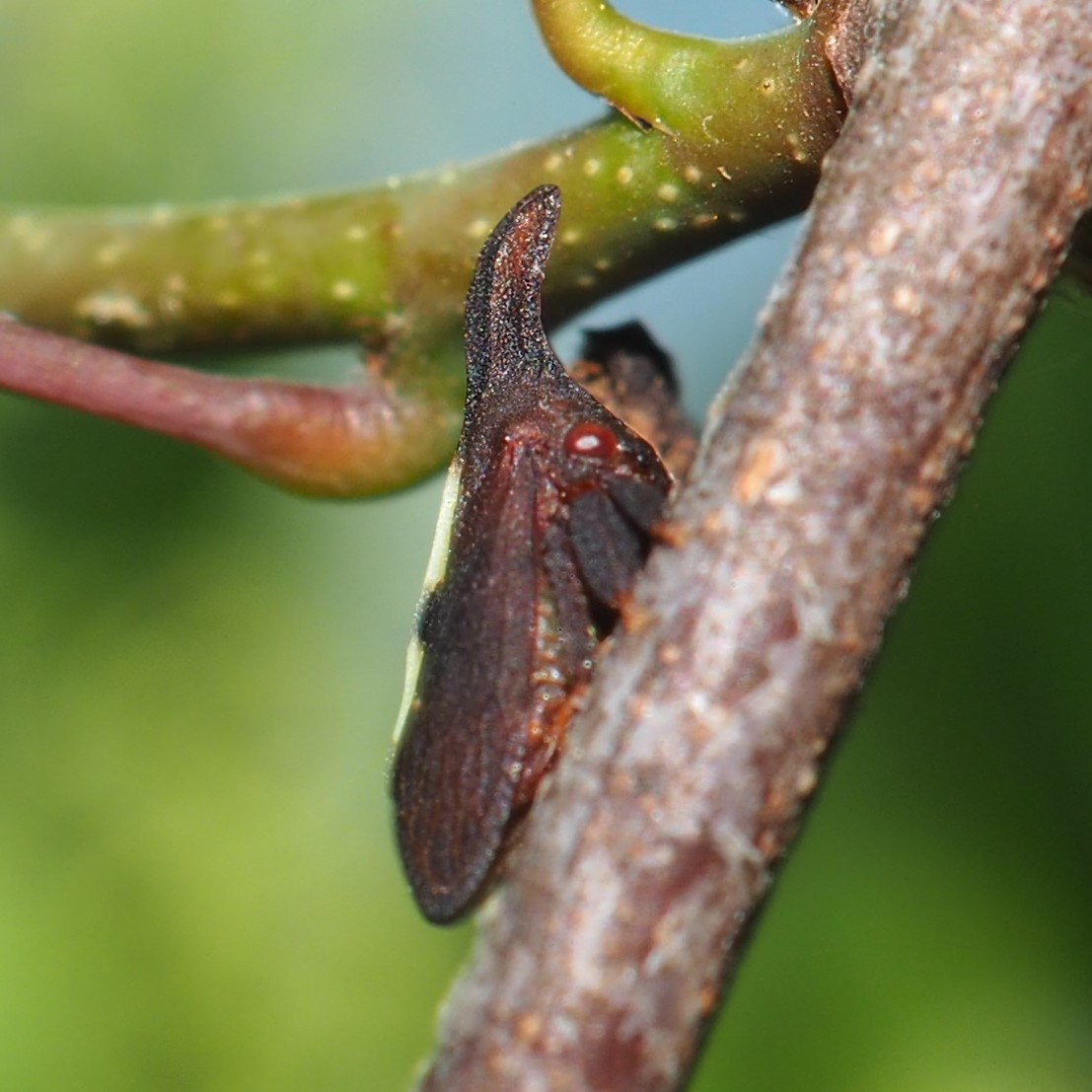
Now let's look at few more kinds of Bugs. Here is a nymph that looks like some nymphs we've seen of Stink Bugs. Next, we see an Obscure Plant Bug. I've gotten to be rather fond of the subtly colored pattern on its wings. Another Plant Bug is this thing that looks like a Lygus Bug.
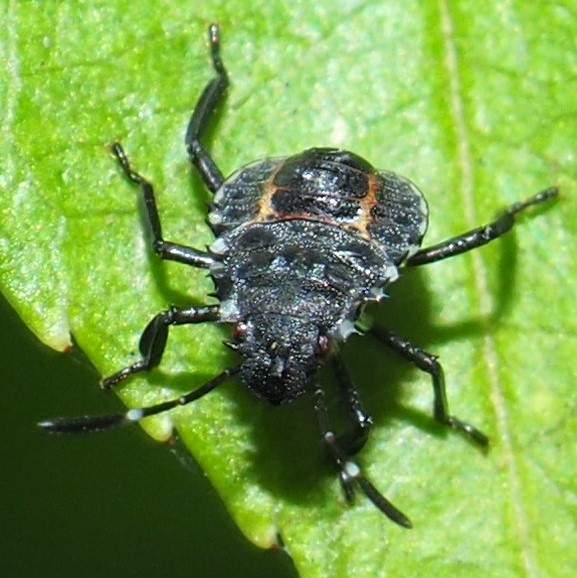

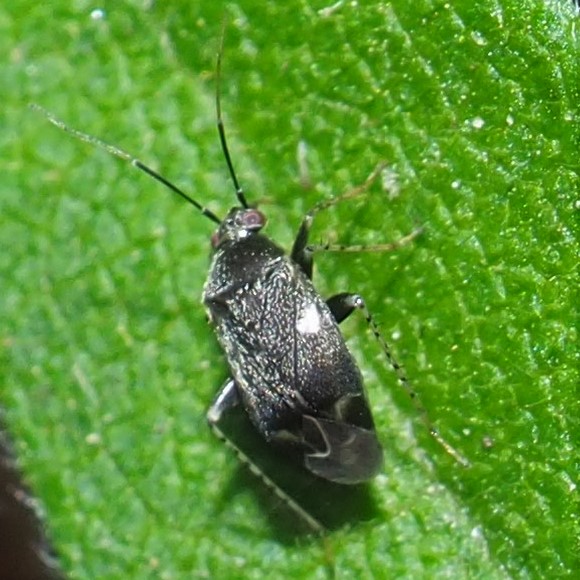
Another kind of Plant Bug is in the genus Phytocoris. These bugs are very attractive as nymphs, and extremely hard to identify from the nymph what its adult form will look like, and hence very hard to identify. This is the second year in a row that we've seen this one that looks as if someone traced a pretty pattern onto it with a bright red ink pen. Now I've always thought that Plant Bugs were vegetarians, but look at this sequence.
Here the pretty little Bug is just arriving after the departure of the Barklouse that had eaten five or six eggs, maybe just sizing up the possibilities. It likes what it sees and loves the taste. This montage begins on June 16 and ends up on the 18th - empty. I had so wanted to follow those eggs and see what would hatch from them. But this was not my call. We need to see how closely the various parts of Nature work with each other.
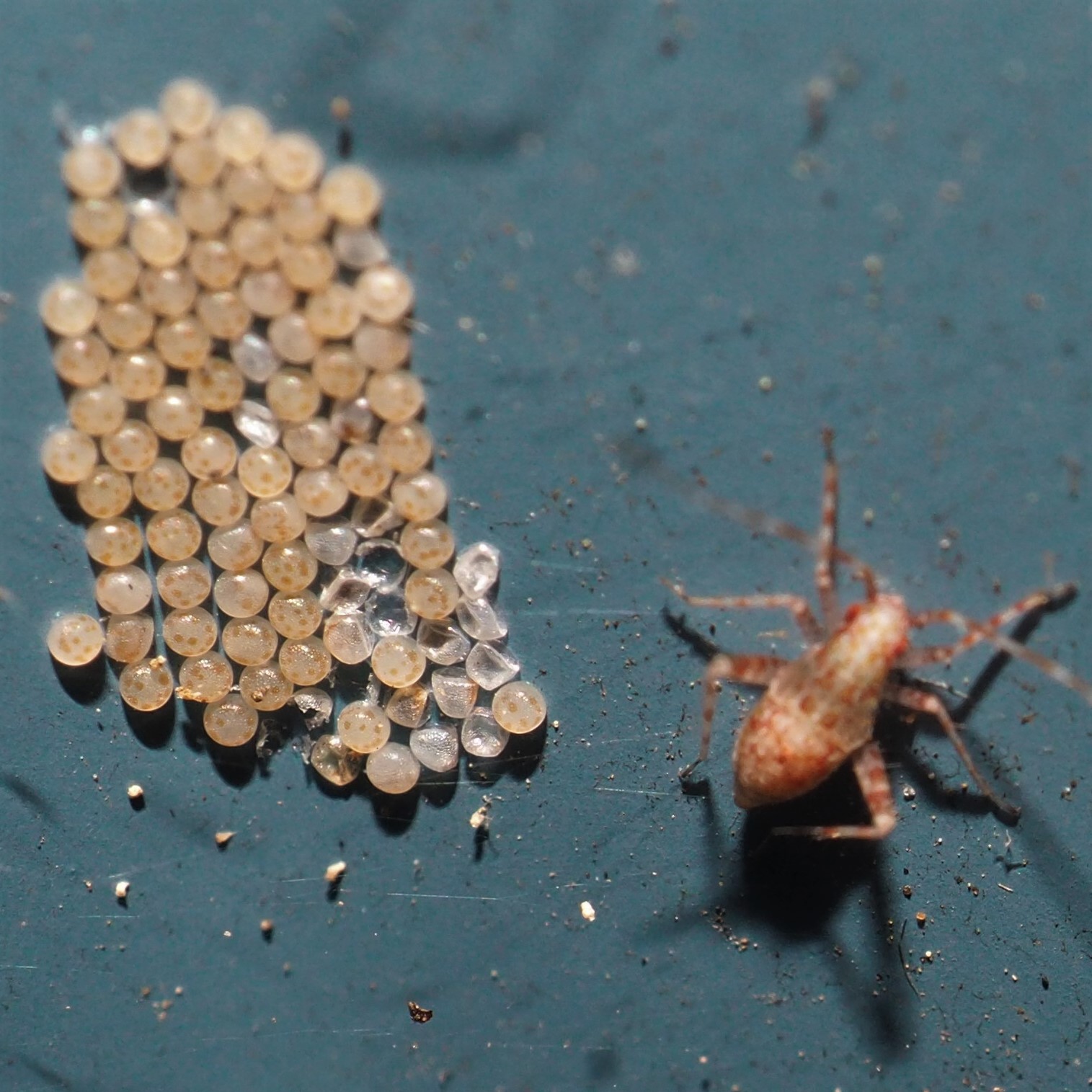
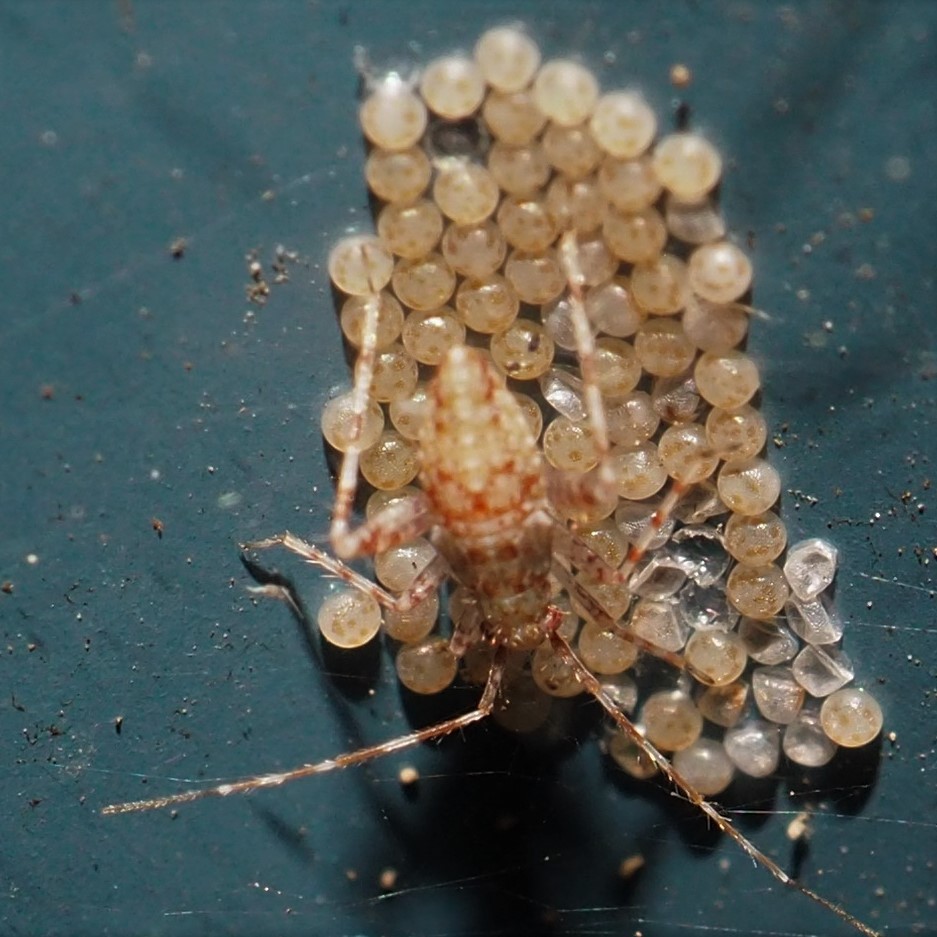
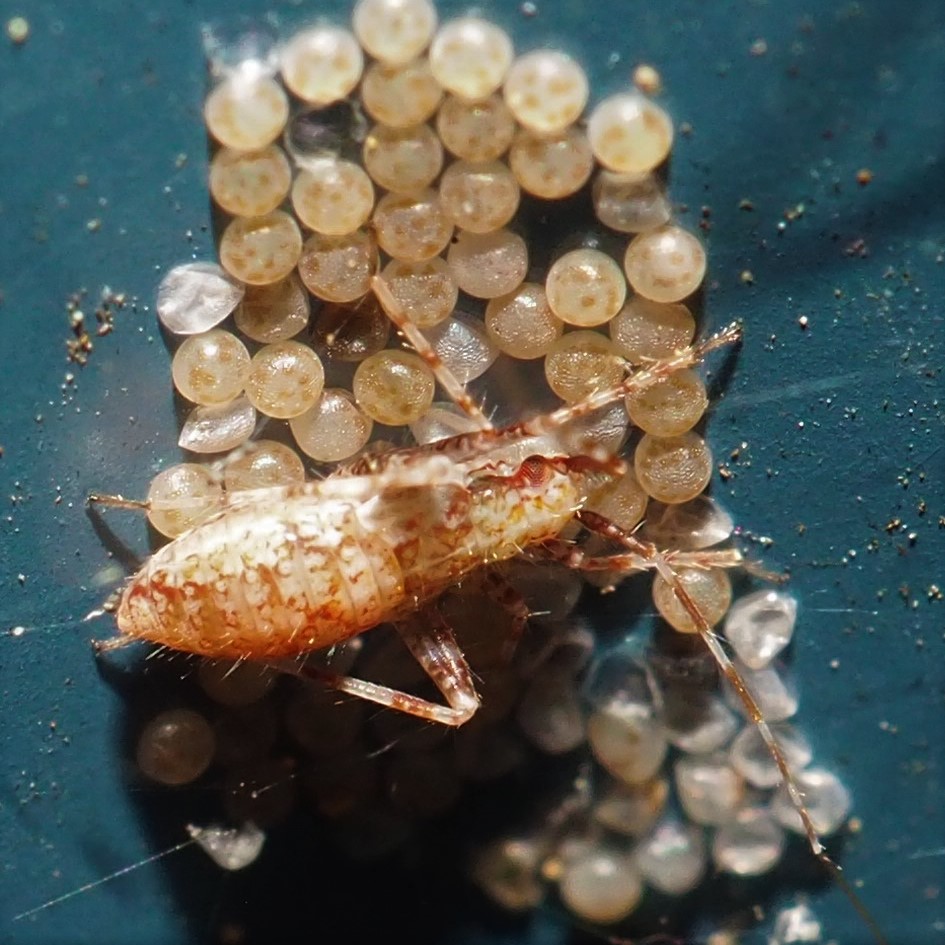
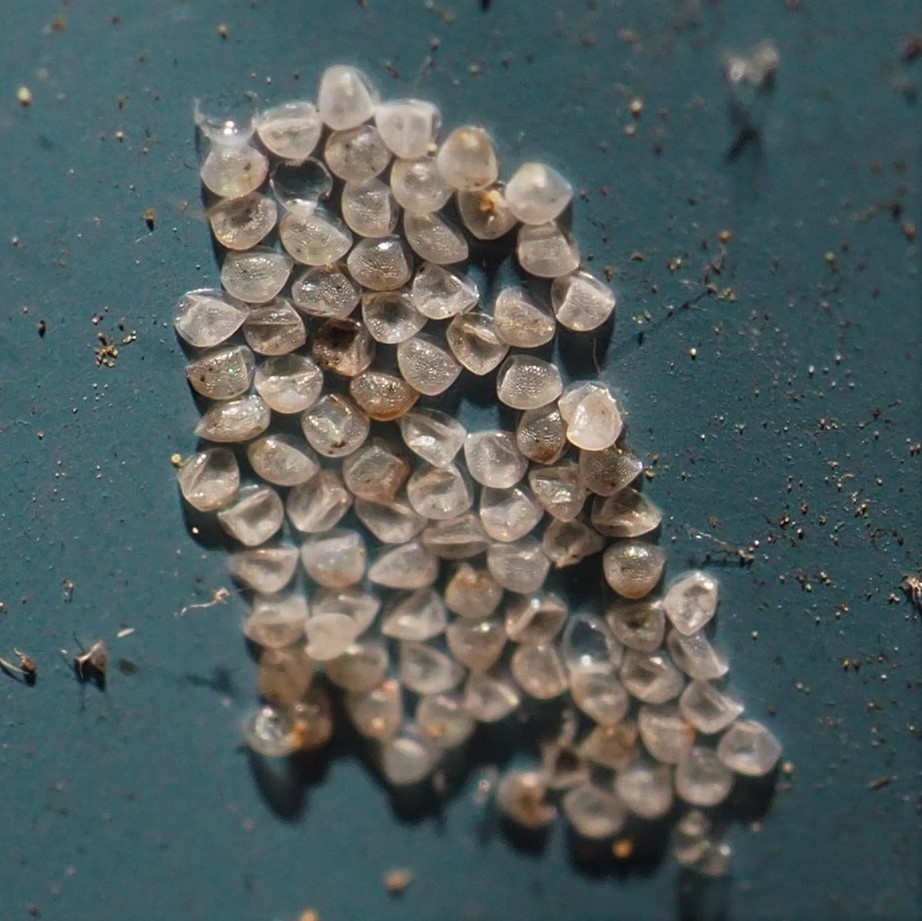
Here are a couple of Earwigs. Usually it's European Earwigs (how fancy!) that come to me. But I don't think this is one. I suppose these are both the same species.
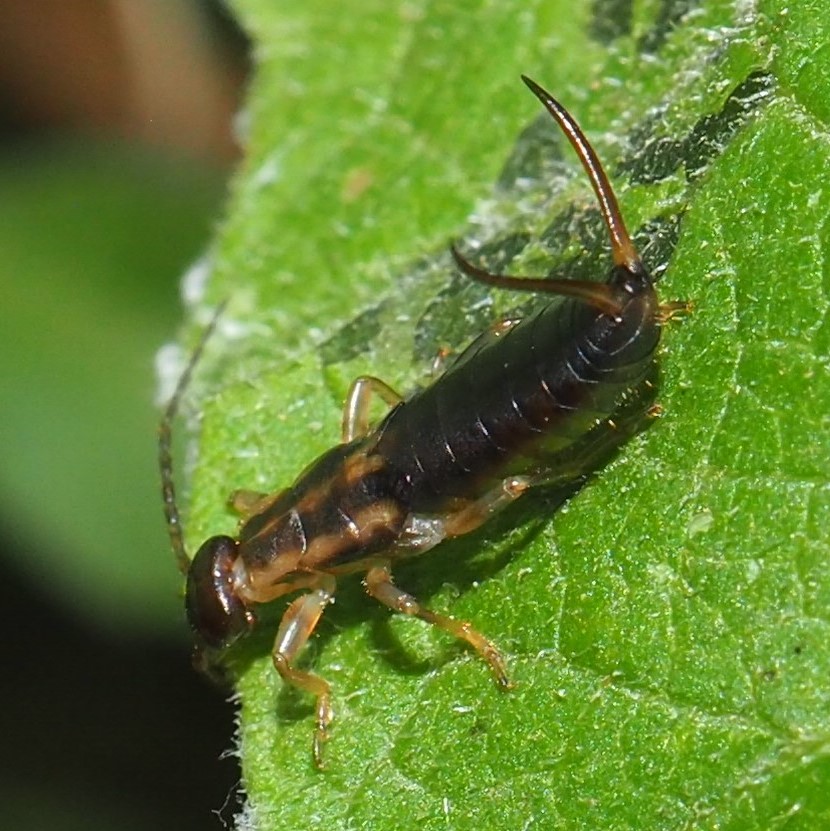
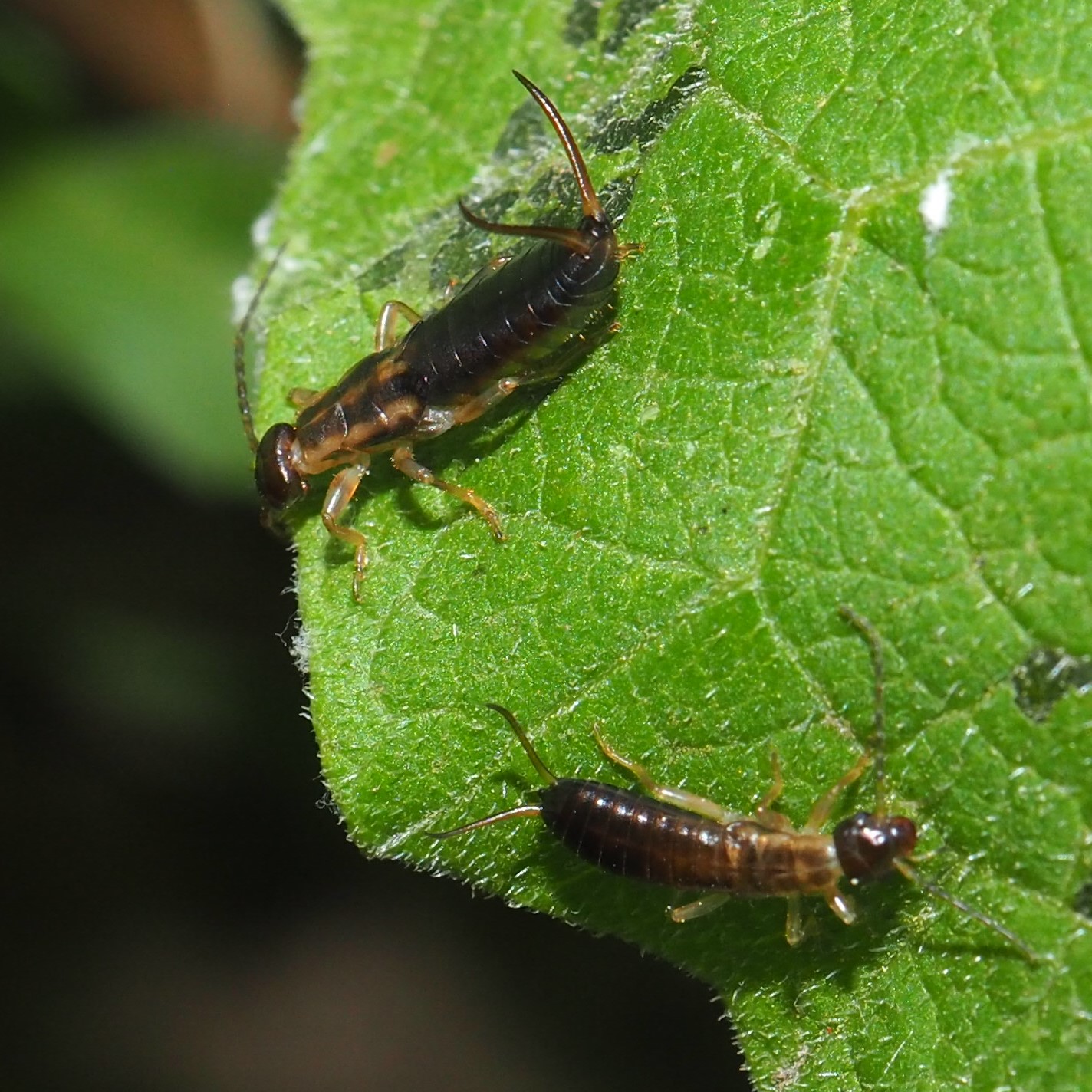
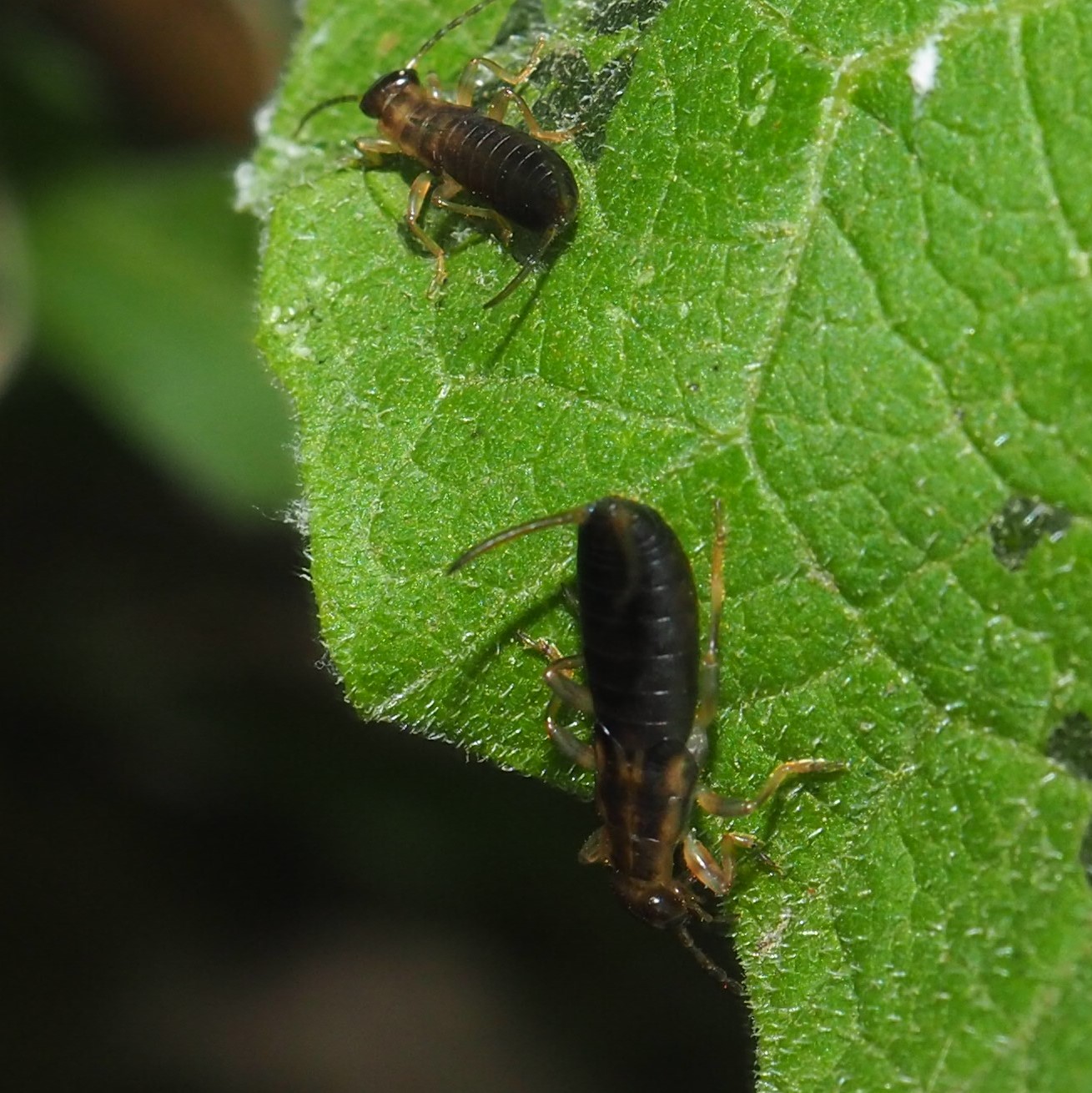
Nowto the Flies. There were so many other creatures here this week, I only homed in on the prettiest or most interesting Flies, less on Midges or Fungus Gnats. As usual, let's start with the big Crane Fly. Then we have a Blue Bottle Fly, surely fitting as it is a beauty.

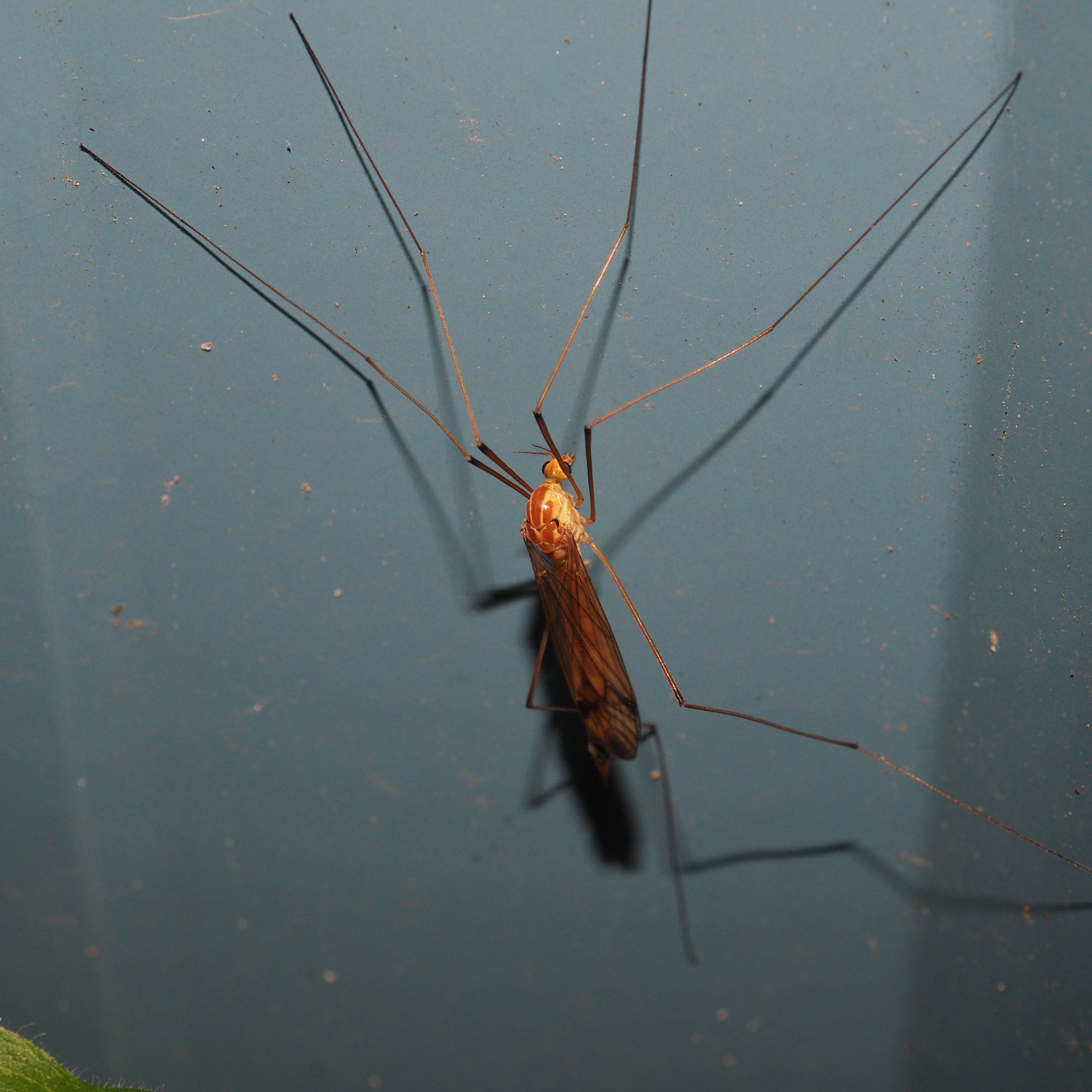
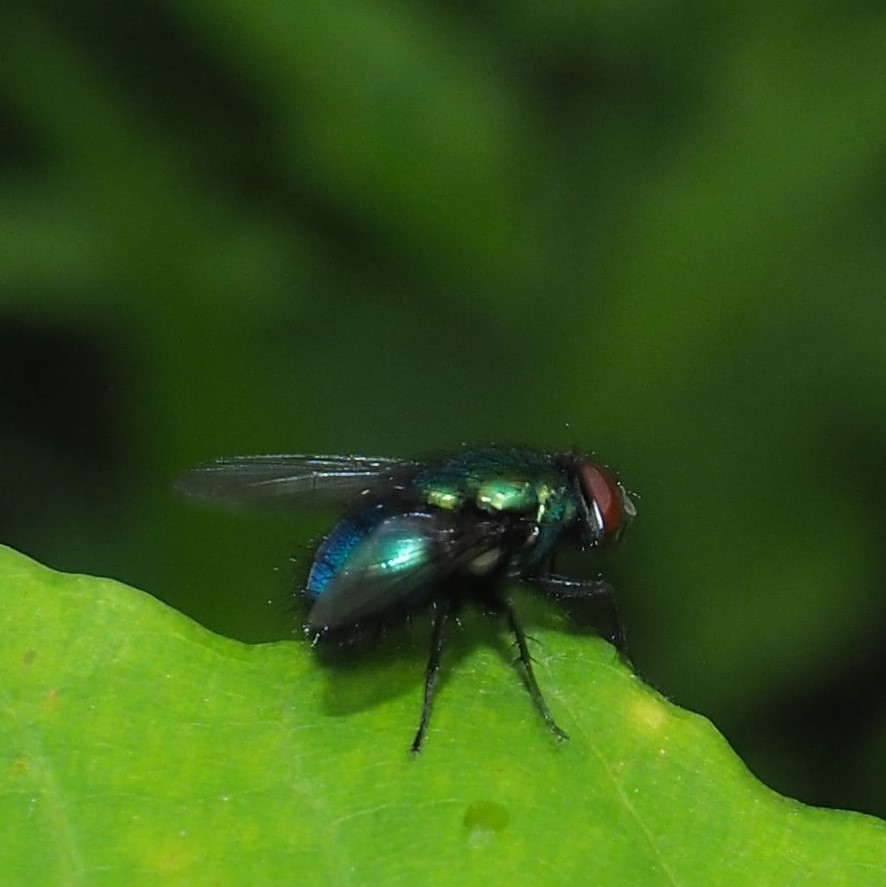
This fly is on of the Genus Minettia, and I'm guessing it's Minettia lupulina.
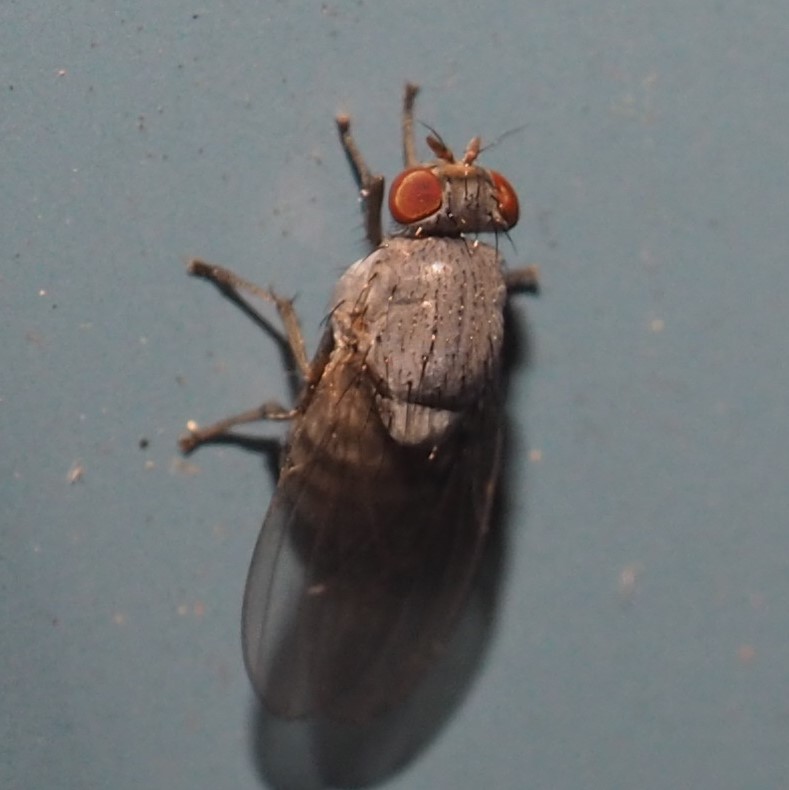
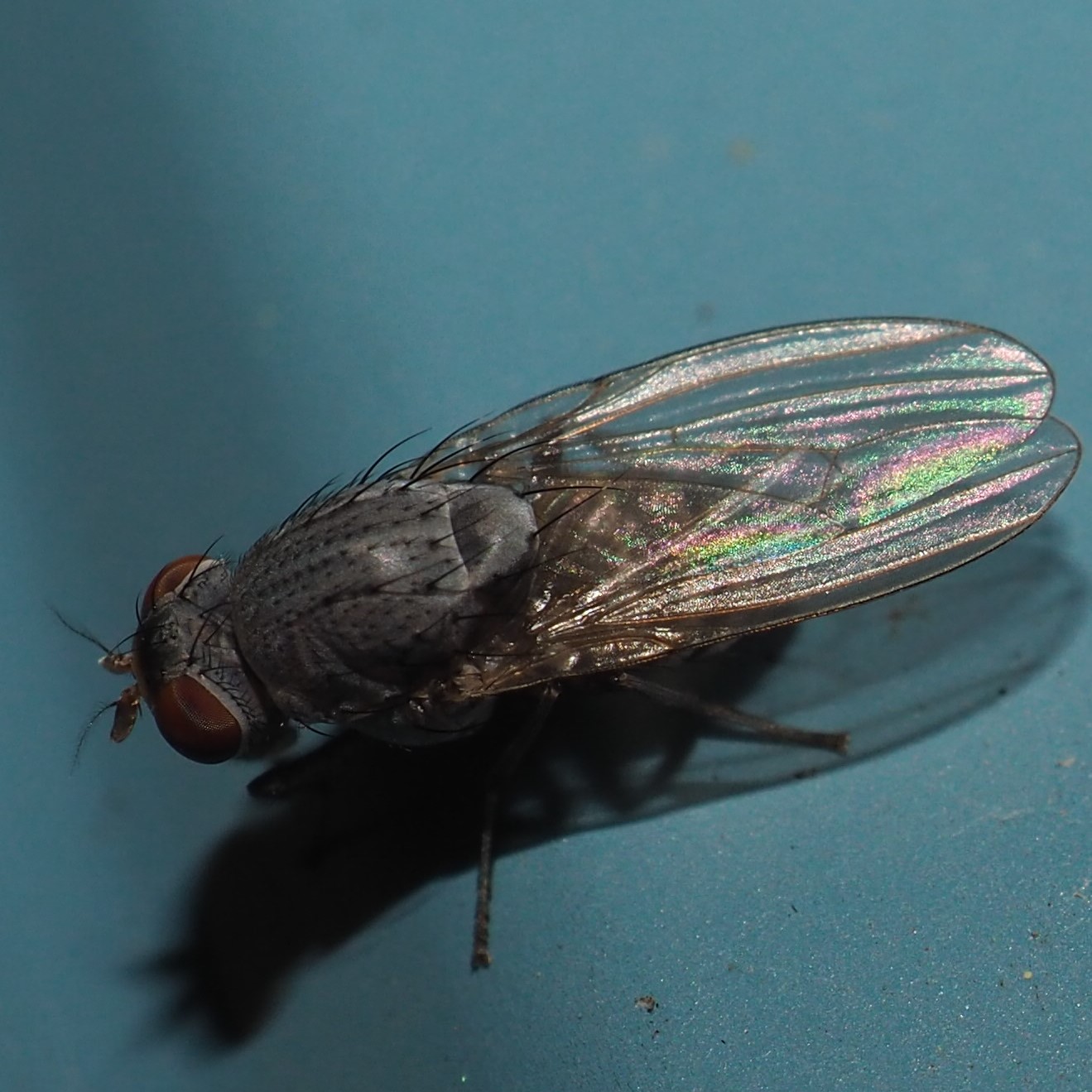
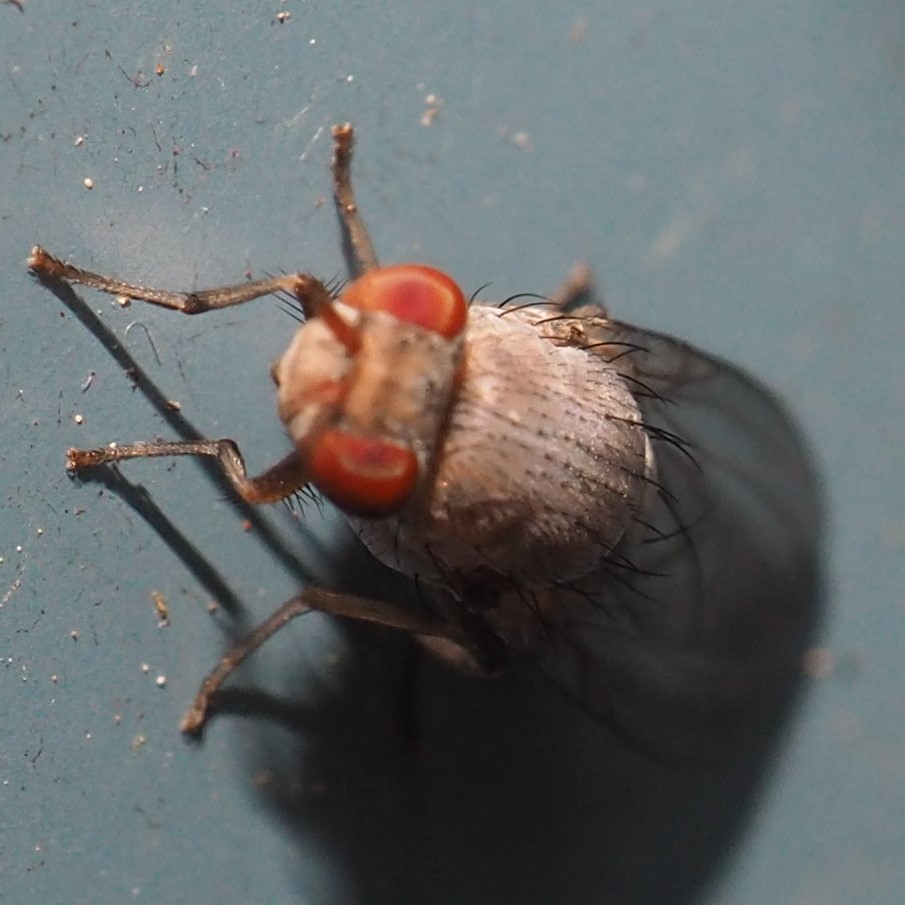
This fly was only here long enough for a few shots, and I think this is Toxonevra suberba, just not photos suberbos. It is in a genus called Flutter Flies.
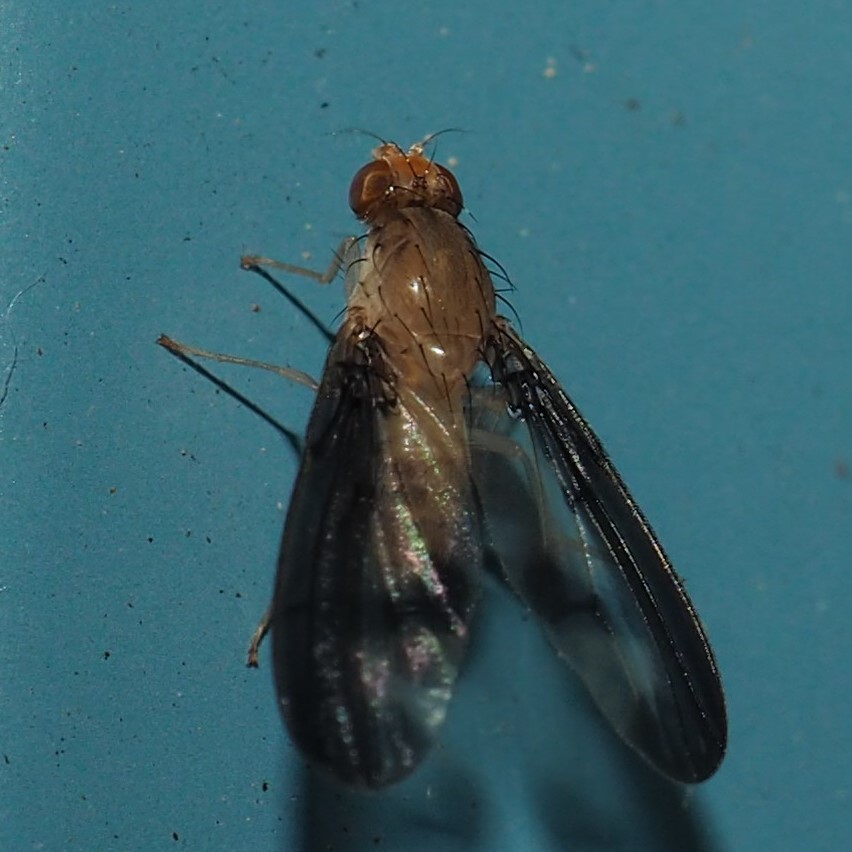
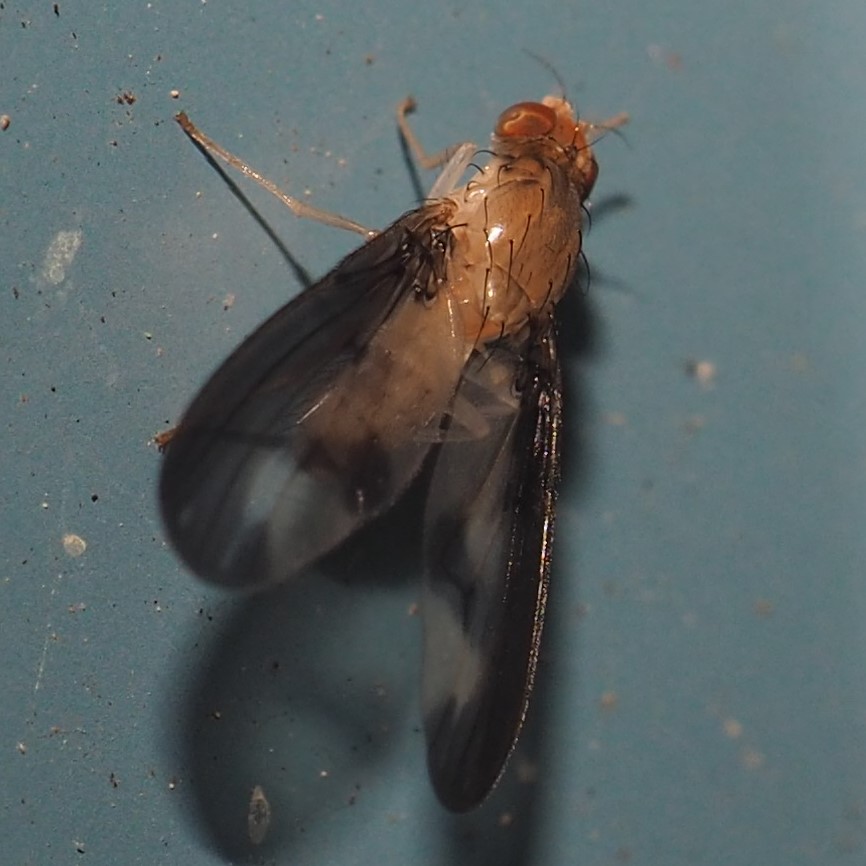

Here are a few interesting Flies. The first, Raineria antennaepes, mimics a wasp pretty well. Next is a Robber Fly. Third is a Moth Fly - we don't always get black ones.
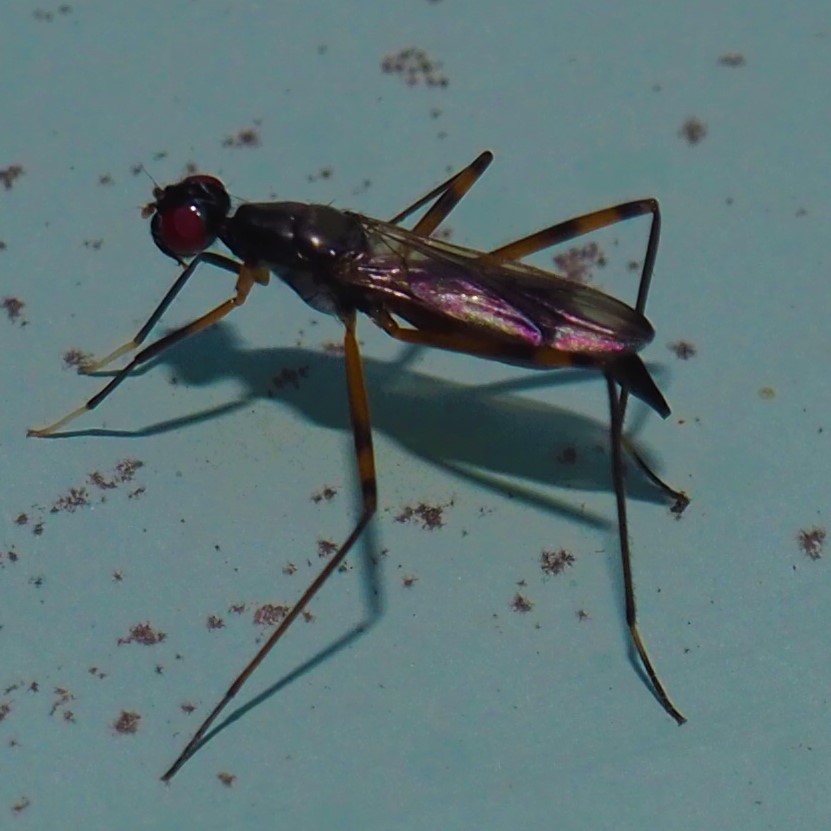
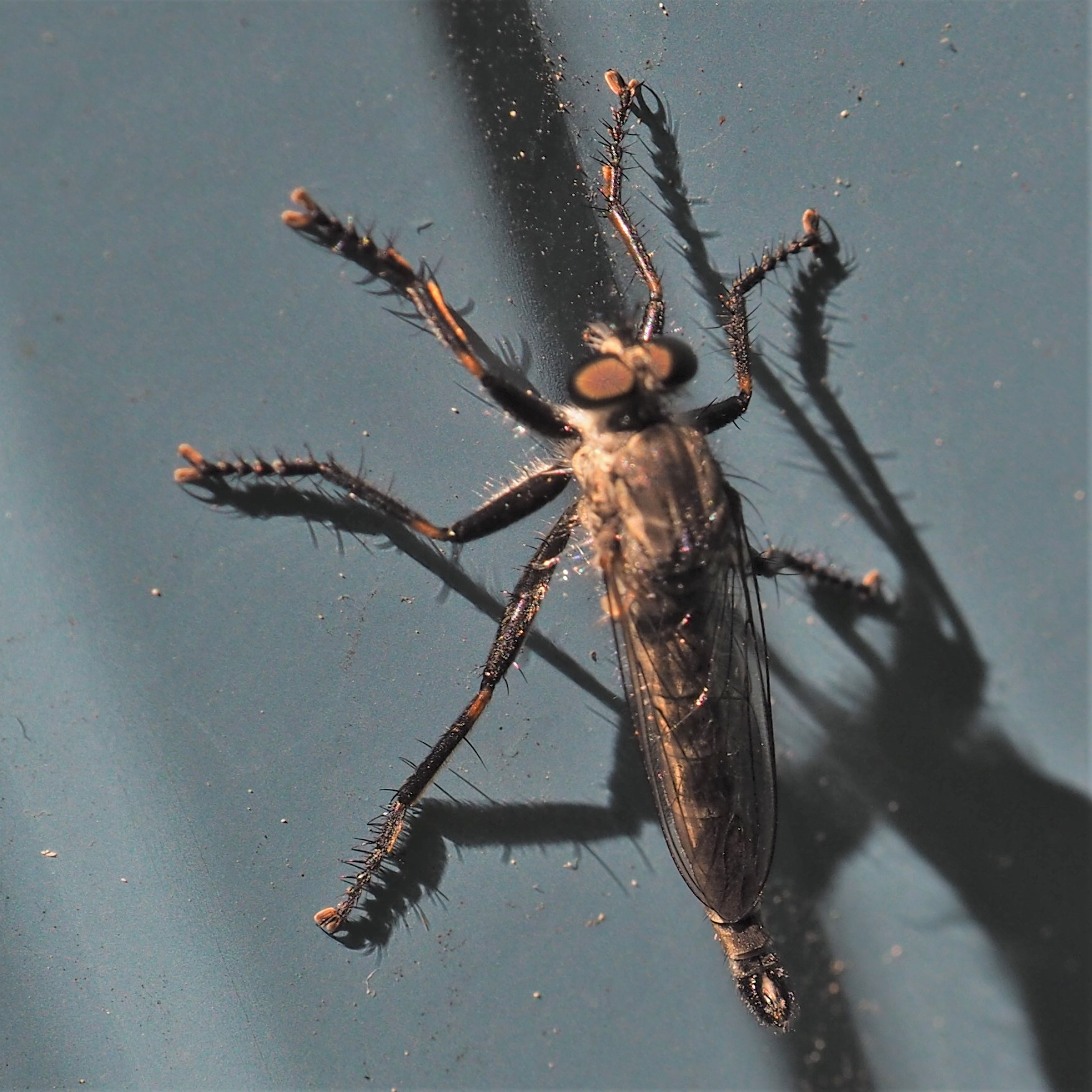
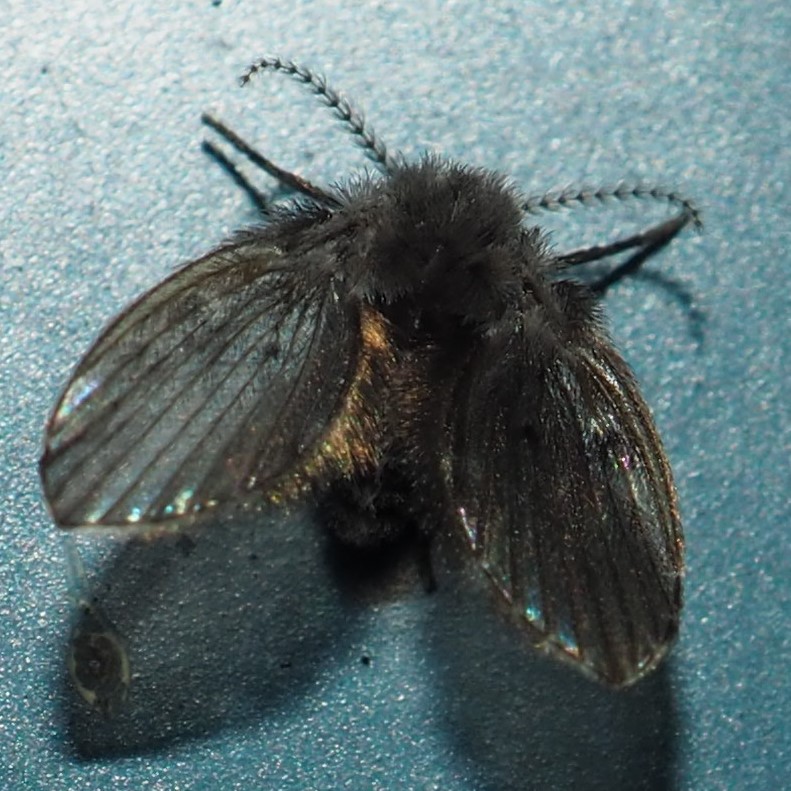
A mystery Fly on a leaf, and a tiny white Fly. That seems to be the end of this Fly Extravaganza!
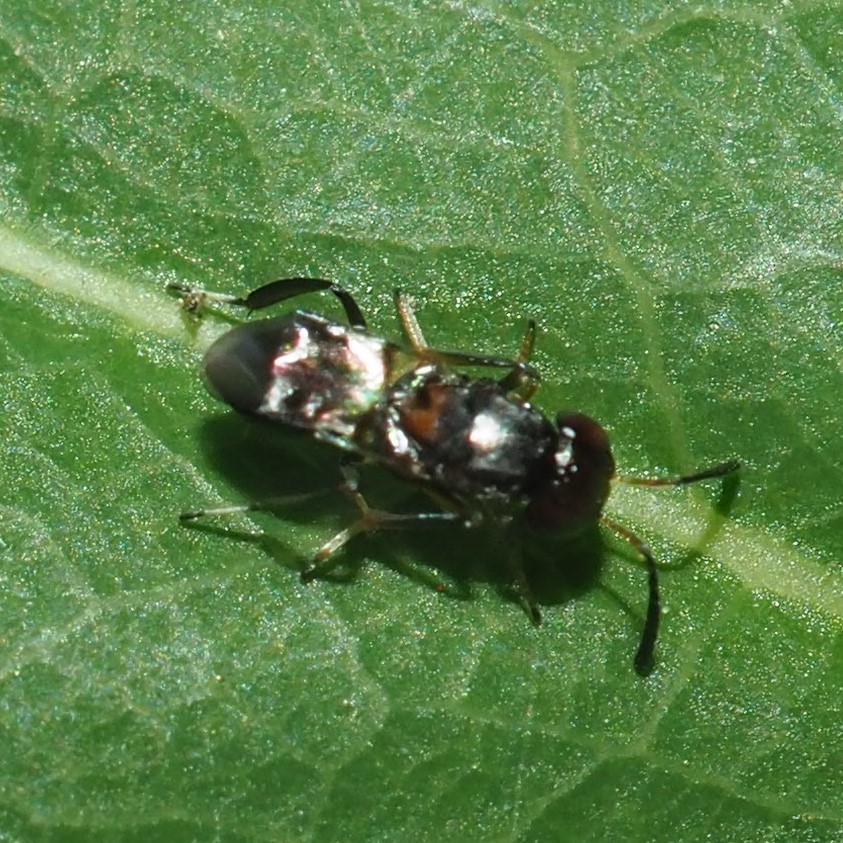
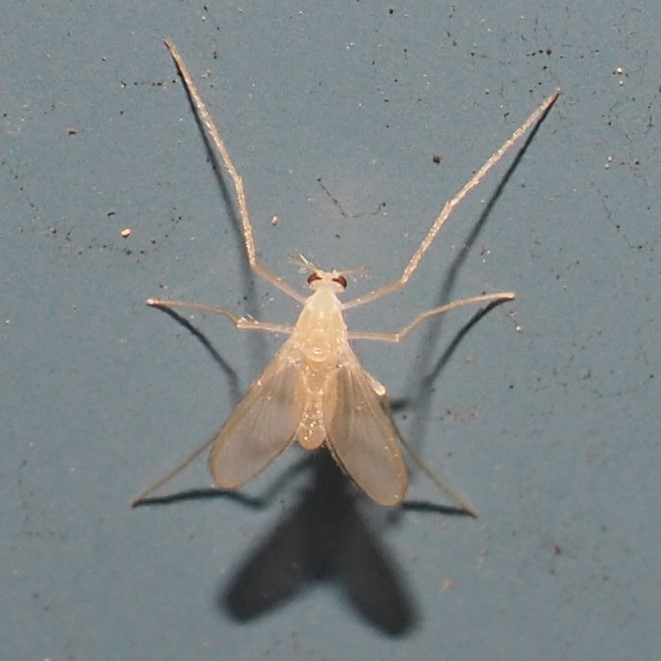
Our Orthoptera (Grasshoppers, Crickets, and Katydids) are starting up. First we have (surprise!) a Two-spotted Cricket (with no spots yet, it seems to be auditioning for Santa's team.) Second is one of the youngest Scudder's Bush Katydids I've seen yet, perched on one blossom from the Rose Campion. Precious! The third one is a bit older, but just as adorable!
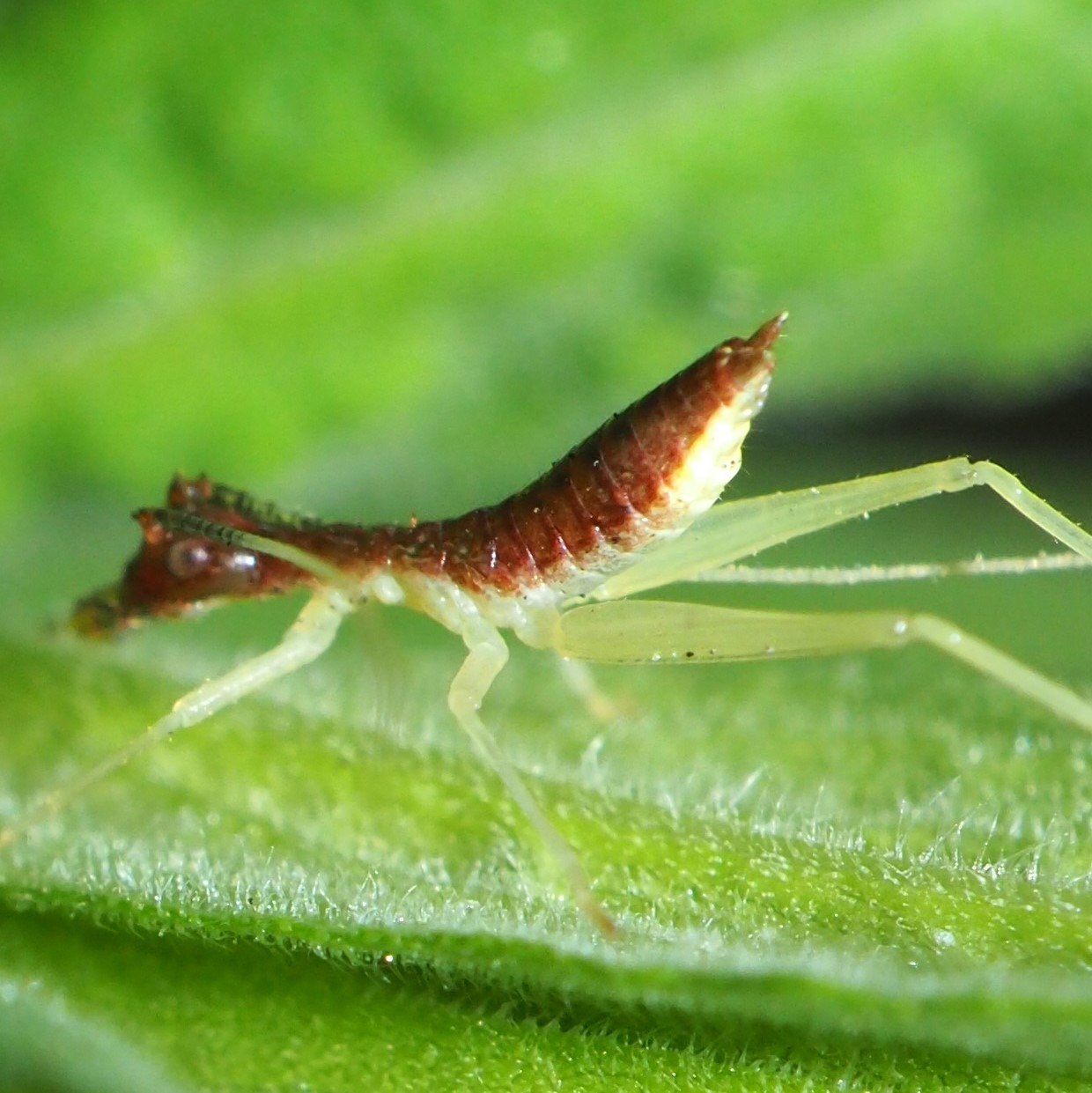

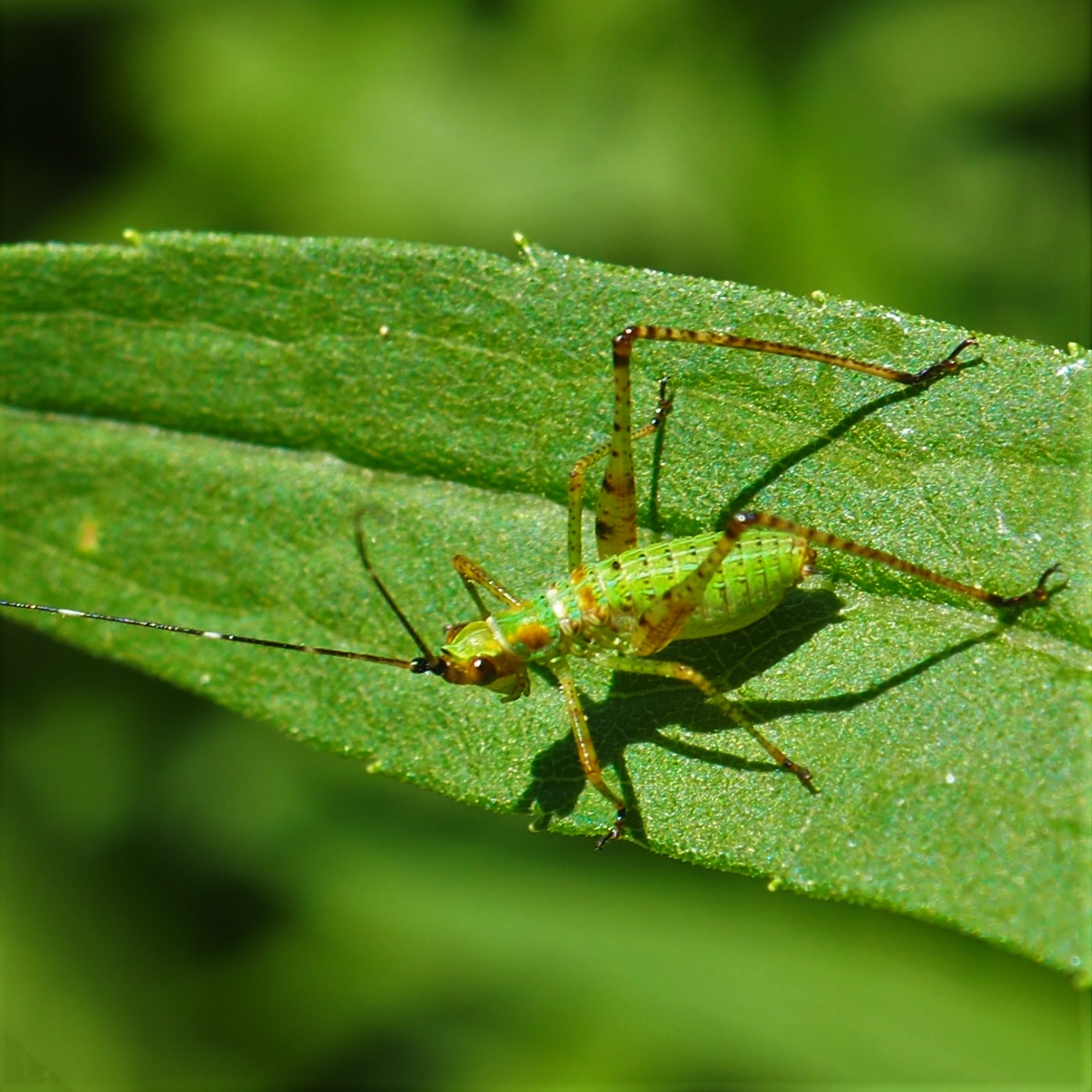
Is this first thing a leaf or a Moth? I don't see any feelers or legs, so my bet is on Leaf, but a goody! The next two are little Leaf Miner Moths.
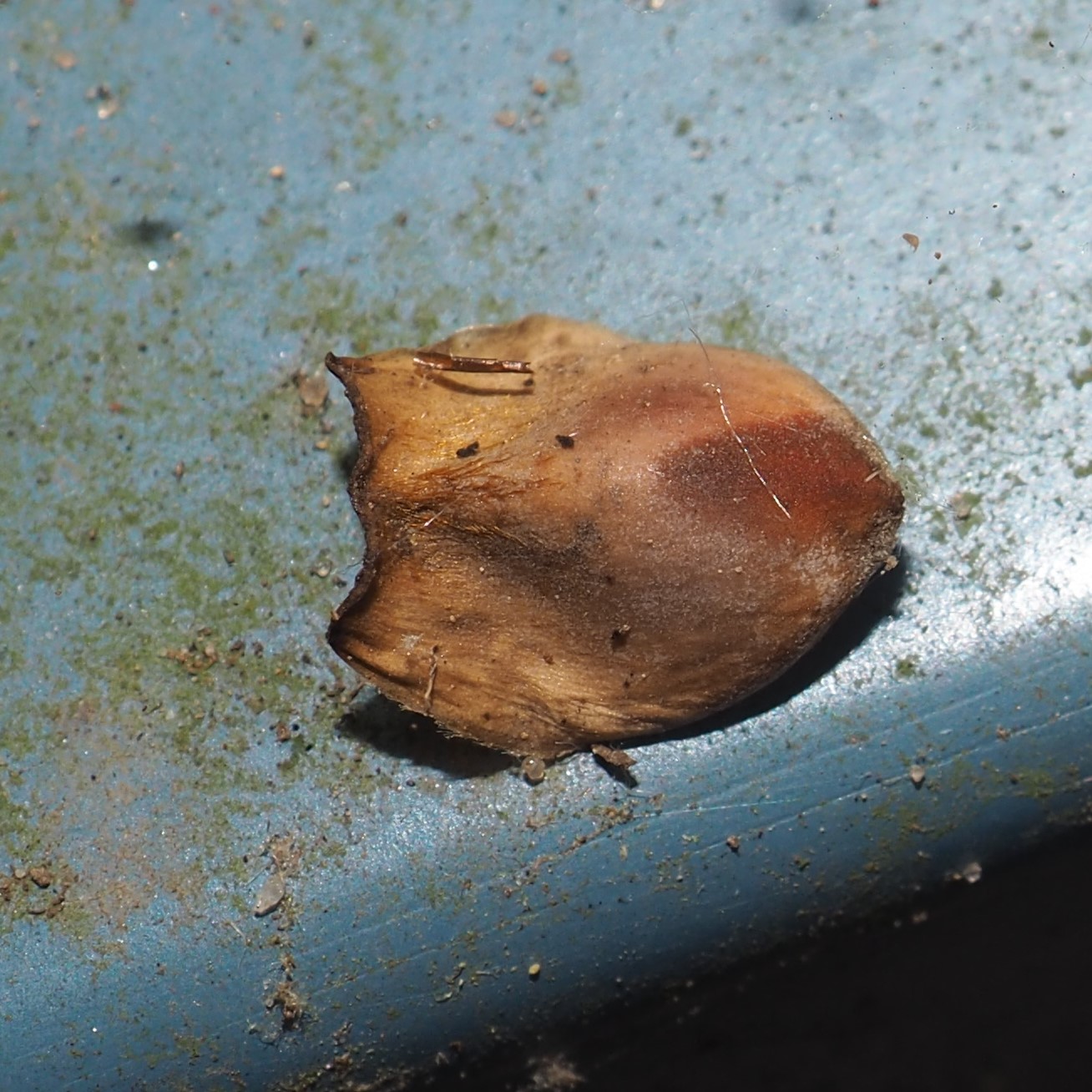
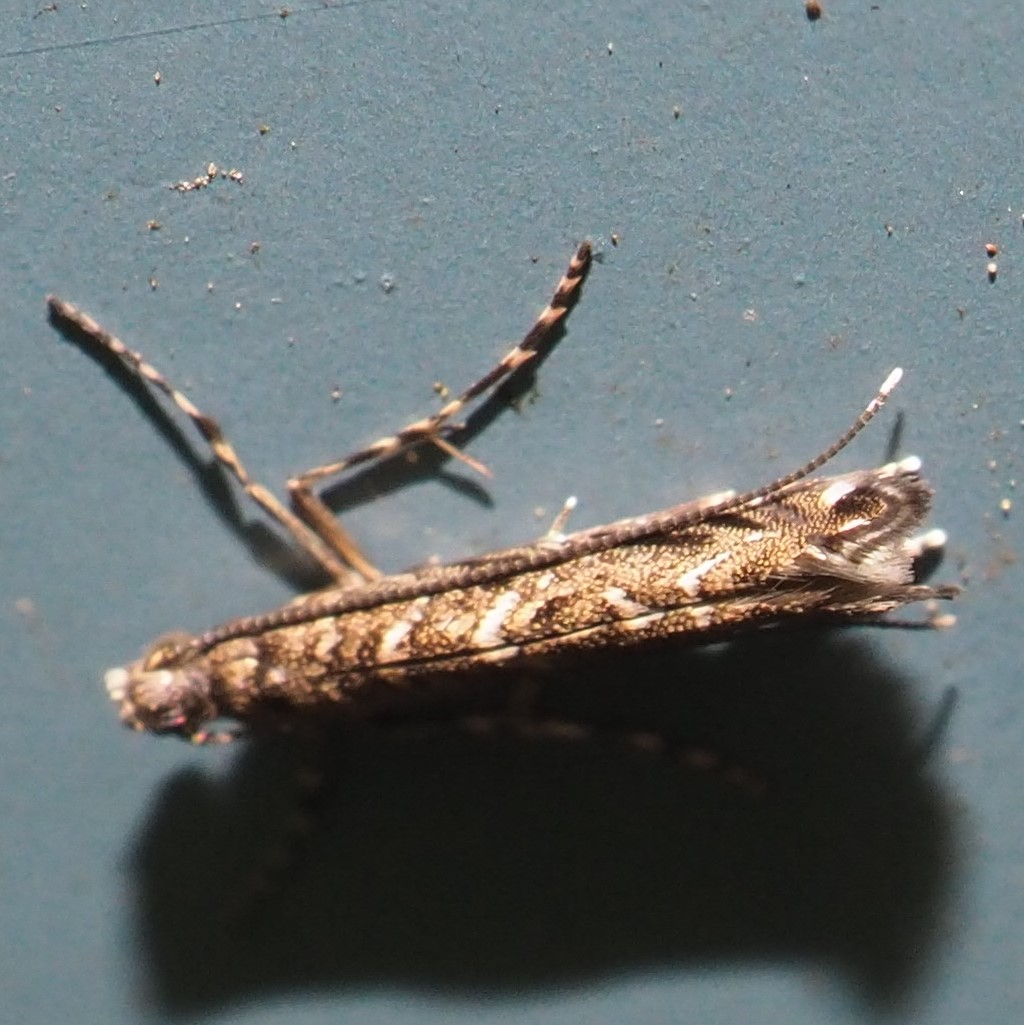
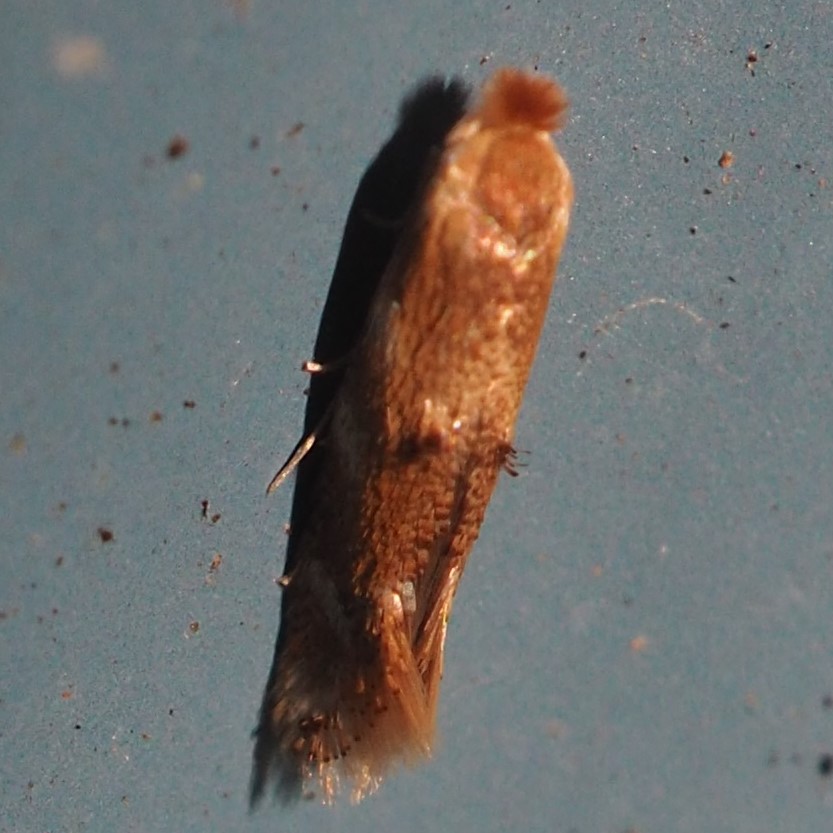
Here are three fairly small Moths.
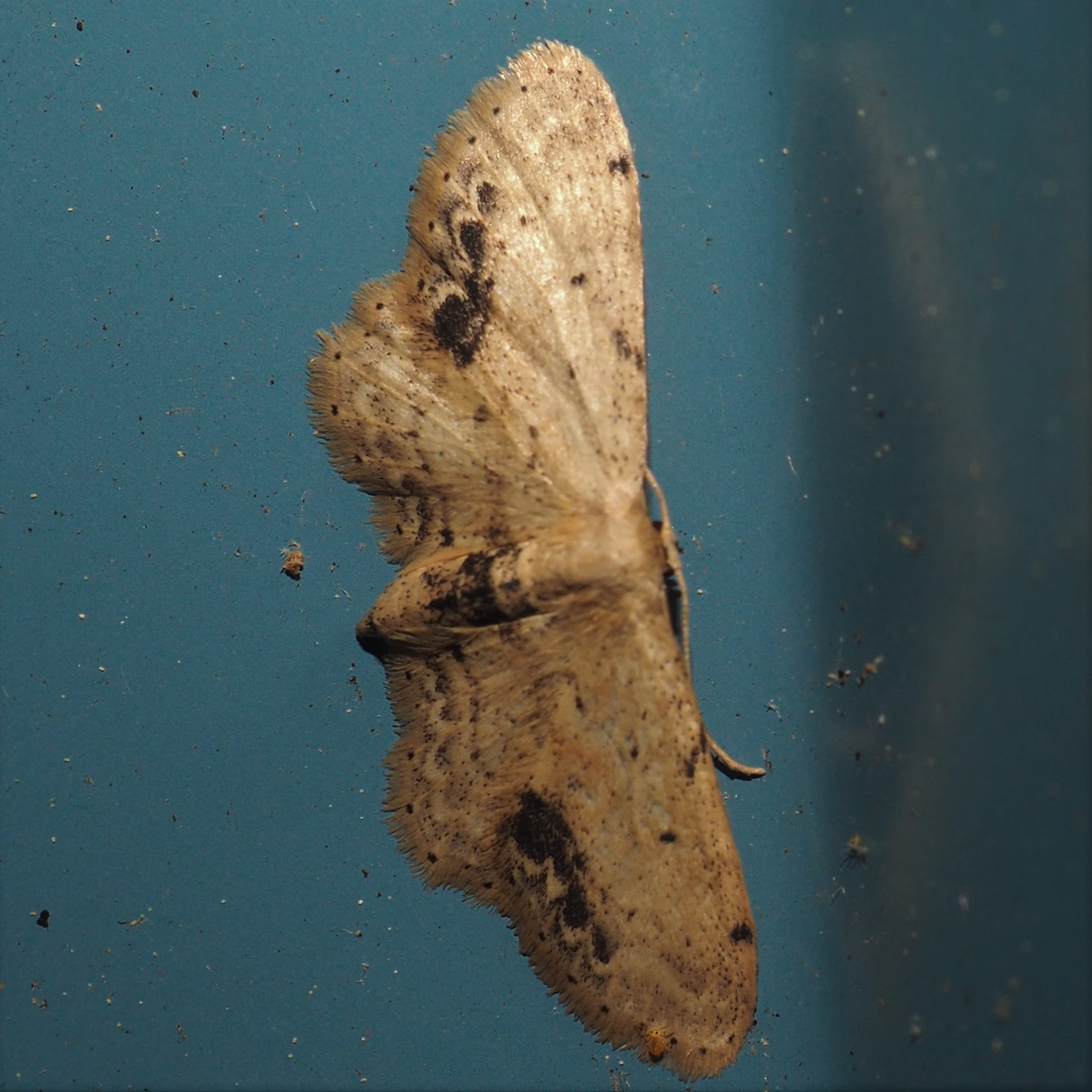

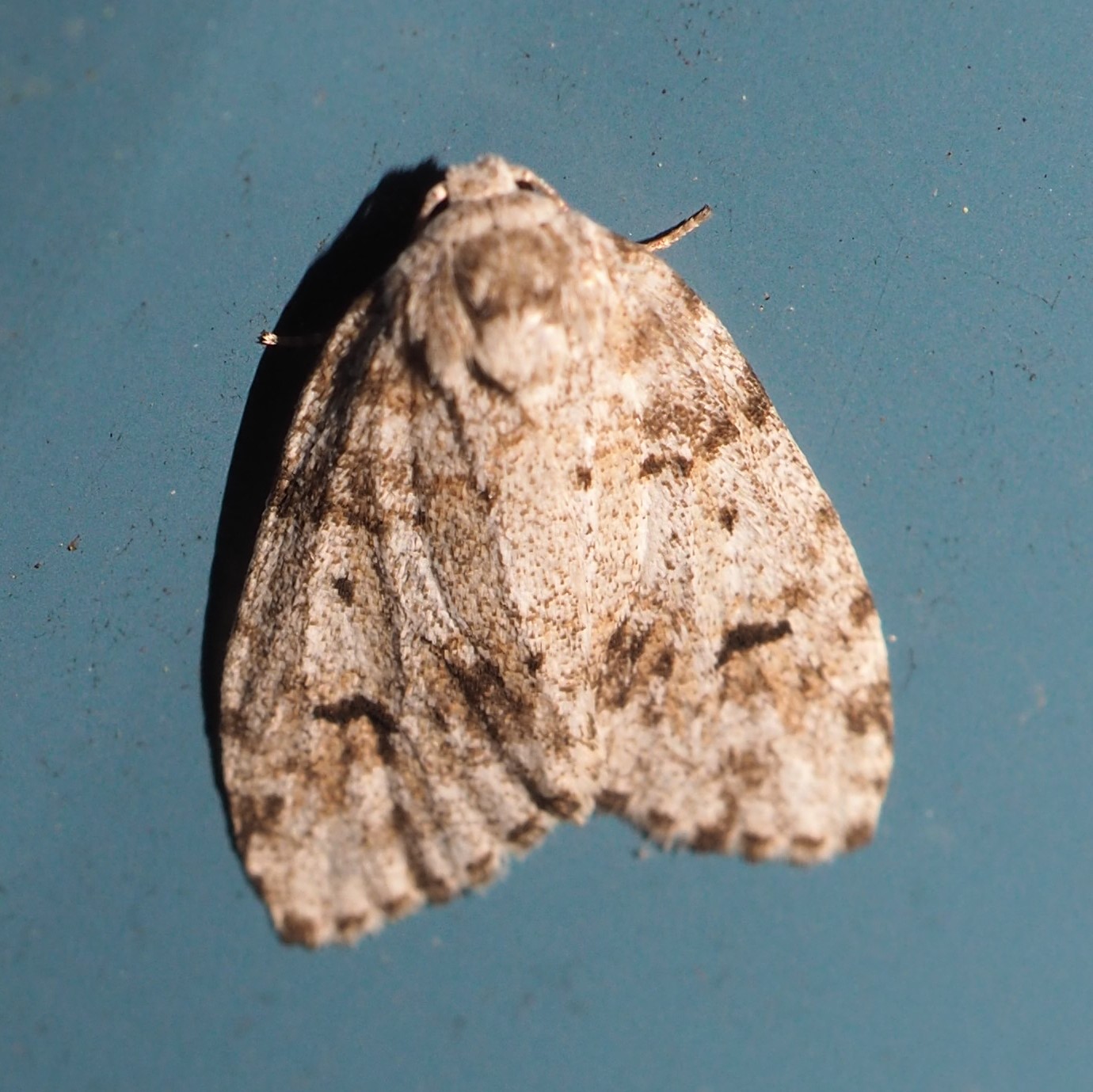
More Moths.
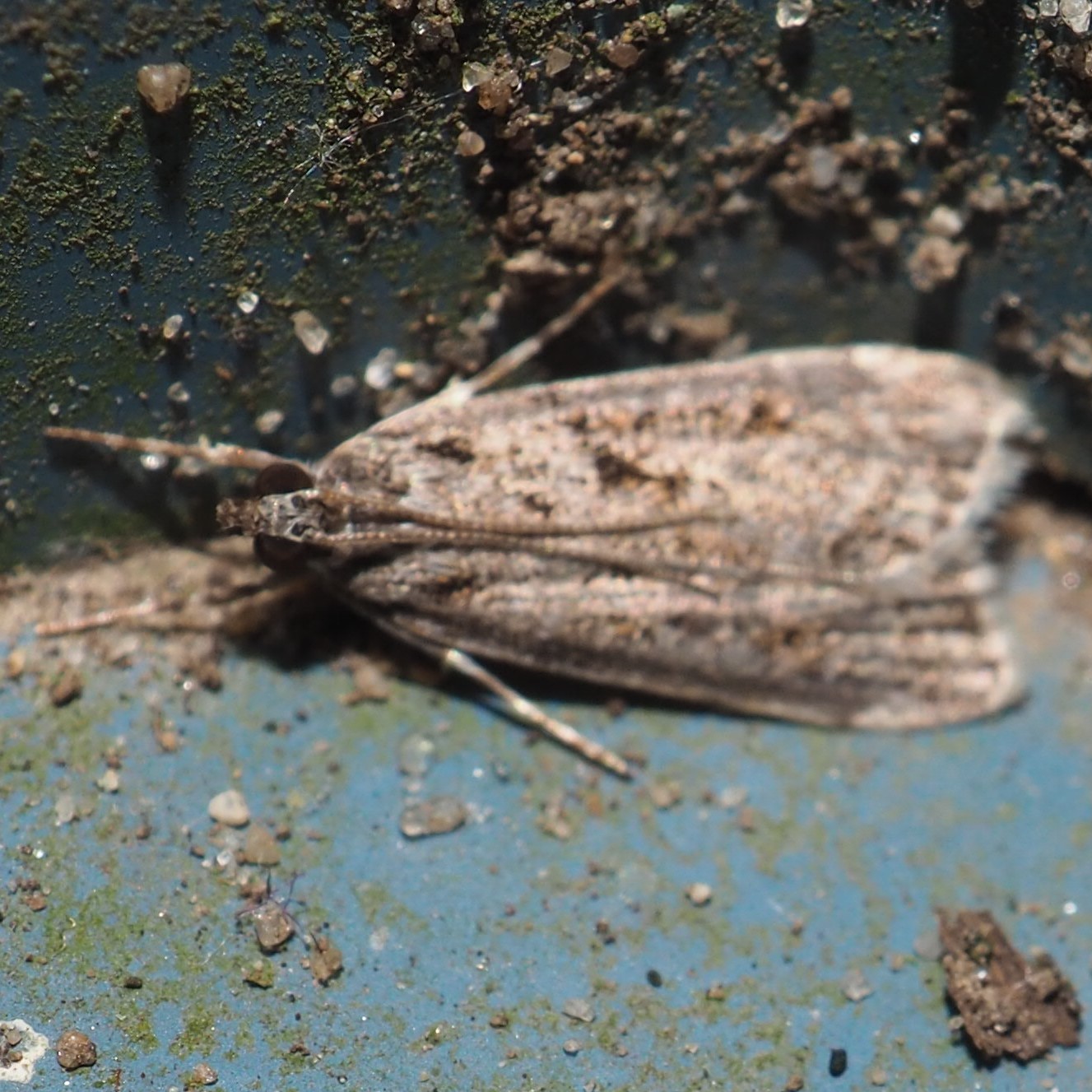
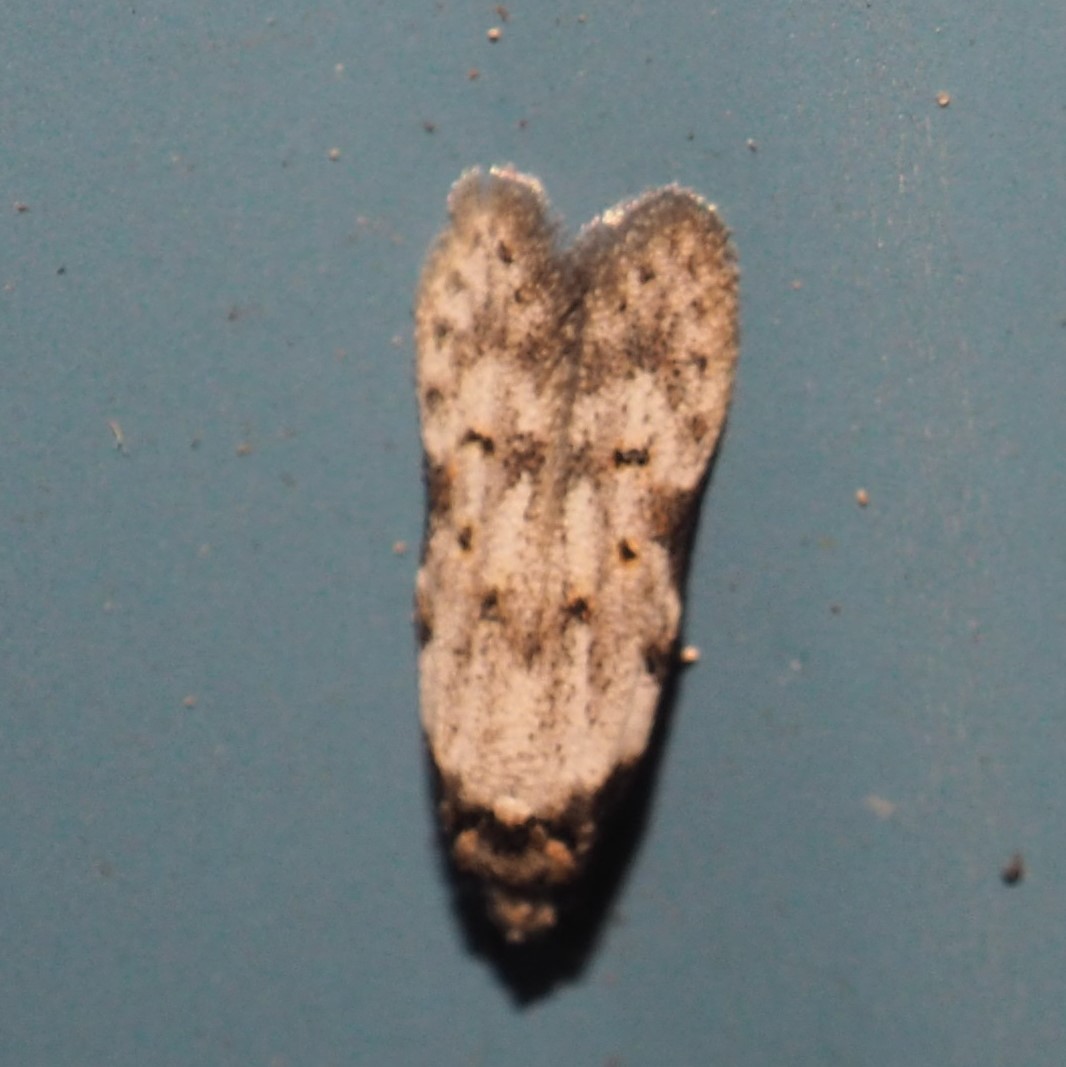
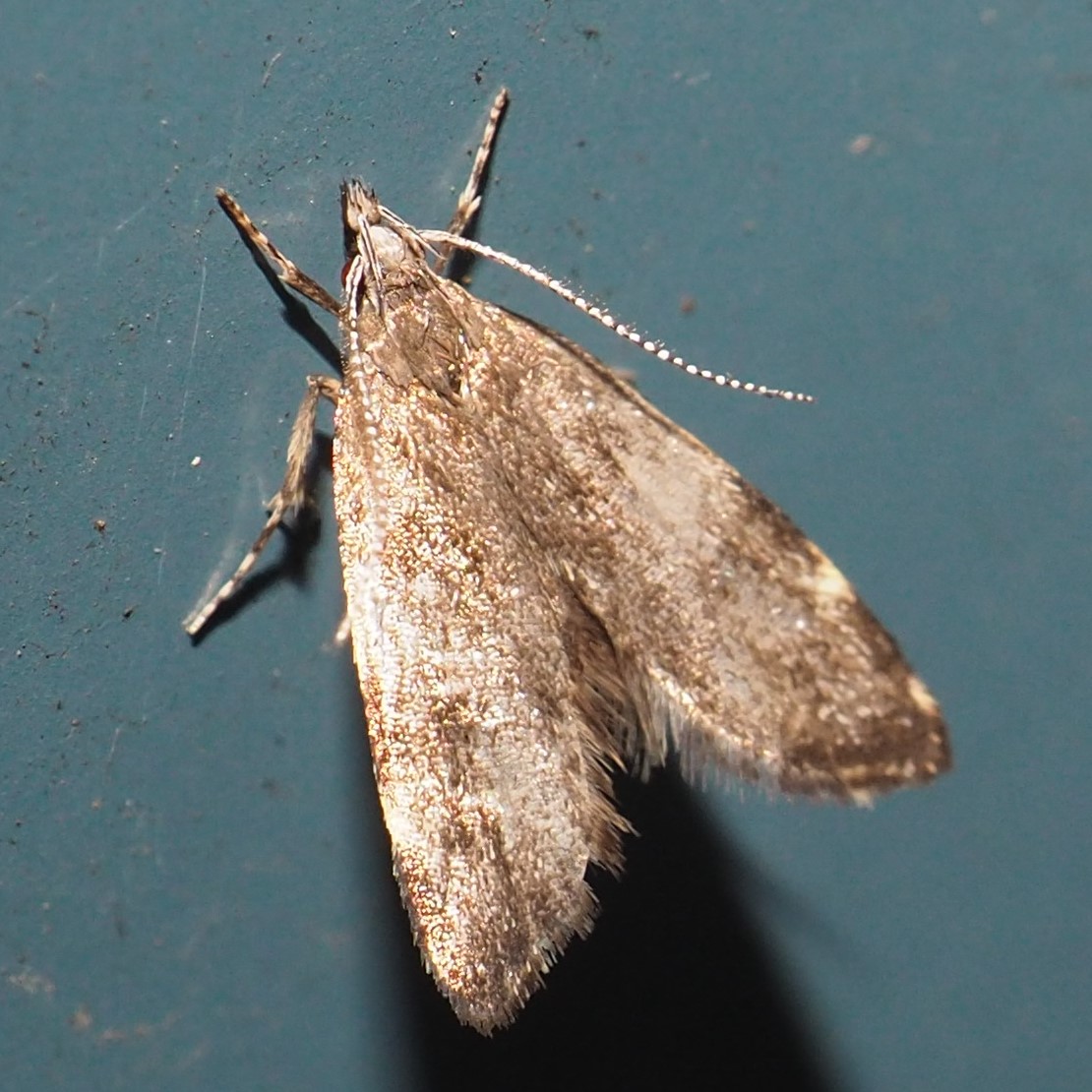
More moths.
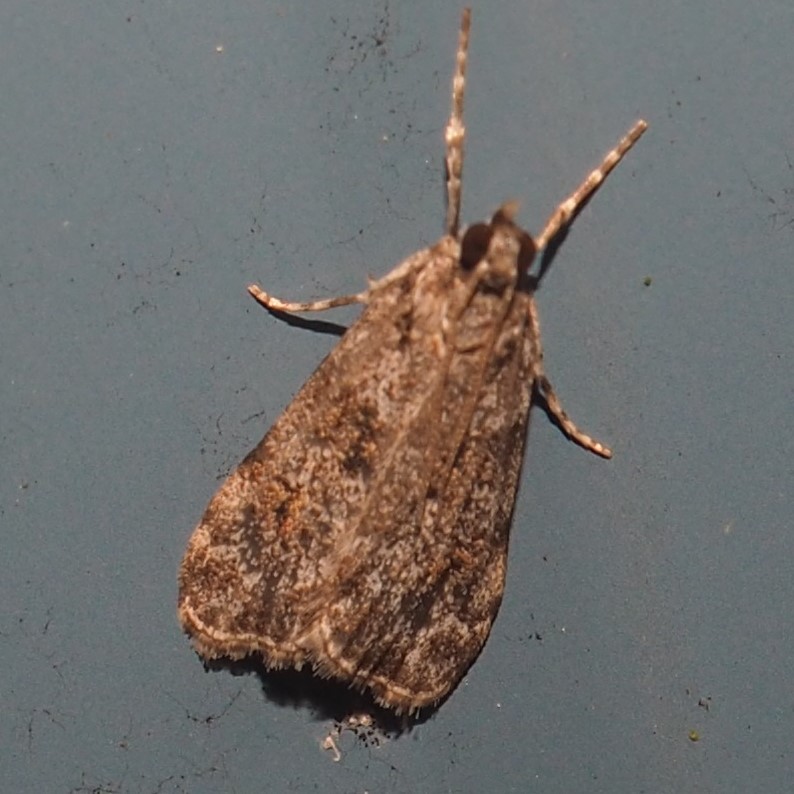

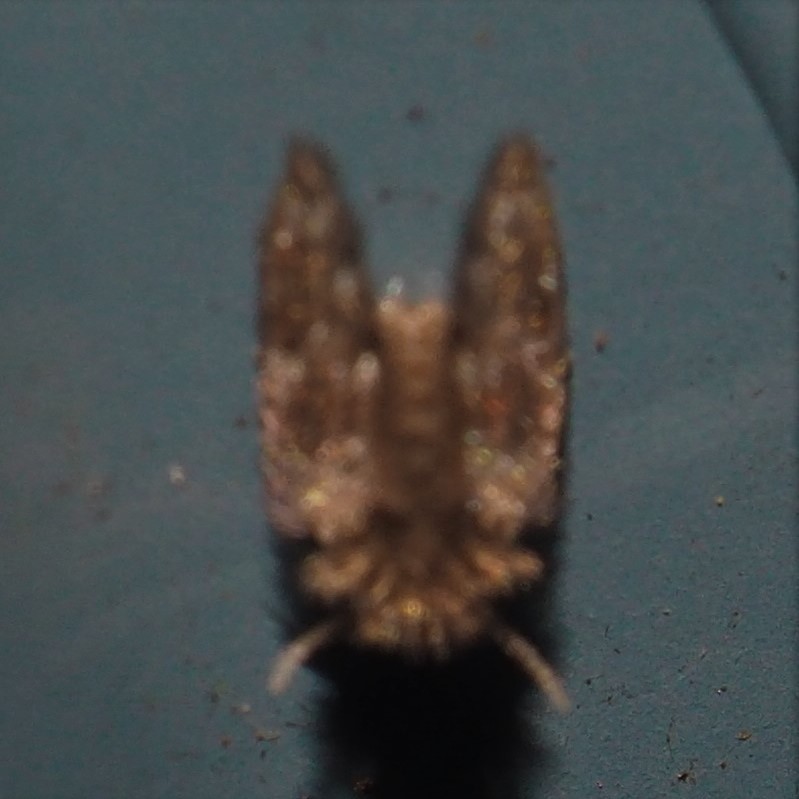
The only Caterpillars I saw this whole week were a few Gypsy Moth Cats (as they say in the Bug Biz)).

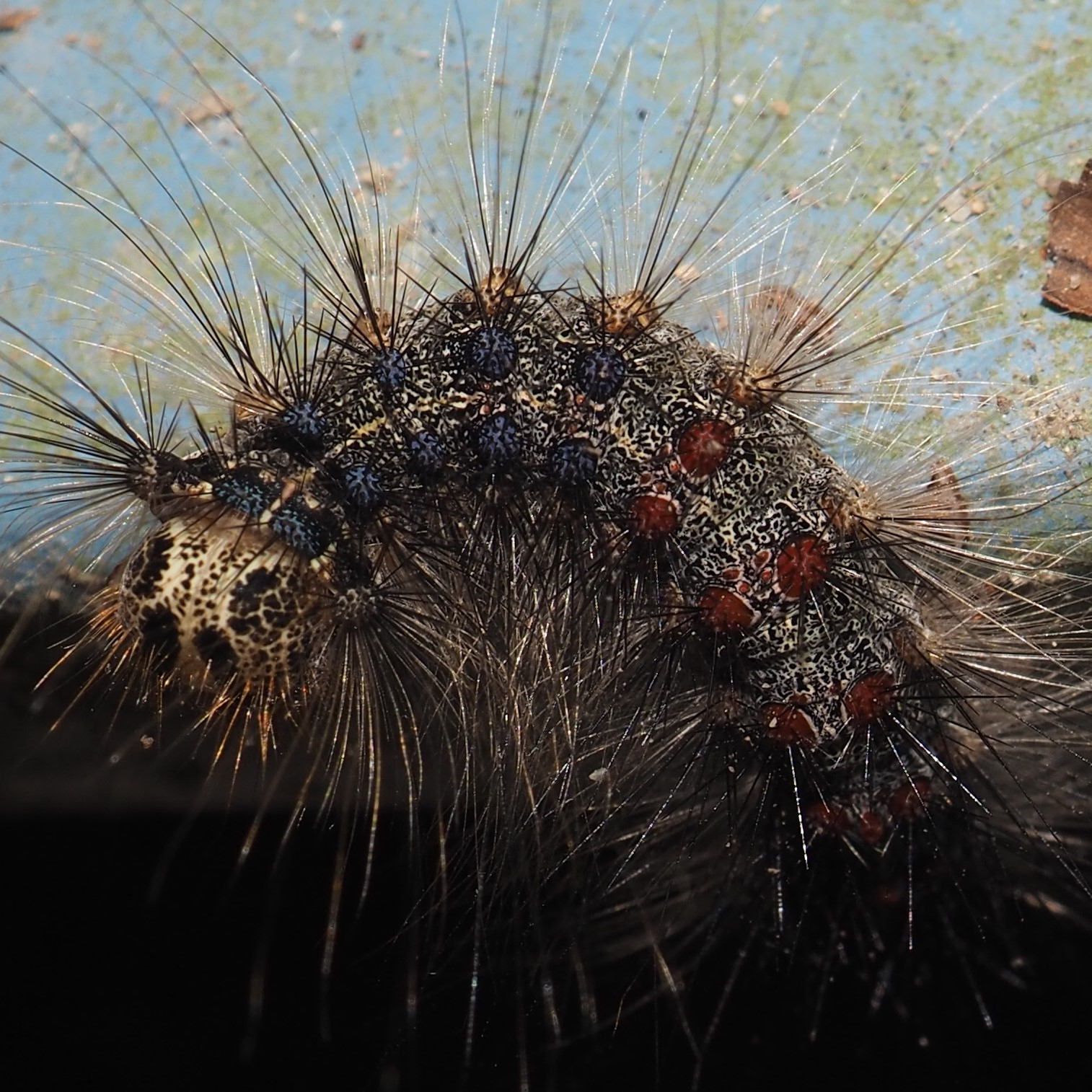
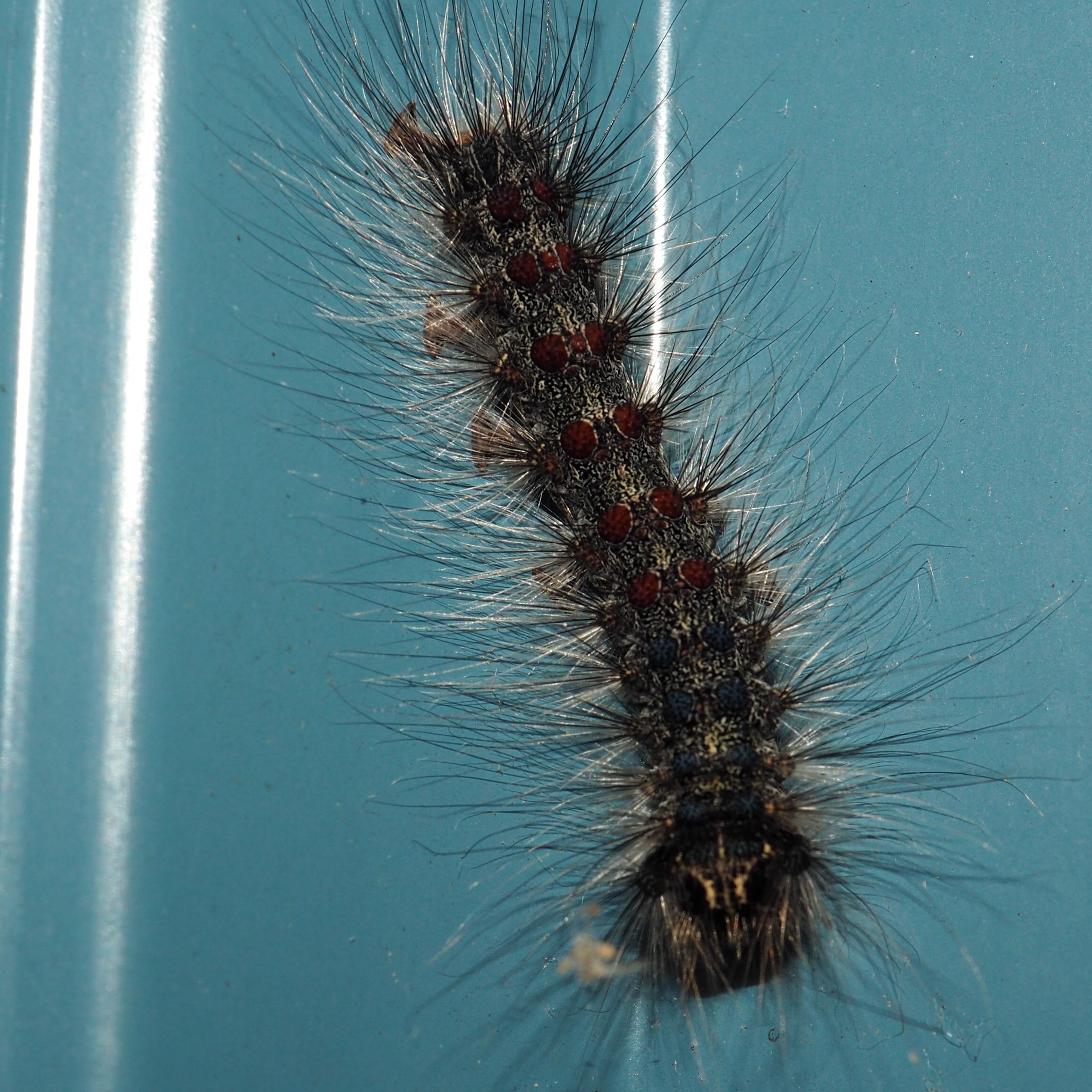
Just to show you how cool their moves are,
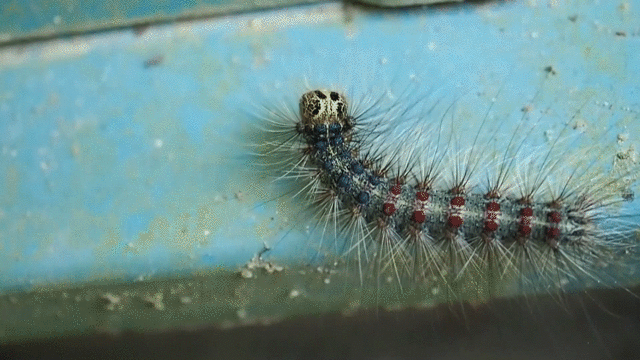
Yes, I think you're right, it is time for a flower walk. Here's the yellow Hawkweed, then the Honeysuckle. Last is the Foxglove.


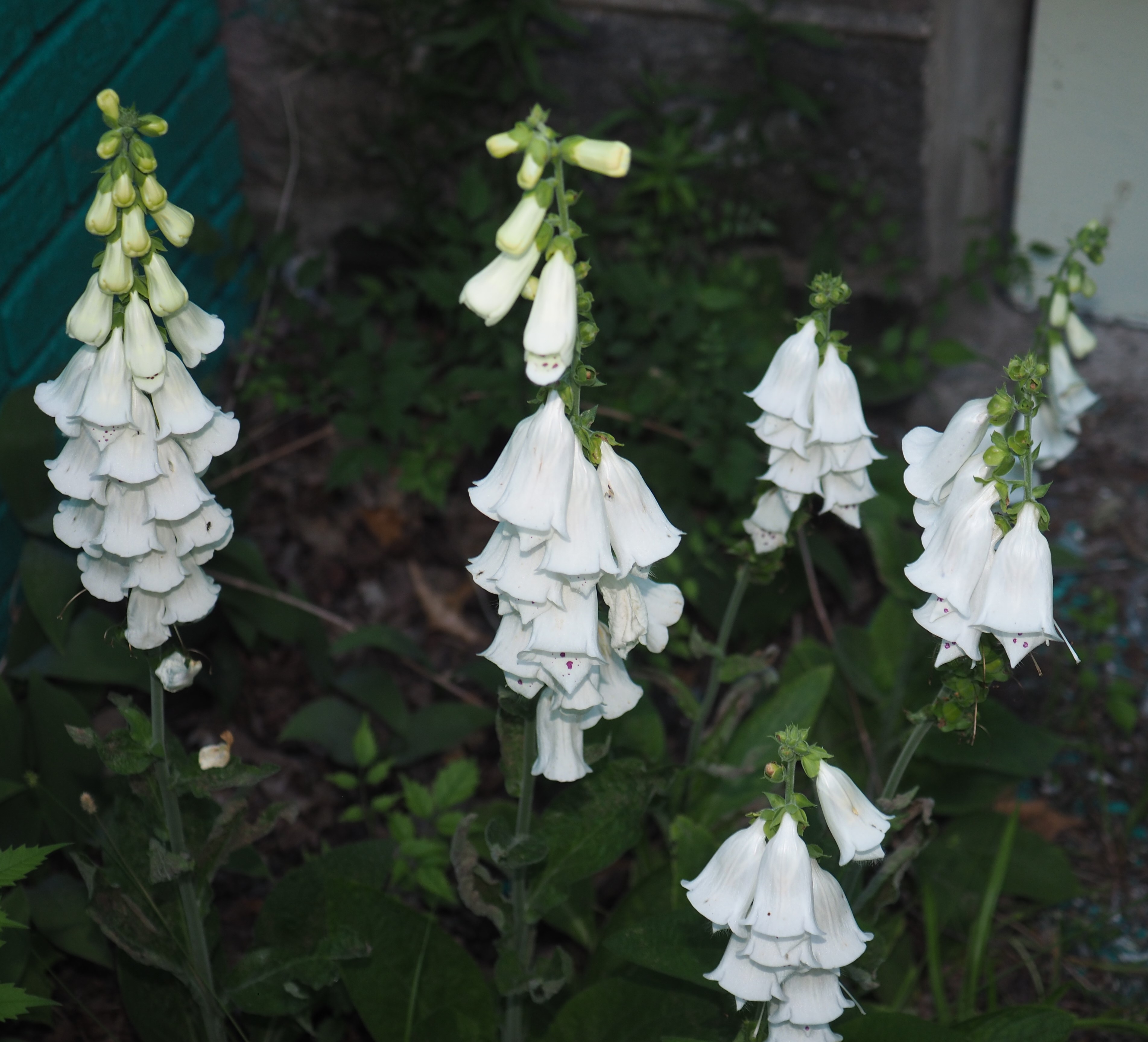
Here is the pretty Cinquefoil, Common Day Lily, and Fleabane.



Here we see the Rose Campion. It had gone awry years ago but last fall I potted a stray plant and it now sits in the deck box. The Blackberries are still green. Their long stem is longer and fuller of horrid prickers. But the Raspberries are silently turning pink.
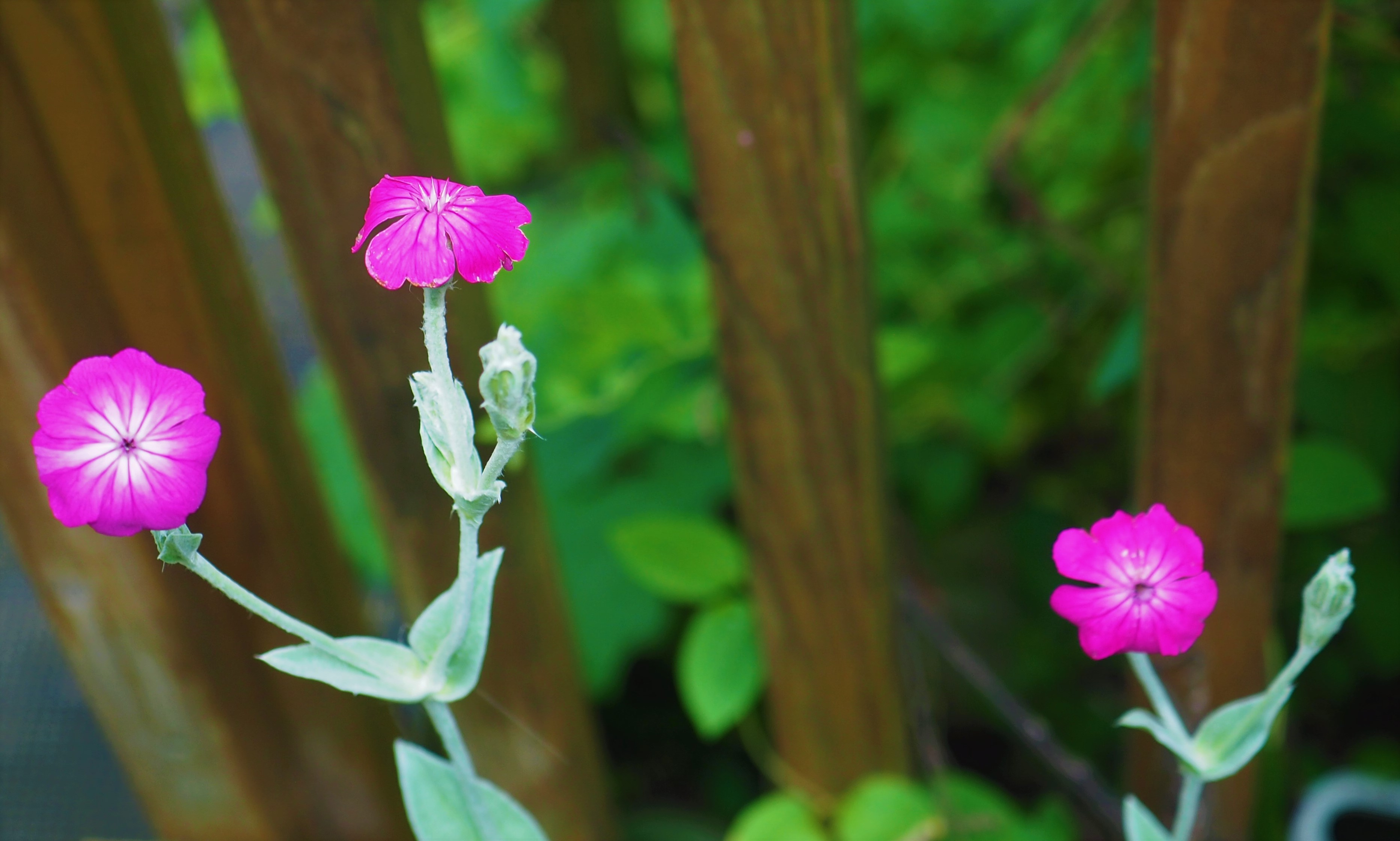


One day the leaves got very green overhead. Then the sky got grey, and I hear there was an amazing storm, and then rainbows. Tim Lincoln was driving towards one and finally the end of the rainbow crashed into his car's hood.

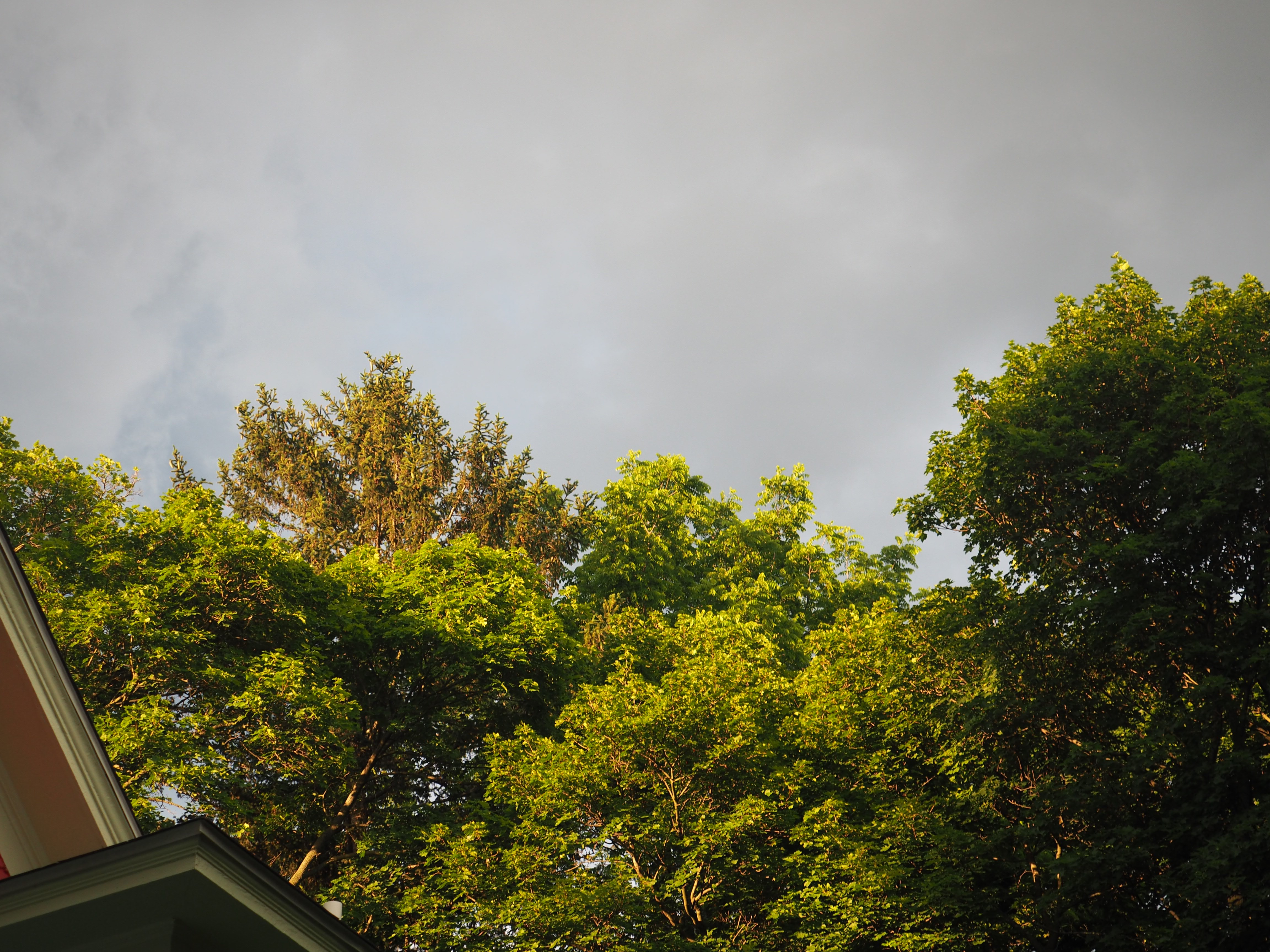

Some of the less beloved creatures are nevertheless among the most beautiful. Look at this red Mite! It has a little cousin, THIS tiny Mite.
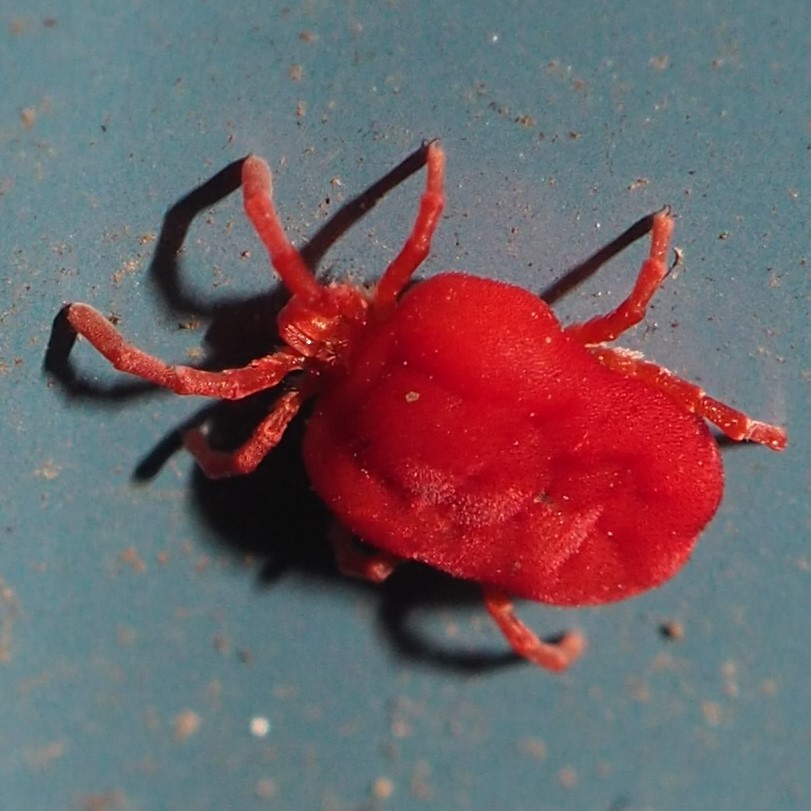
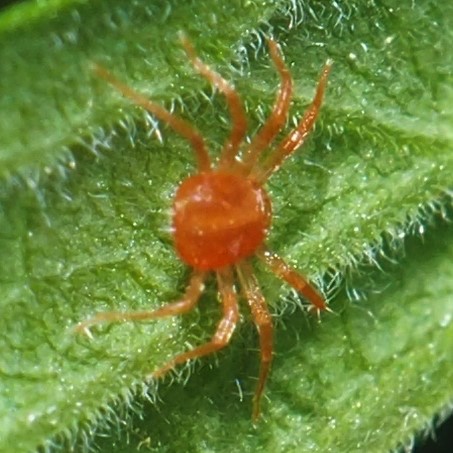
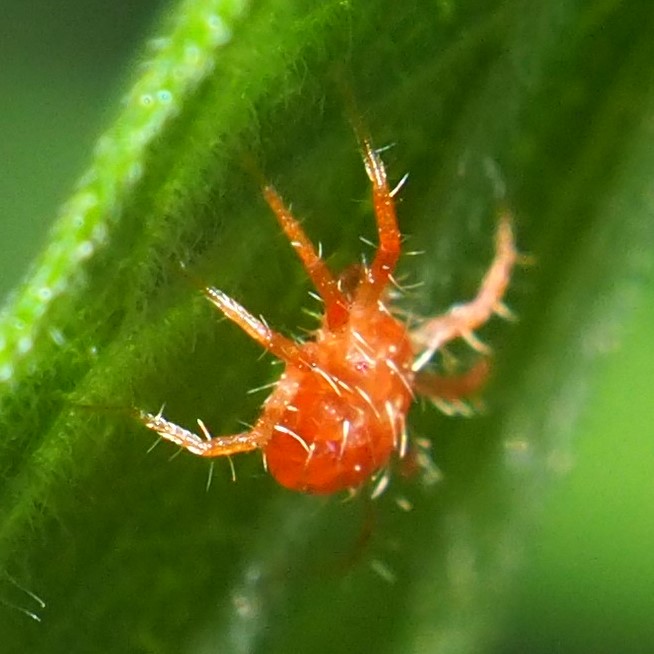
Since we are into eight-legged creatures, we can segue right into the Harvestmen and then into the Spiders. Here are a few Harvestmen.
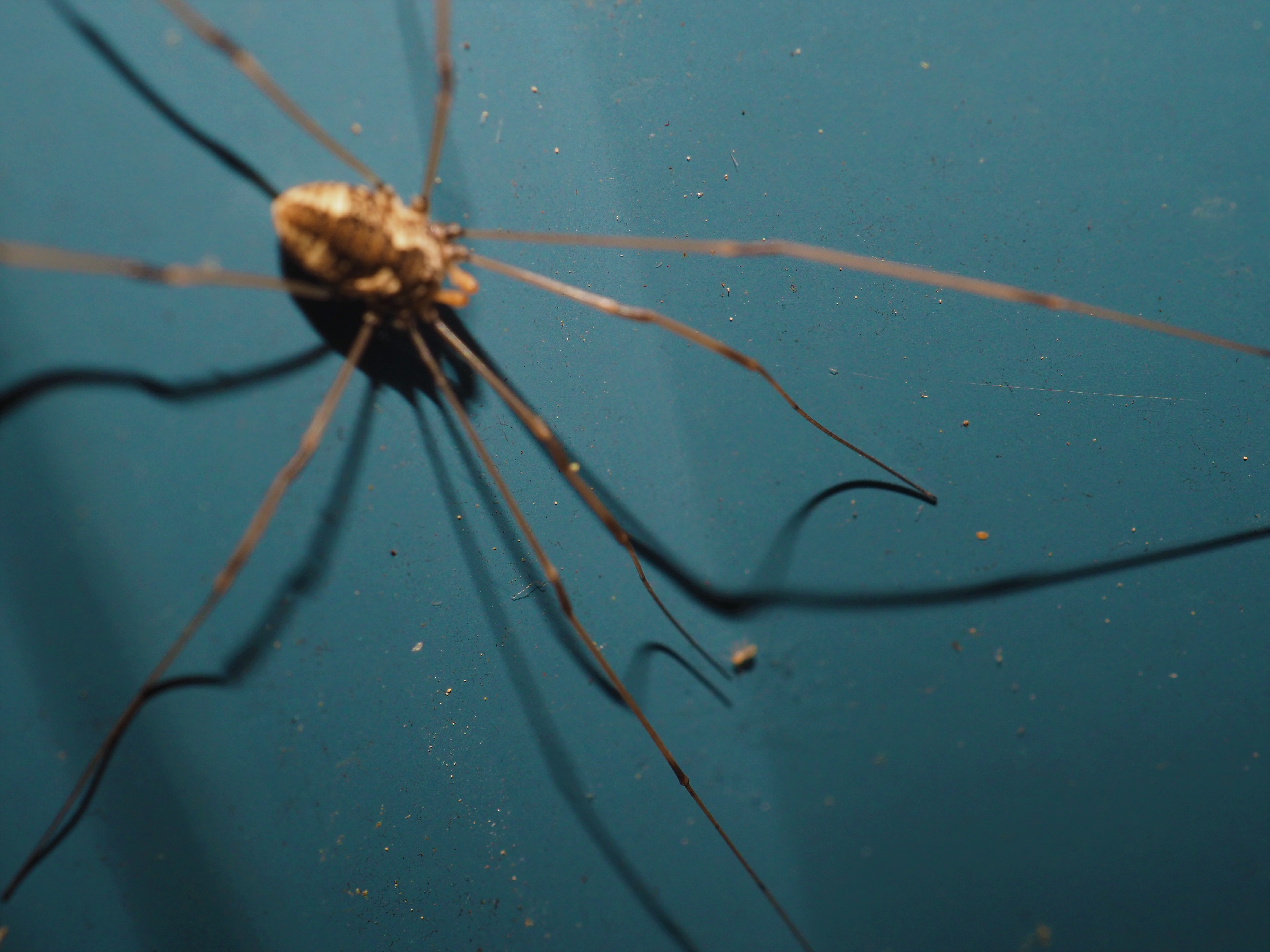
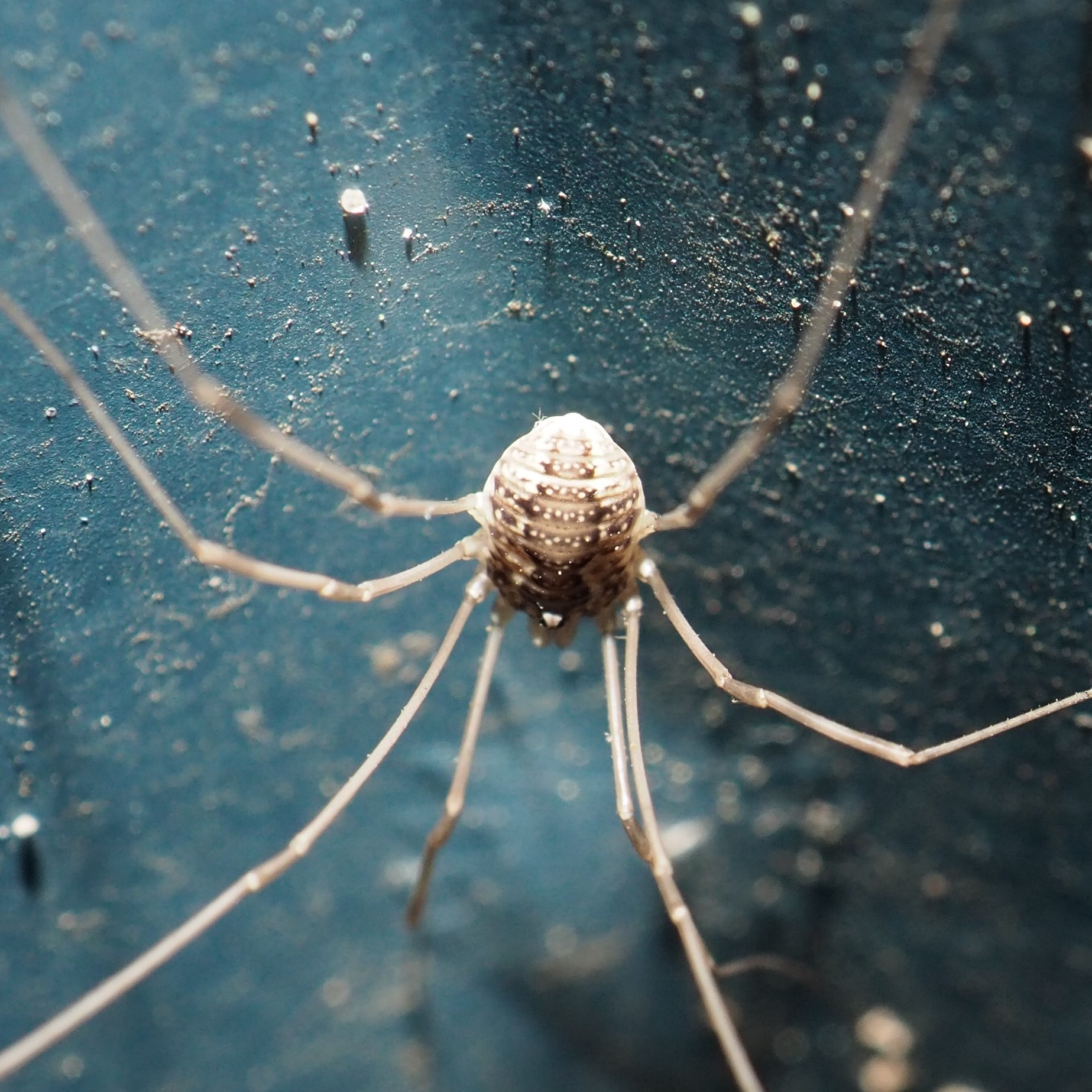
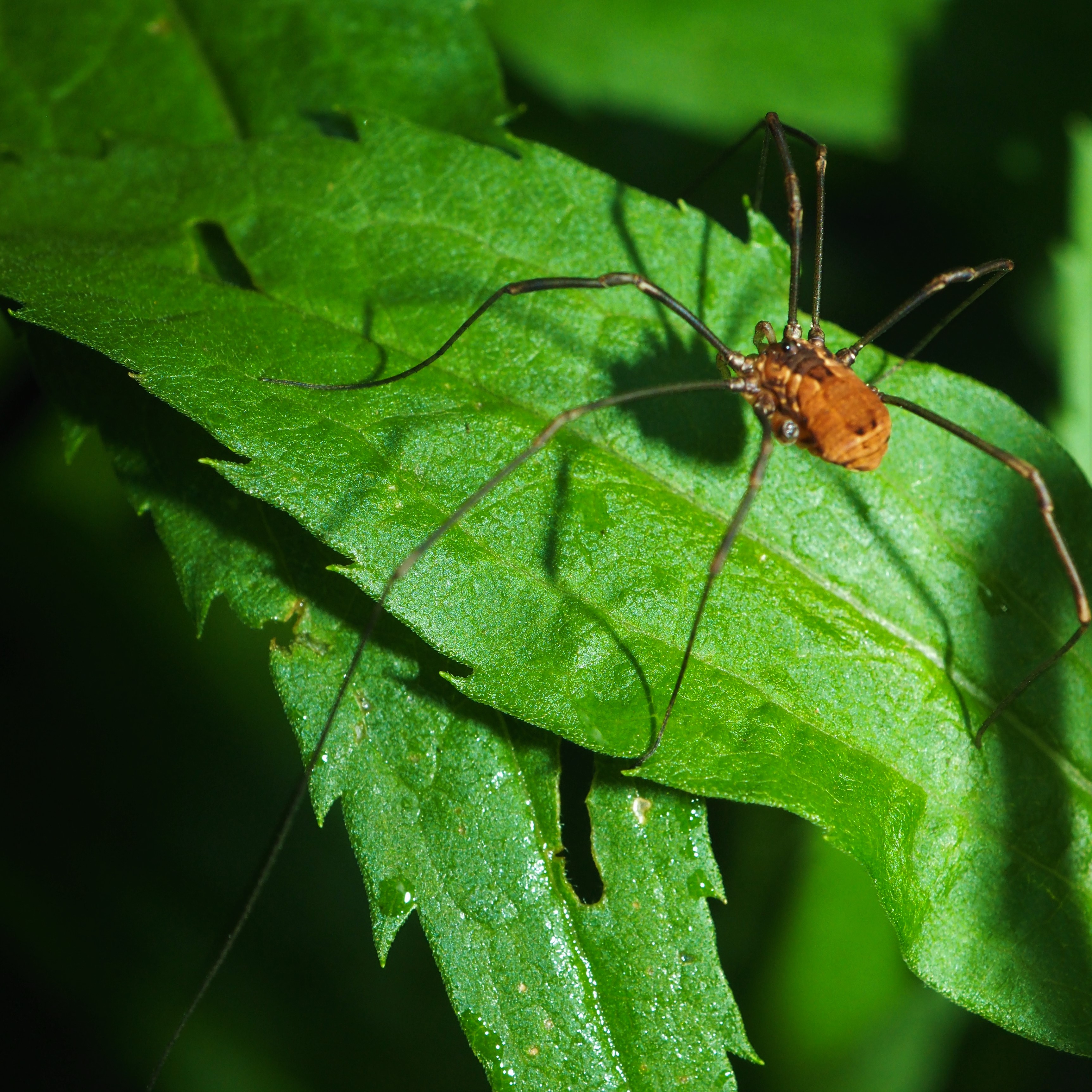
The Spiders! Here is a colorful sight - a Common Candy-Striped Spider!
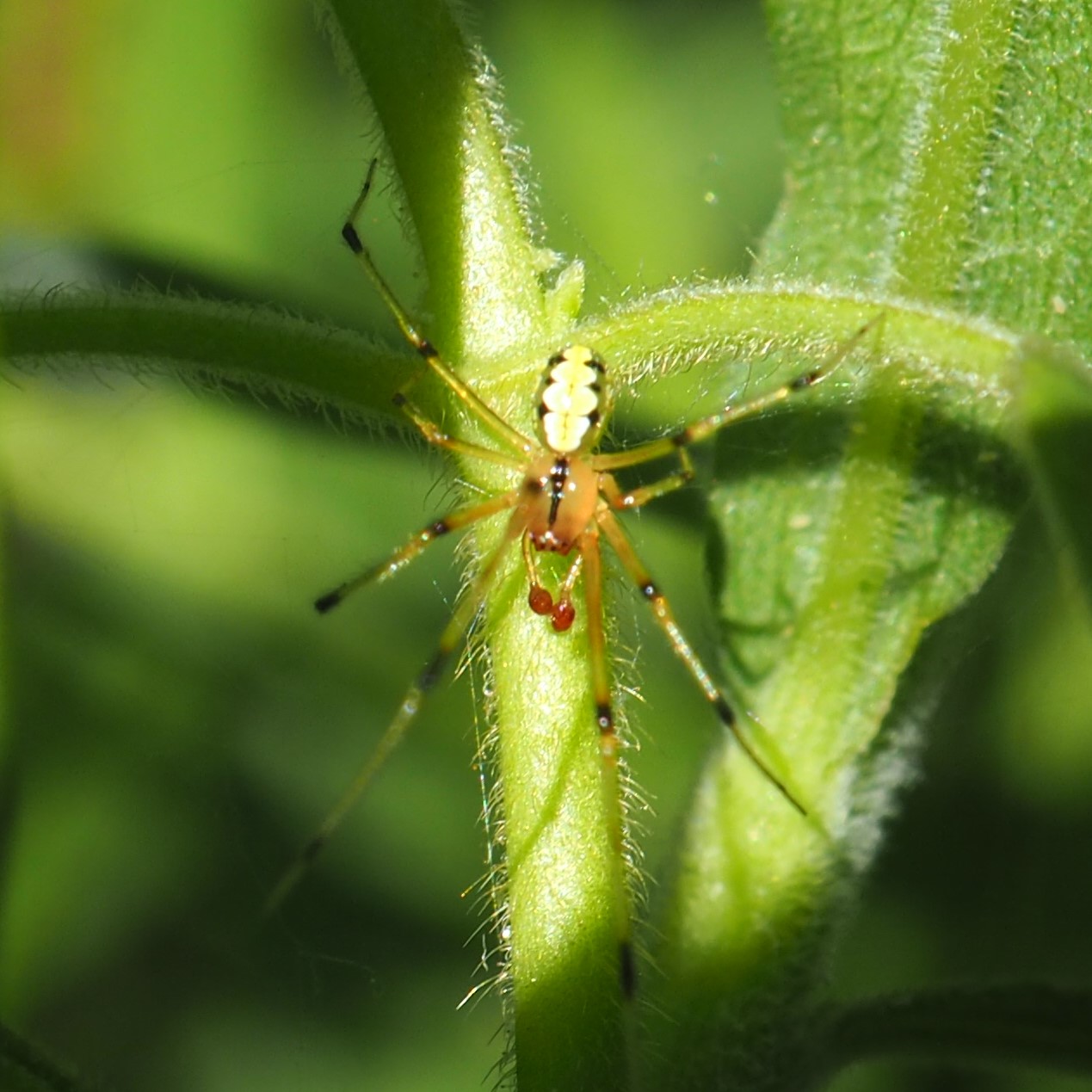
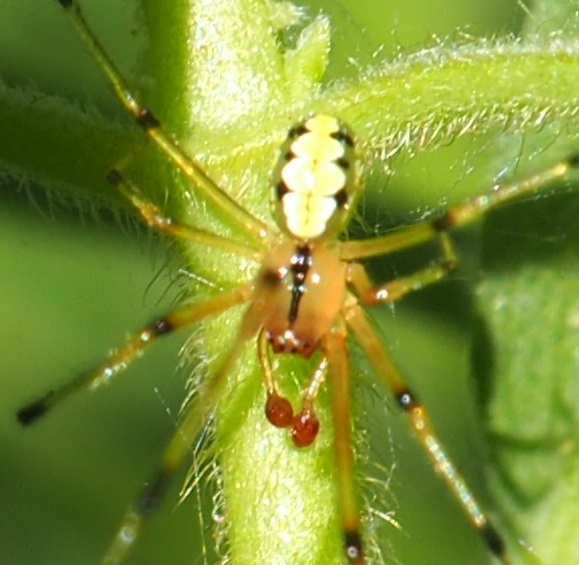
There were MANY Cobweb Spiders. Let's see just a taste. The third one seems to be noshing on one of those pesky Phytocoris Bugs.
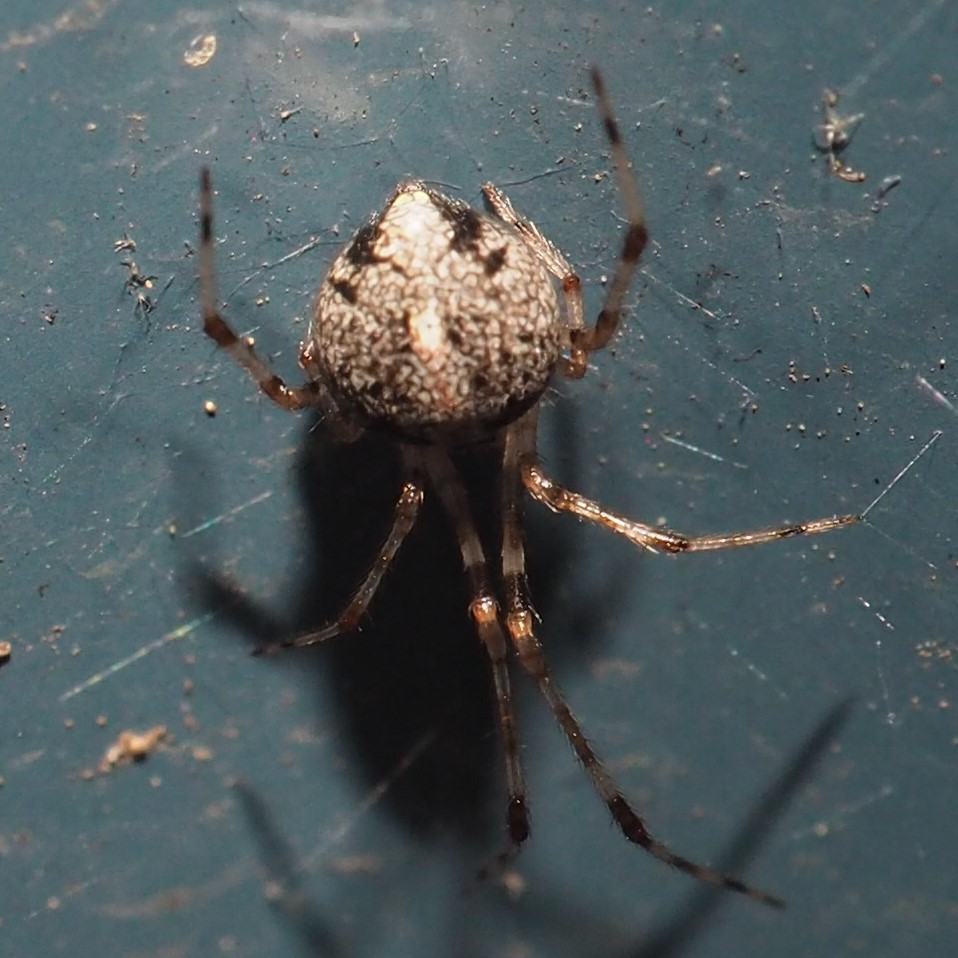


Here is the Euryopis Spider. In frame 2, she must be having a large Ant for supper. And in frame 3, an egg mass that someone once told me is made by this Spider.
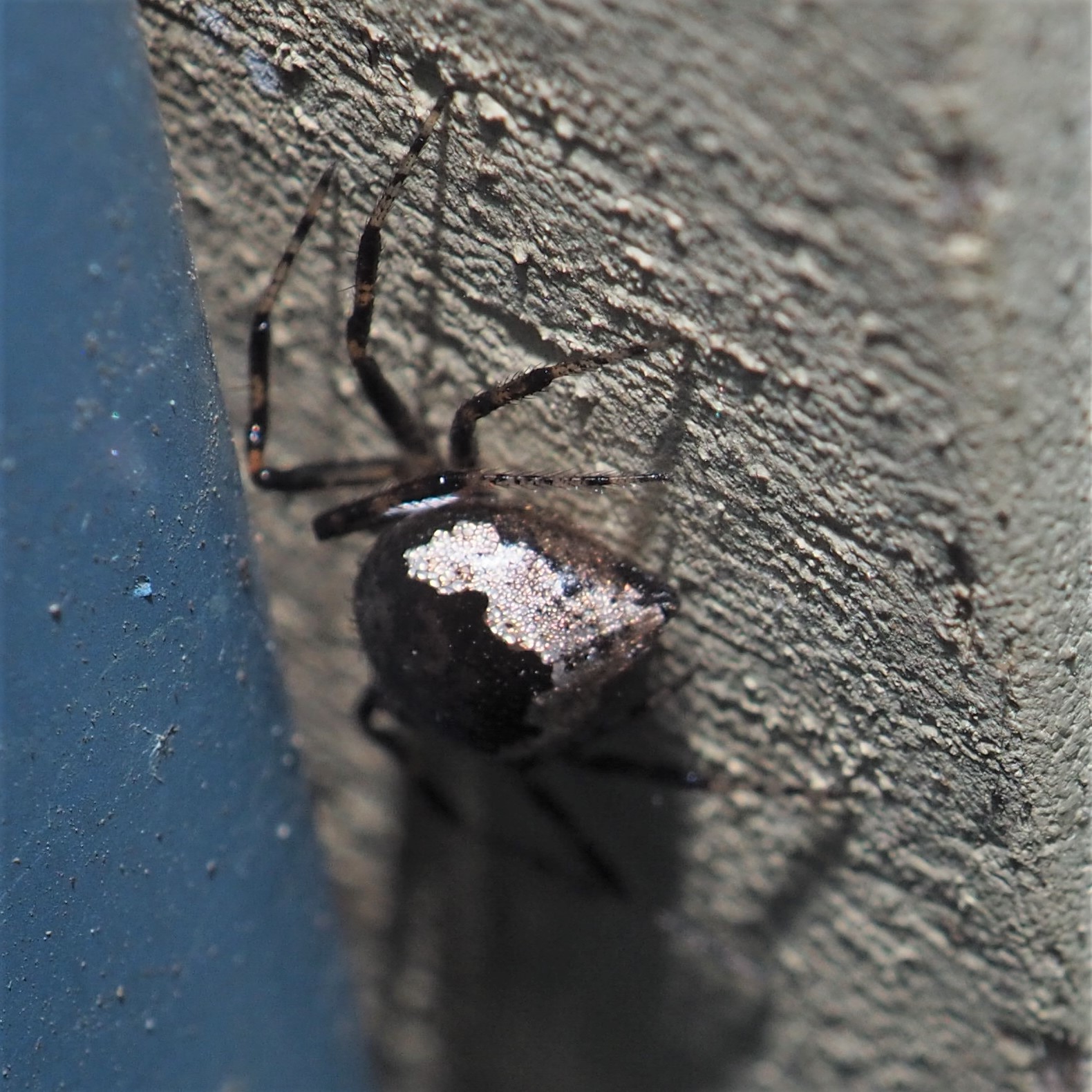

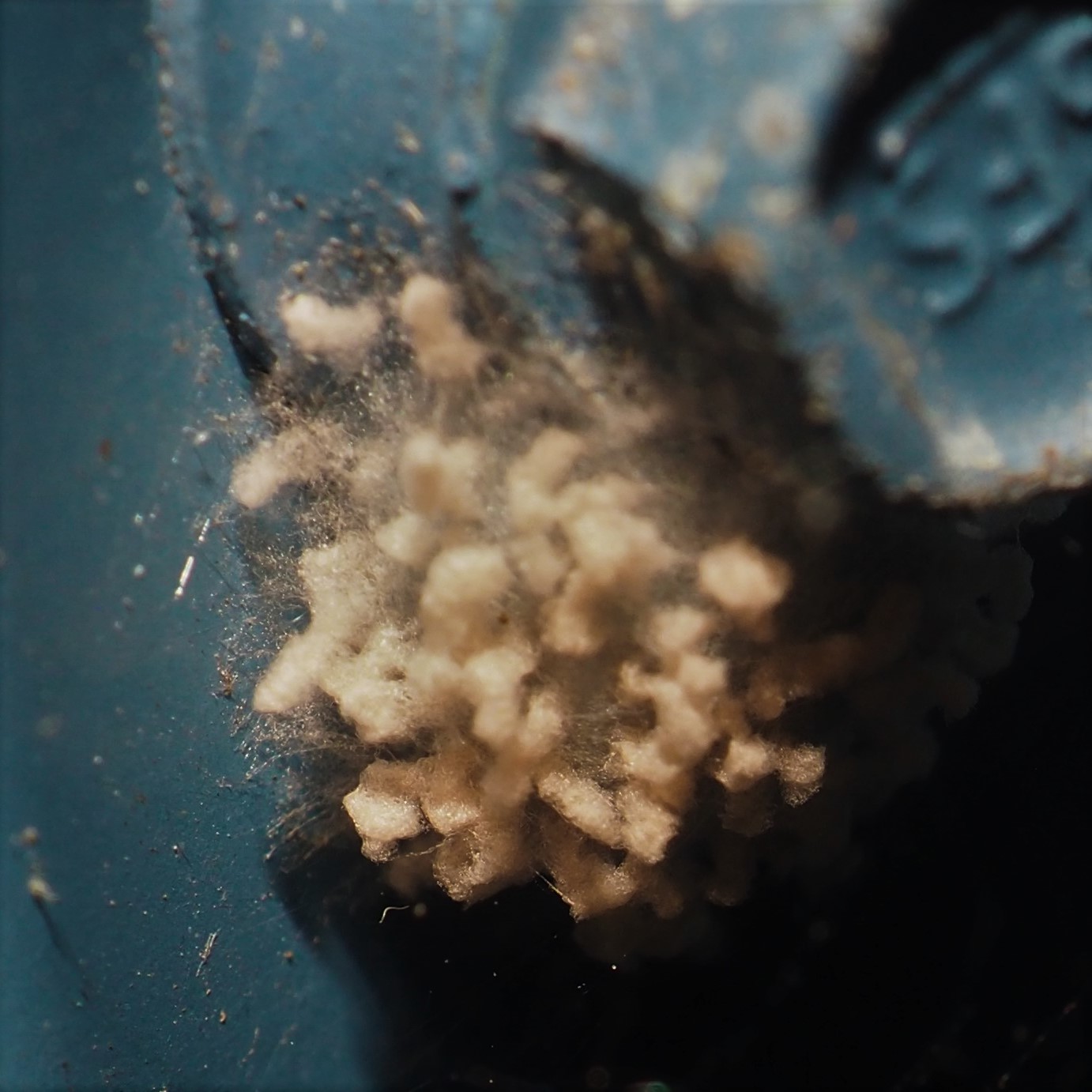
Here of course is my very favorite Spider, because of the "face" painted on its abdomen. Third is another favorite of mine, Naphrys pulex the Jumping Spider. The next one is probably a juvenile.
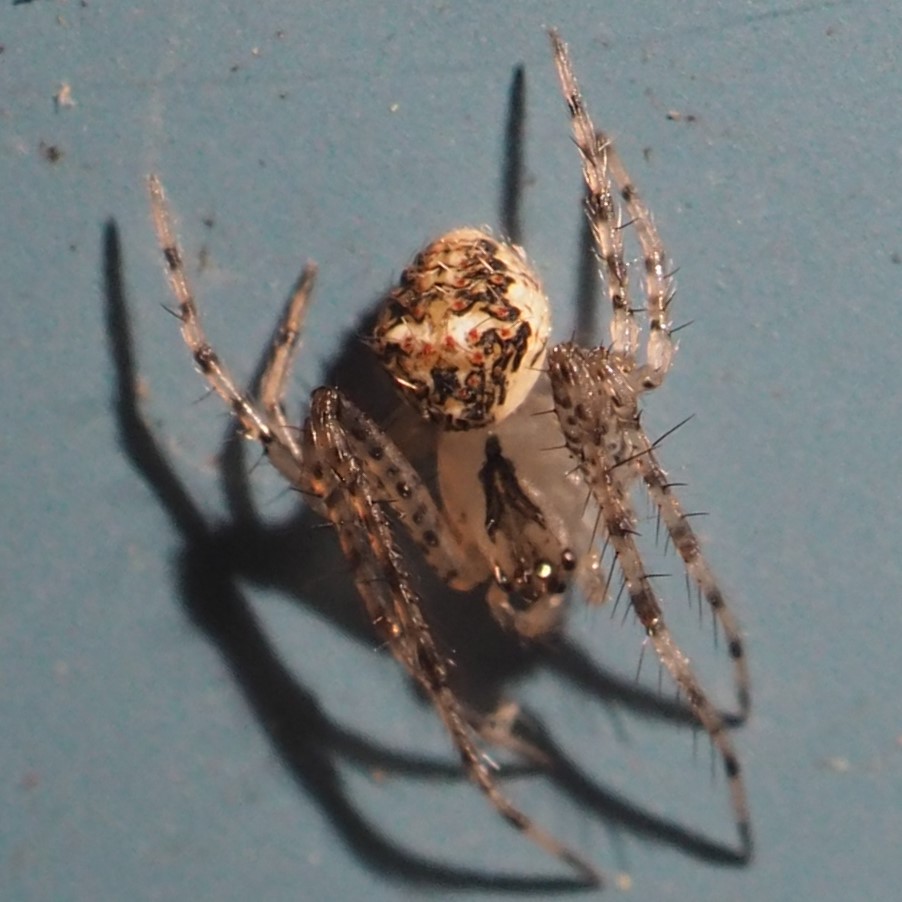
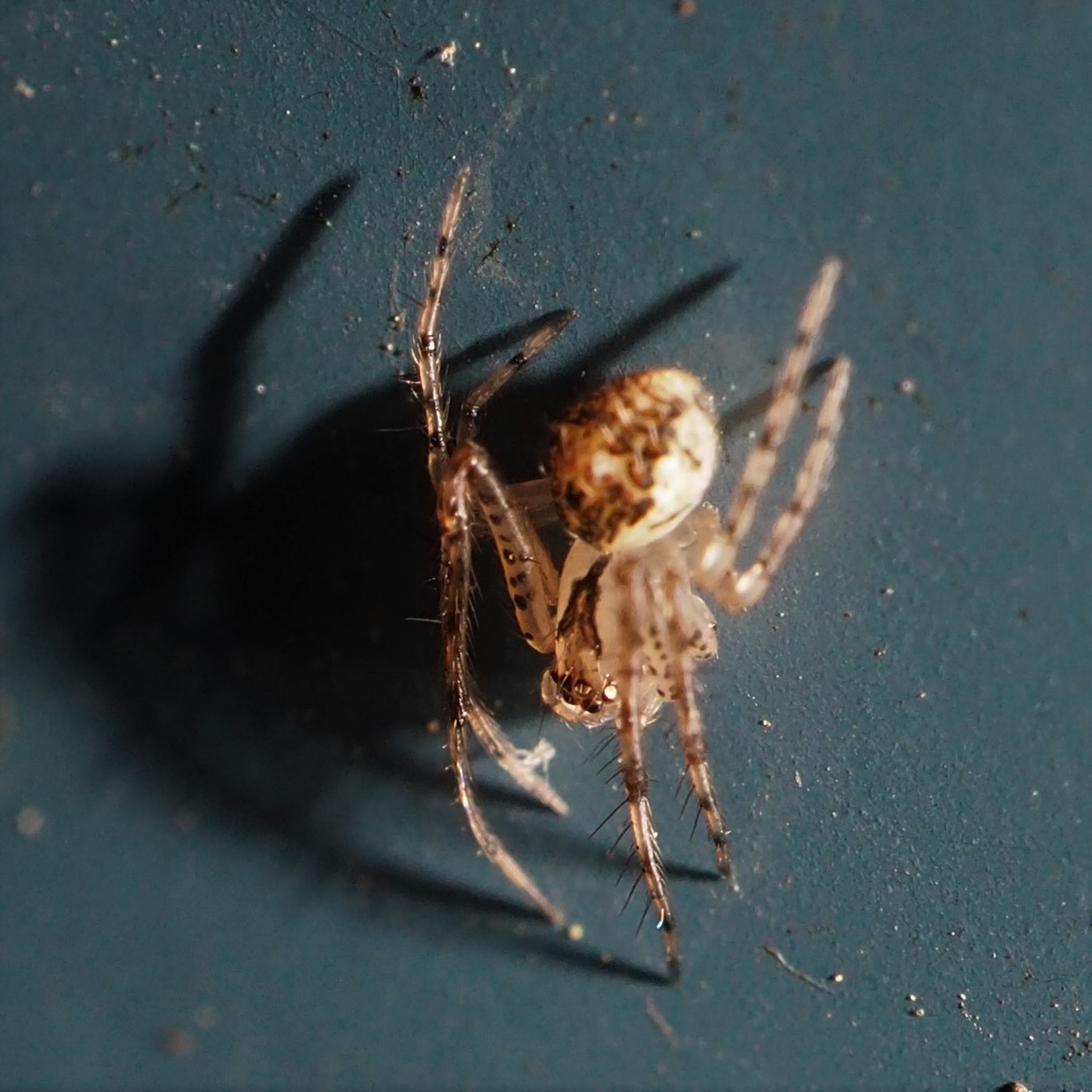
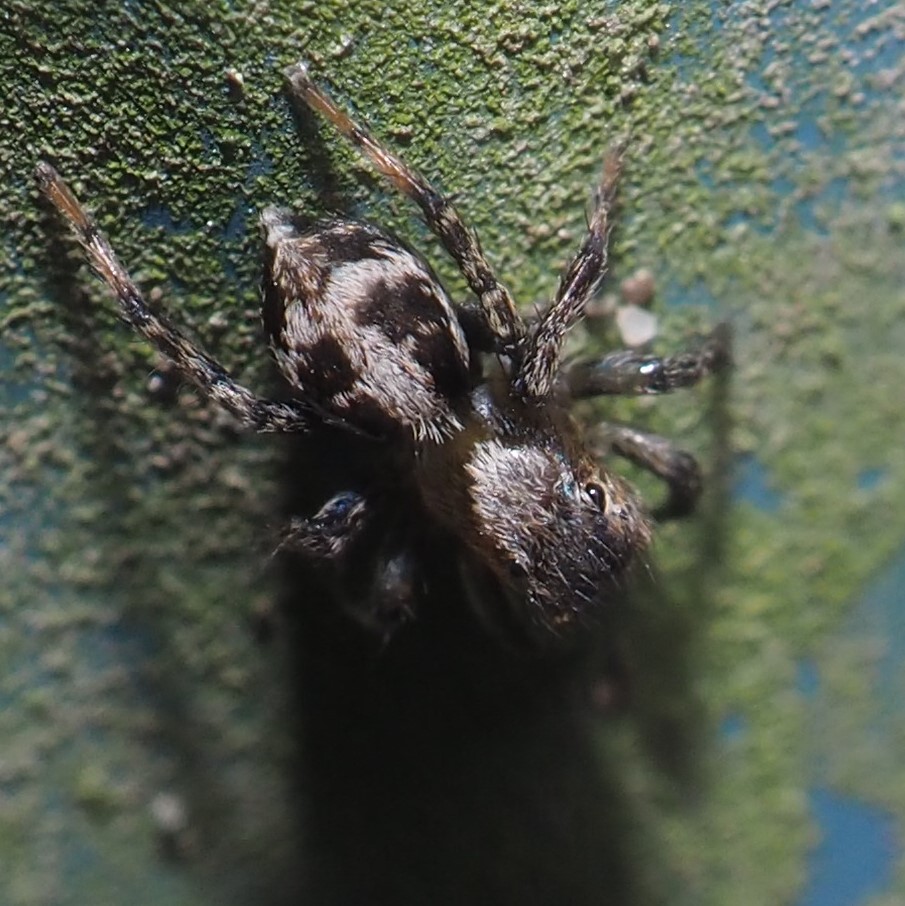
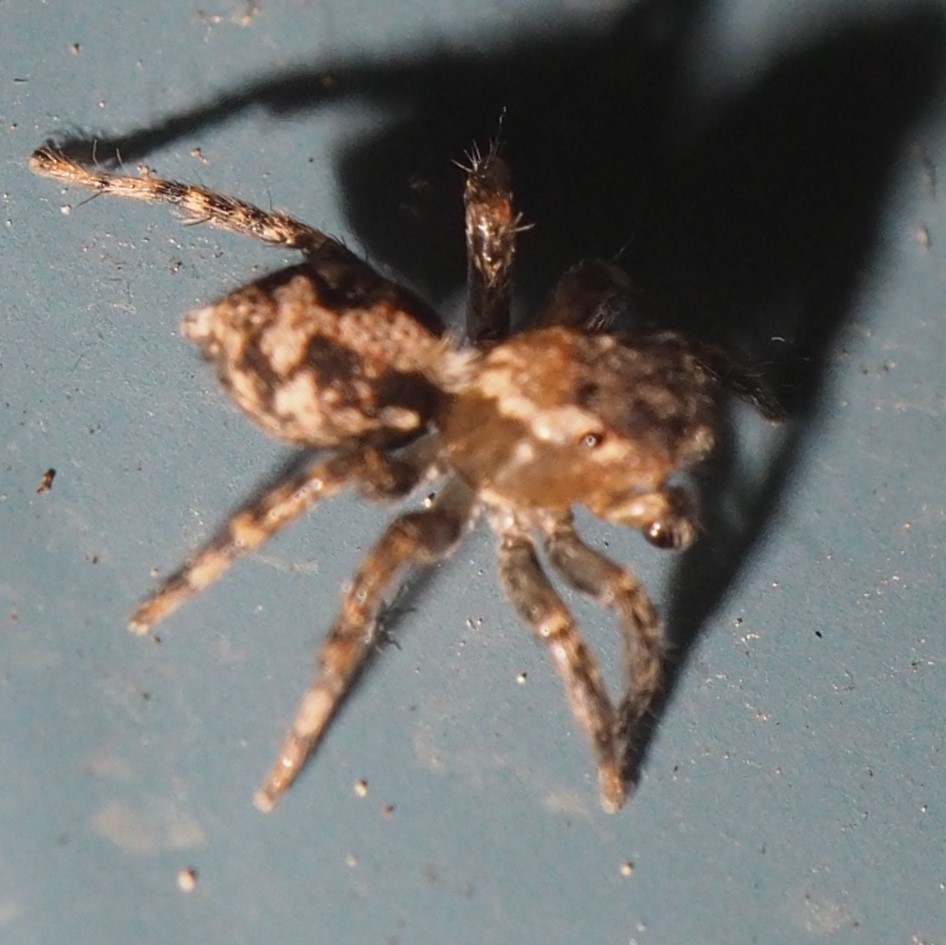
Here's a new Jumping Spider for me. I love the red bits. And she makes a spooky shadow too.

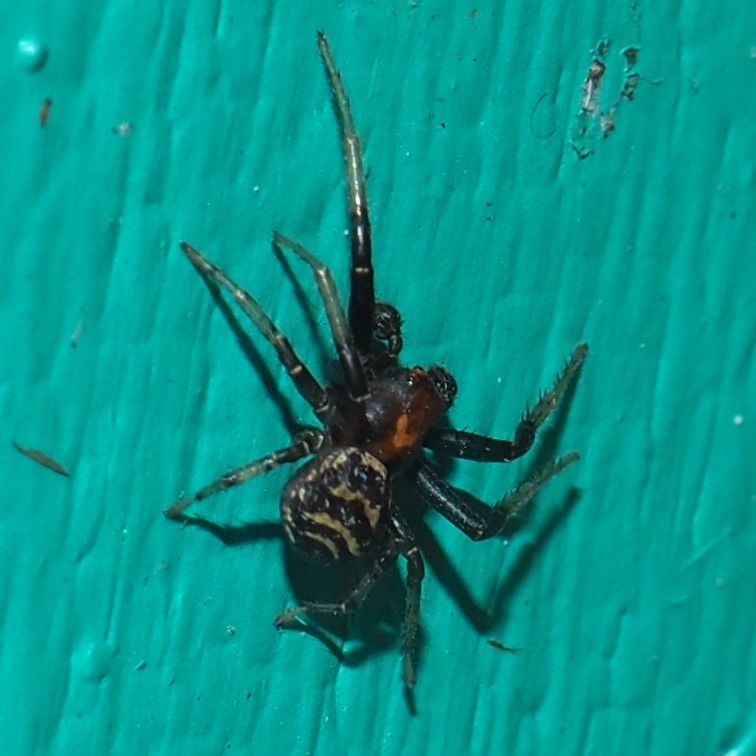
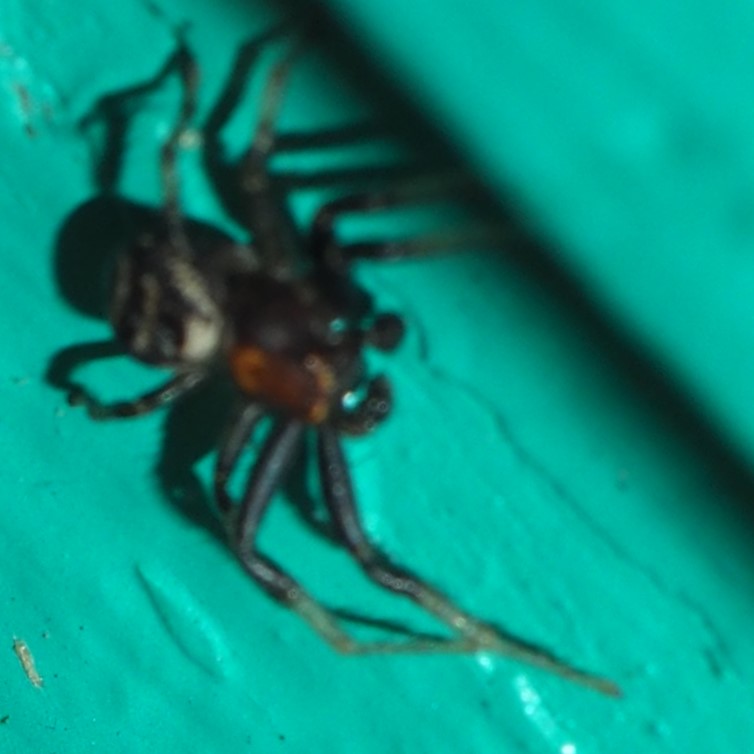
I do believe this next is a Springtail. I usually associate them with Early Spring and if you go by the temperature these days, it is NOT EARLY and probably not even SPRING. Oh wait, a week or so ago, I seem to remember that we had a couple, including a Globular Springtail.
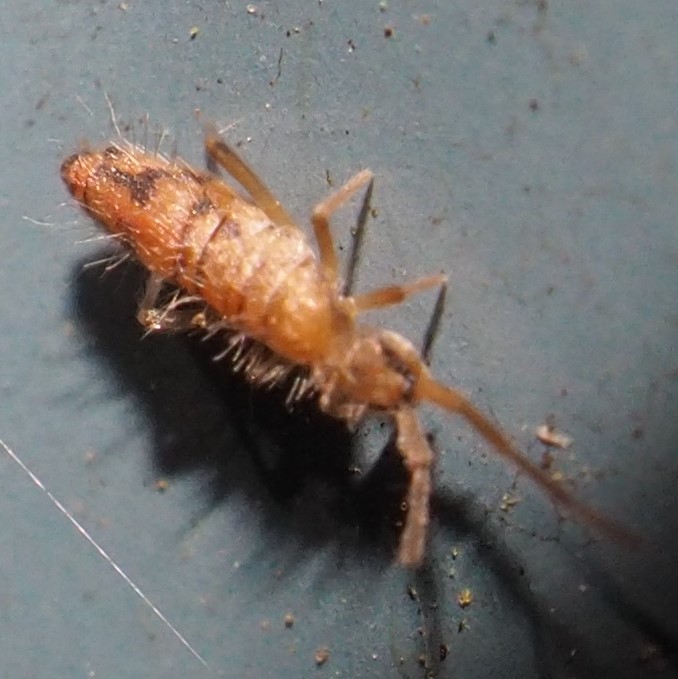

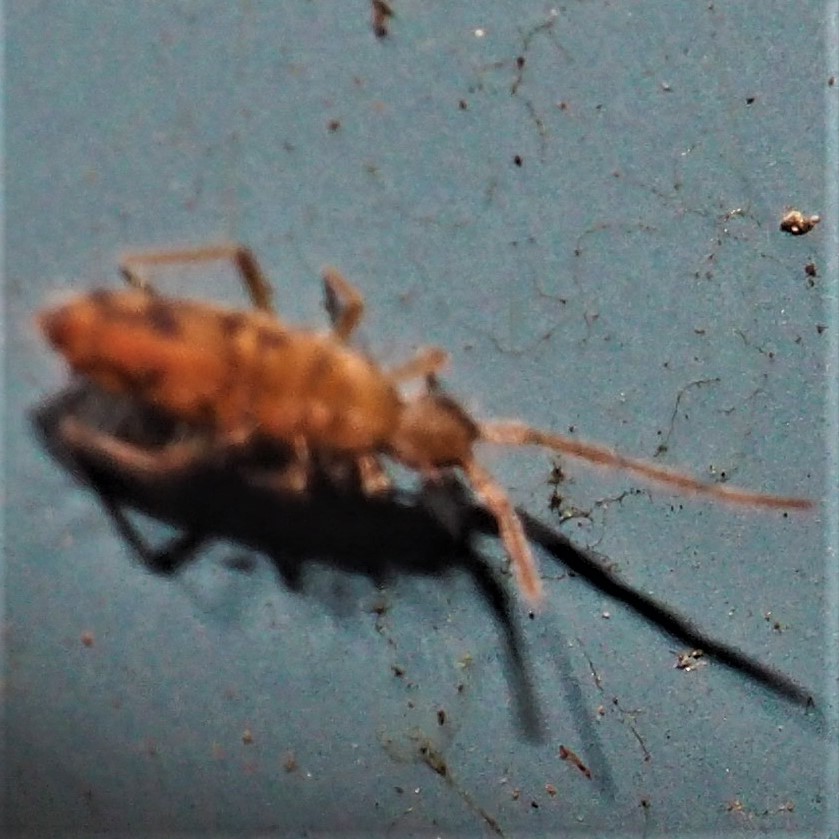
Let's check out the Wasps. This first one is a Chalcidoid Wasp, with lots of iridescence. I don't know what the next one is, the green one, but it is pretty iridescent too.
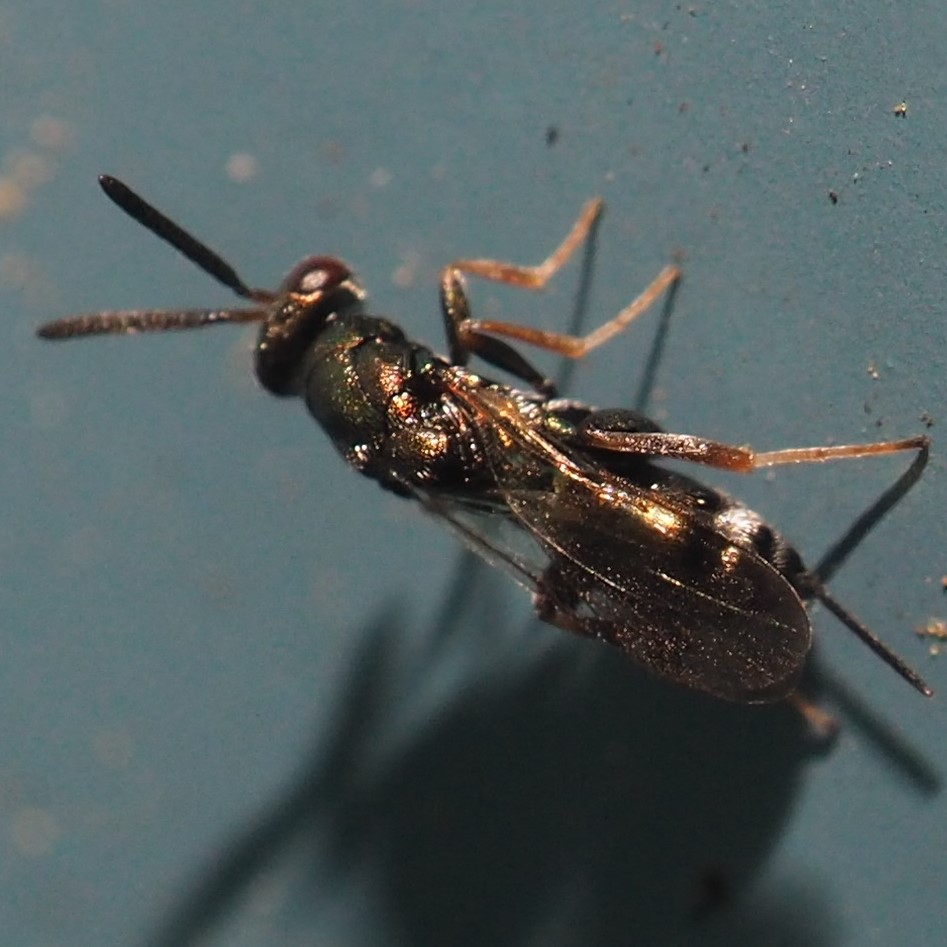
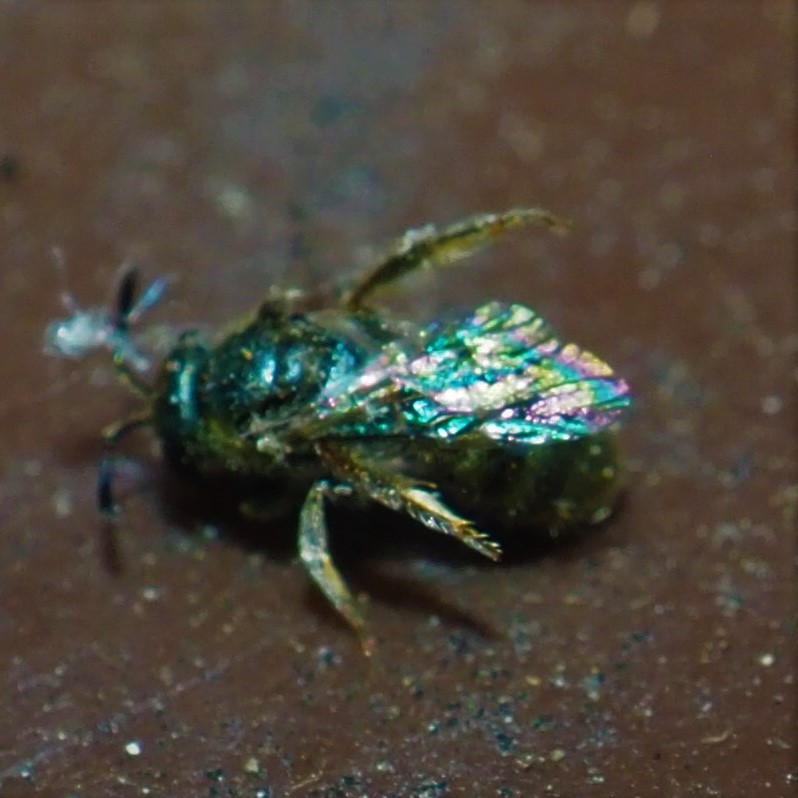

Here are a couple of Ichneumonid Wasps. Third is a Mud Dauber. I could see why it was called that. It just dug and dug into the loose sand around the Pond. This morning there were piles of dirt around where they had been digging.
.jpg)
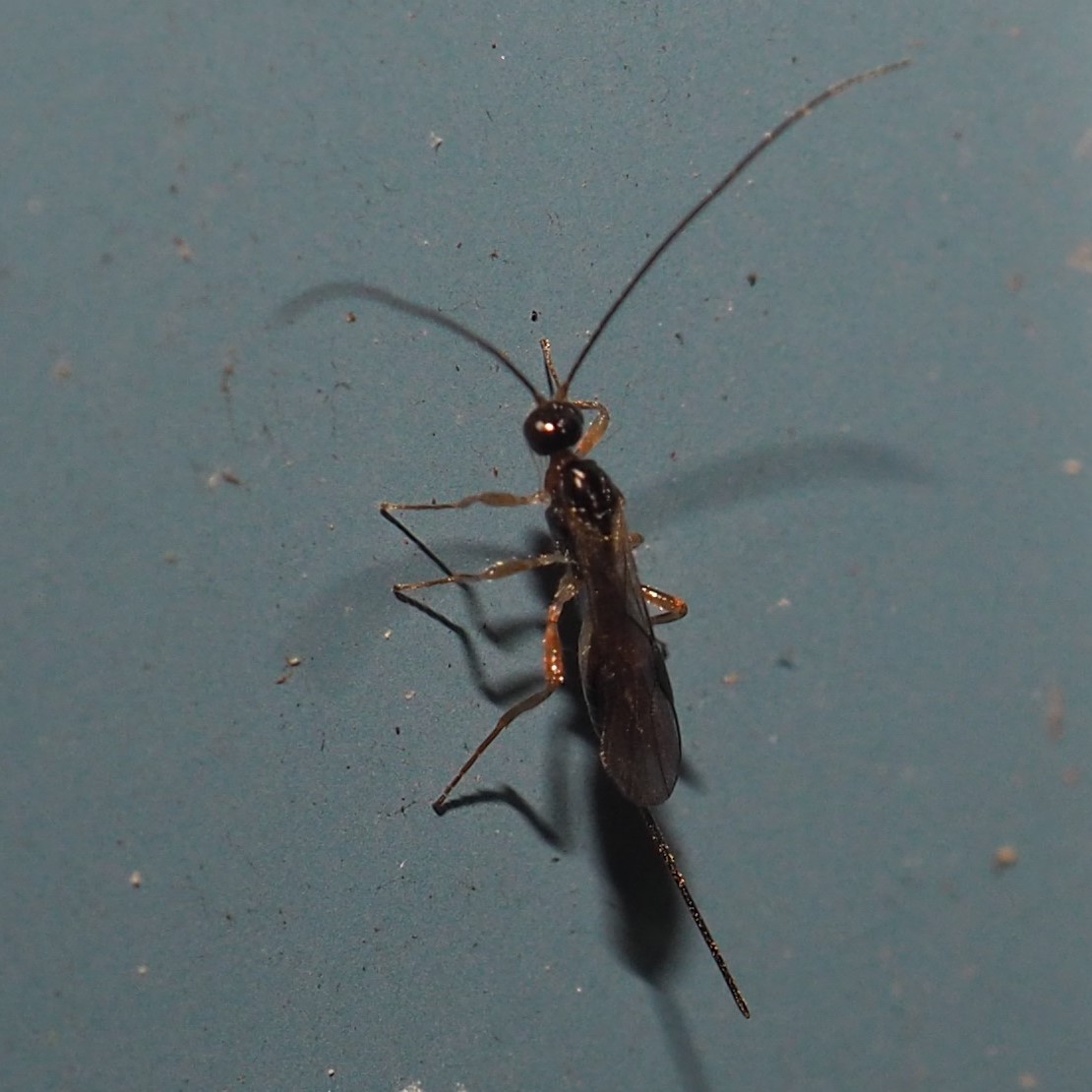
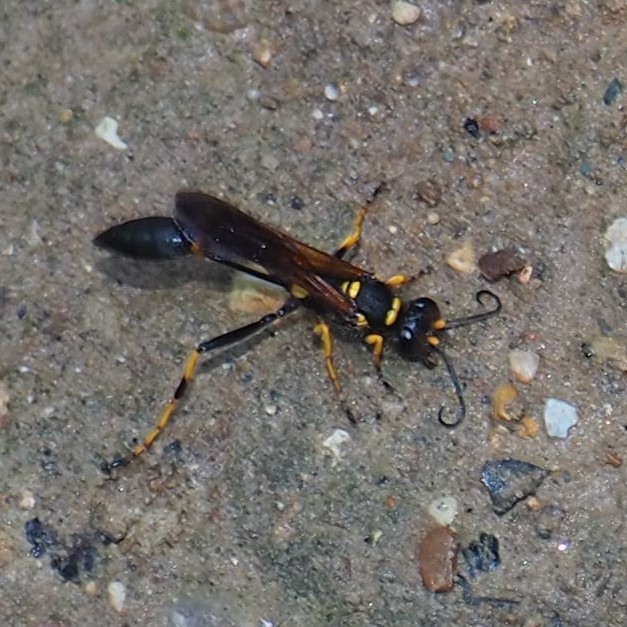
Here is that Yellowjacket Queen again.
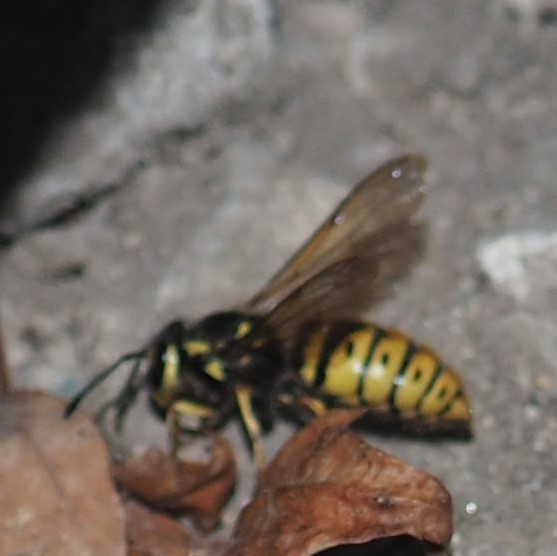
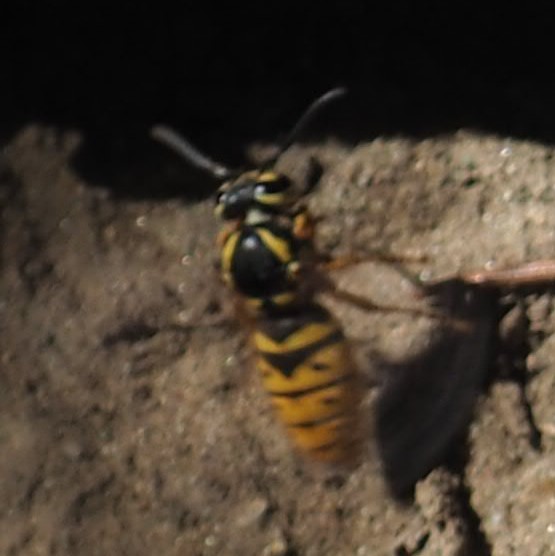
Here is what happens when Spooky the Cat drinks from the Pond. It stirs up the Water Striders so that they race out to the little leaves that one of the new Lily plants has sent up to the surface.

Here is a quick enlargement of the Striders on the little lily pad. Click on the picture to enlarge it. Every once in a while I show you what has happened as the inbred baby fishes grow up. Now there are several that started out life as plain brown, but have gradually taken on lovely color patterns. First is Pebbles, the oldest of the babies born last fall. Next is one I call Light Pebbles, and then two pinkish babies, Freckles and Little Chico. They are more pink than blue at this stage. I love watching the new blends!
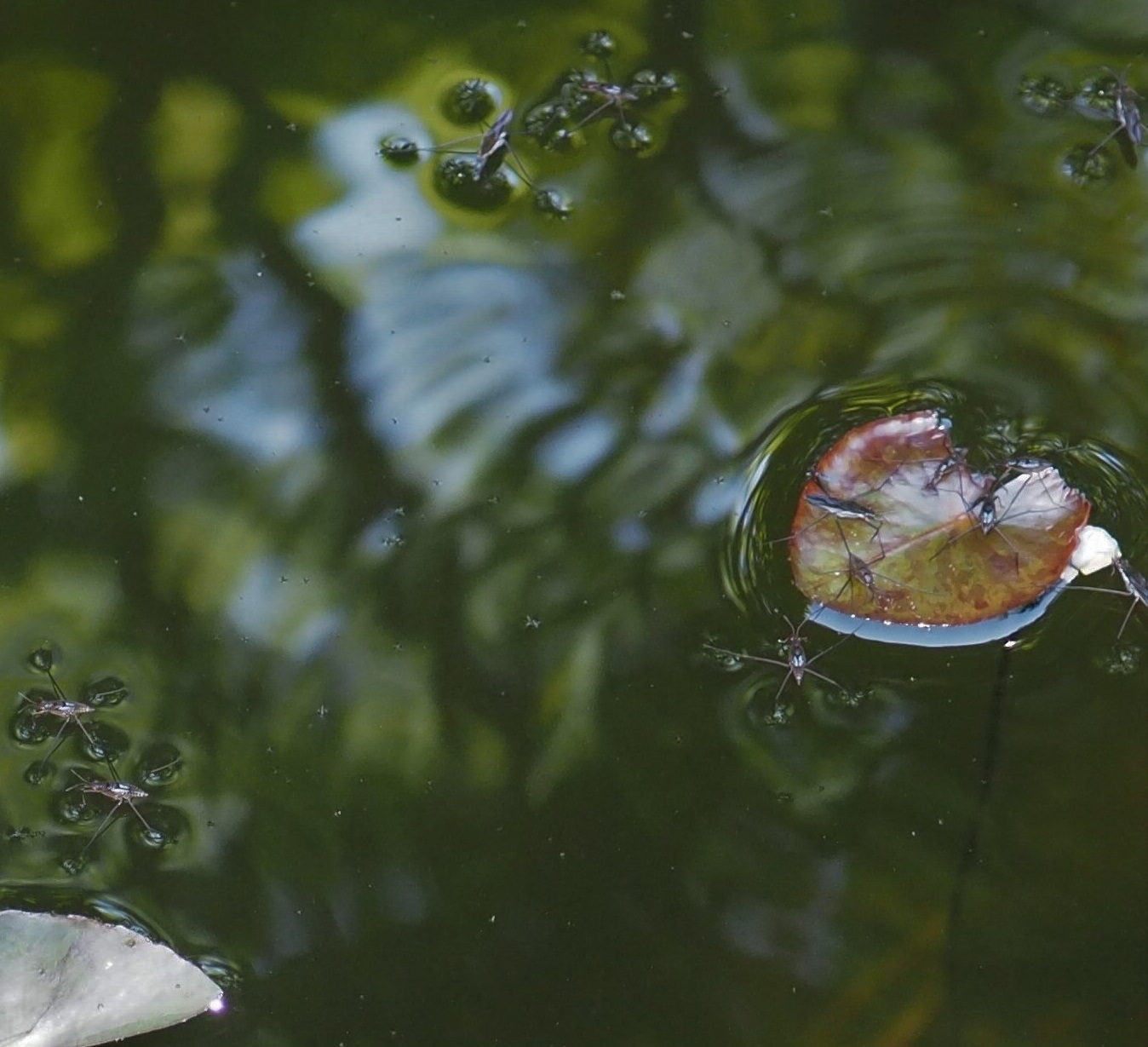

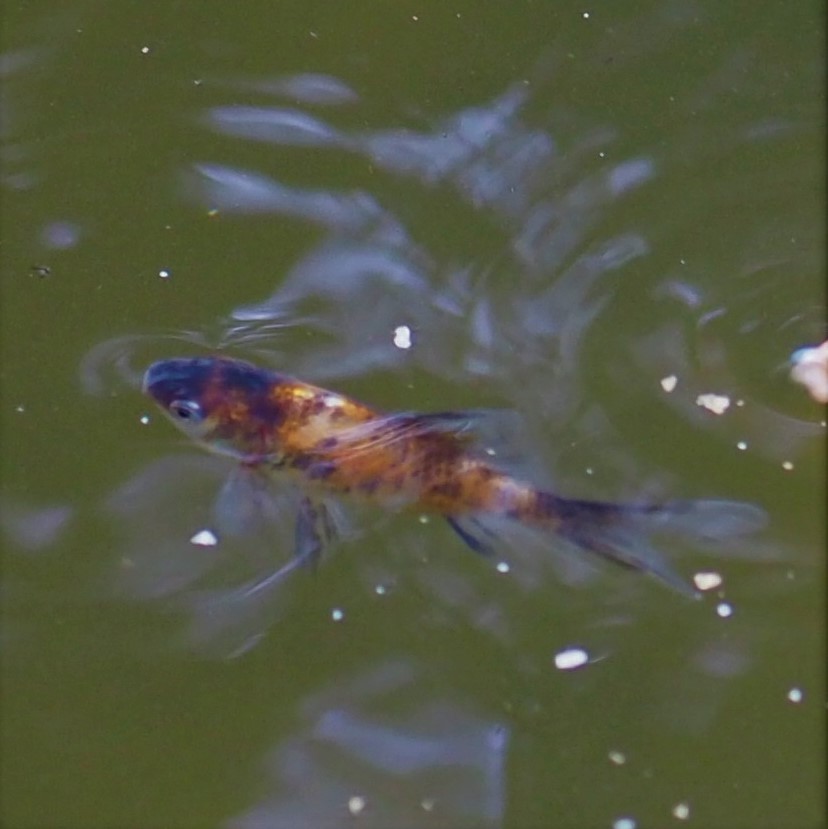
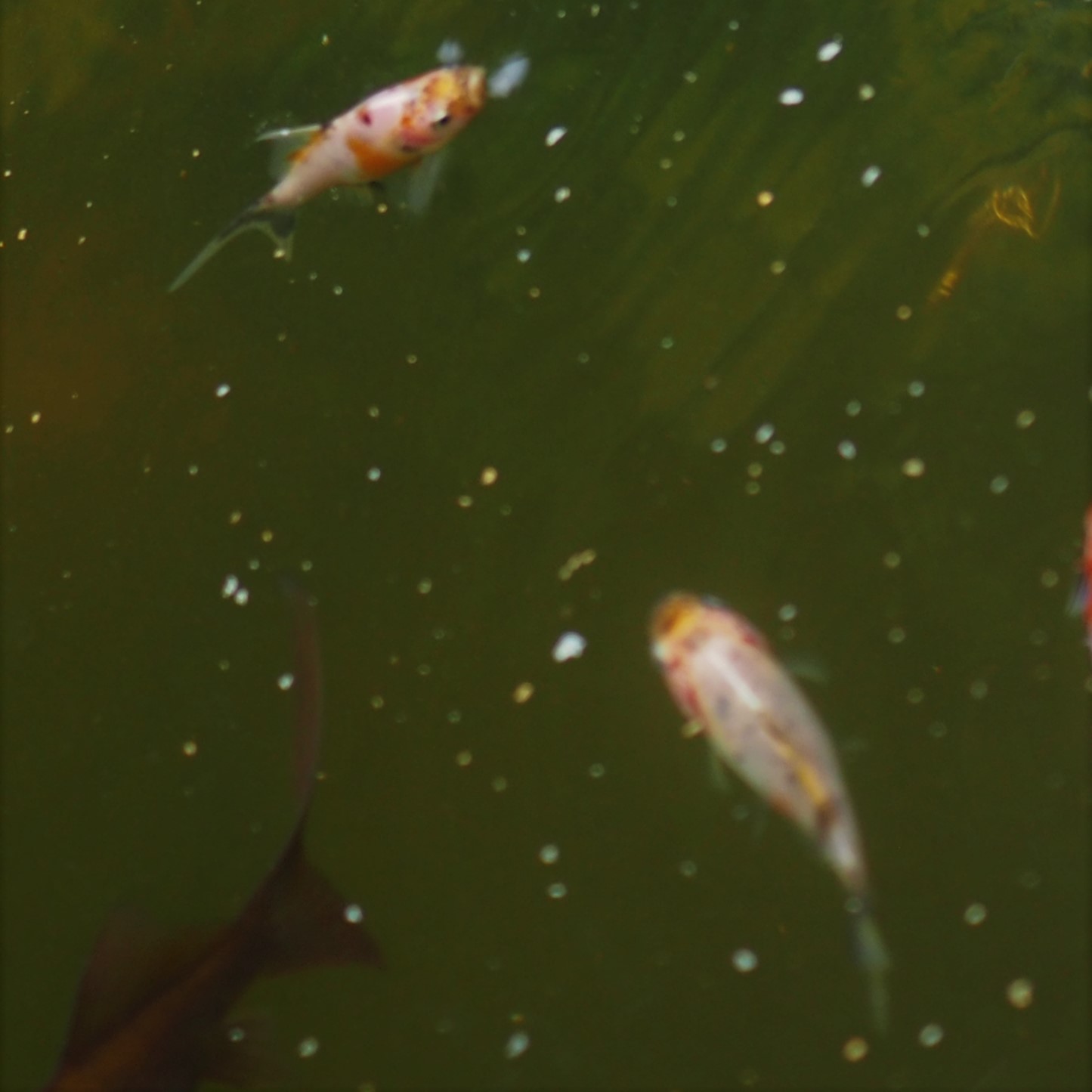
Well, my friends, I hope life is still good for you. I used to say "We are all in this together." I feel that more and more. Aches and pains come and go, come slightly more often than go. Fortunately, I can still get out into the yard and watch the multiplicity of living things and how they interact. And I feel I am talking to you and you are laughing with me. Let me hear from you when you have time.
Love, Martha
Back to June 13, 2021
Forward to June 27, 2021
Back to main menu
copyright Martha O'Kennon 2021







































































































































.jpg)








